




We strive to make a positive difference in people’s lives.
We care for the mind, body and soul of our colleagues. We listen, understand and innovate for our clients, as their success is our success.

We support our contractors and candidates personally and professionally.
We are responsible, always nurturing the communities within which we operate.

Our mission is to be the talent solutions provider that organisations and candidates want to work with and the most talented people want to work for.


Who we are
s temming from humble beginnings, we’ve firmly established ourselves as market leaders and partners of choice.
Since our inception in 1969, we’ve focused on delivering carefully curated solutions and services from a diverse collection of innovative, interconnected companies. Together, we are the Morson Group family.
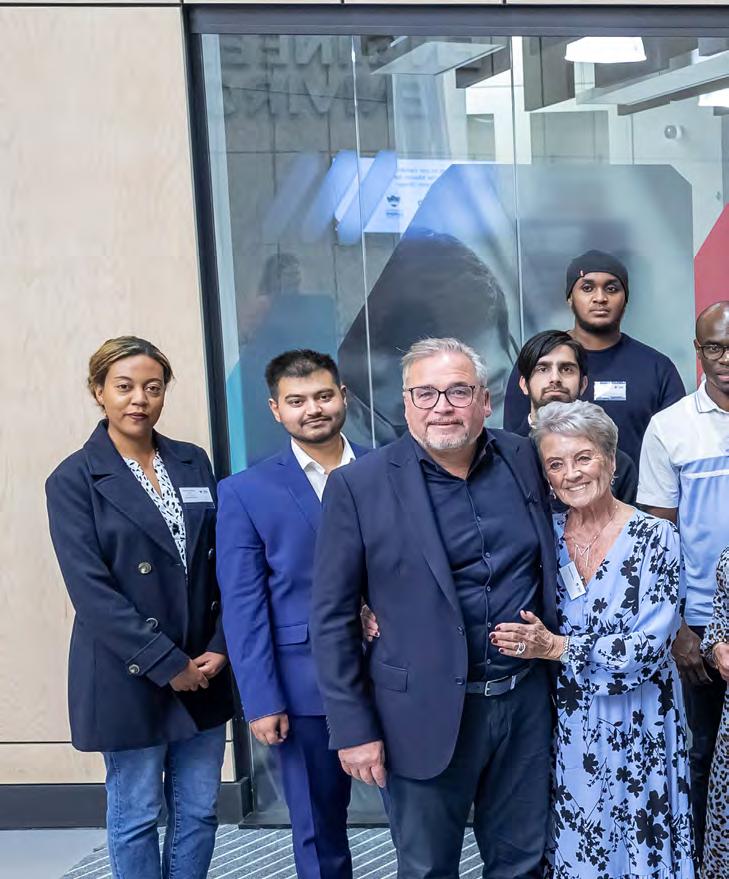
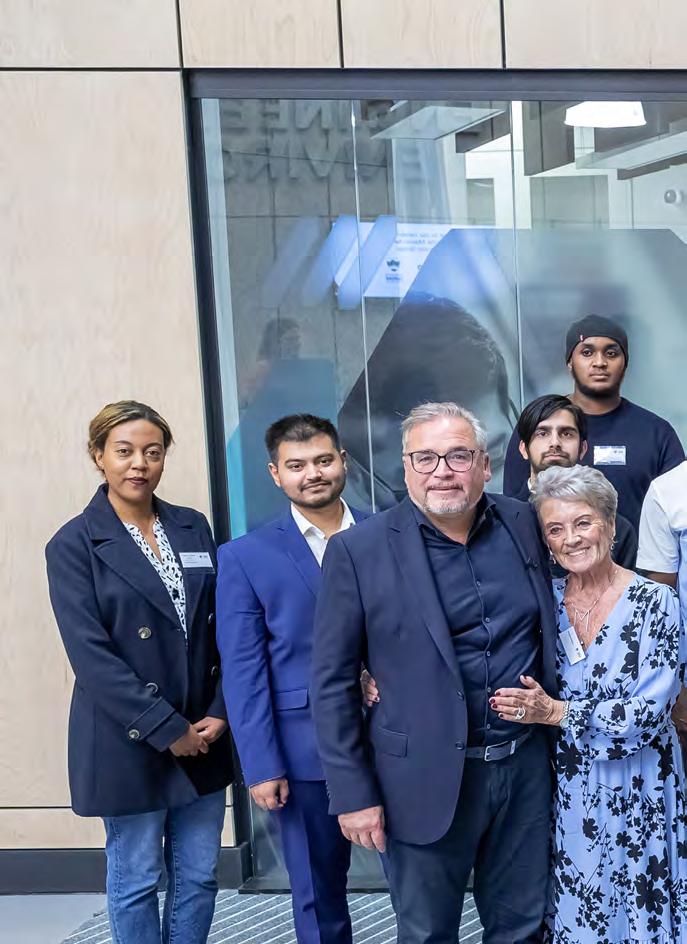
#WeAreCollaborative #WeAreCaring
#WeAreCurious #WeAreCourageous

Our suite of values, and their associated behaviours, guide our success. United as one, we combine specialist expertise with flexibility, commercial agility and willingness to go the extra mile.

Our independence and depth of offer enable us to think and operate differently. We listen, understand and develop sophisticated and intelligent solutions, ultimately giving our clients access to the right people at the right time whilst maintaining personal relationships with thousands of candidates and contractors.
For more than 50 years, we’ve continued developing and refining our Group of businesses. Our people and values permeate everything we do and how we do it. Together, they set us apart from our competition.
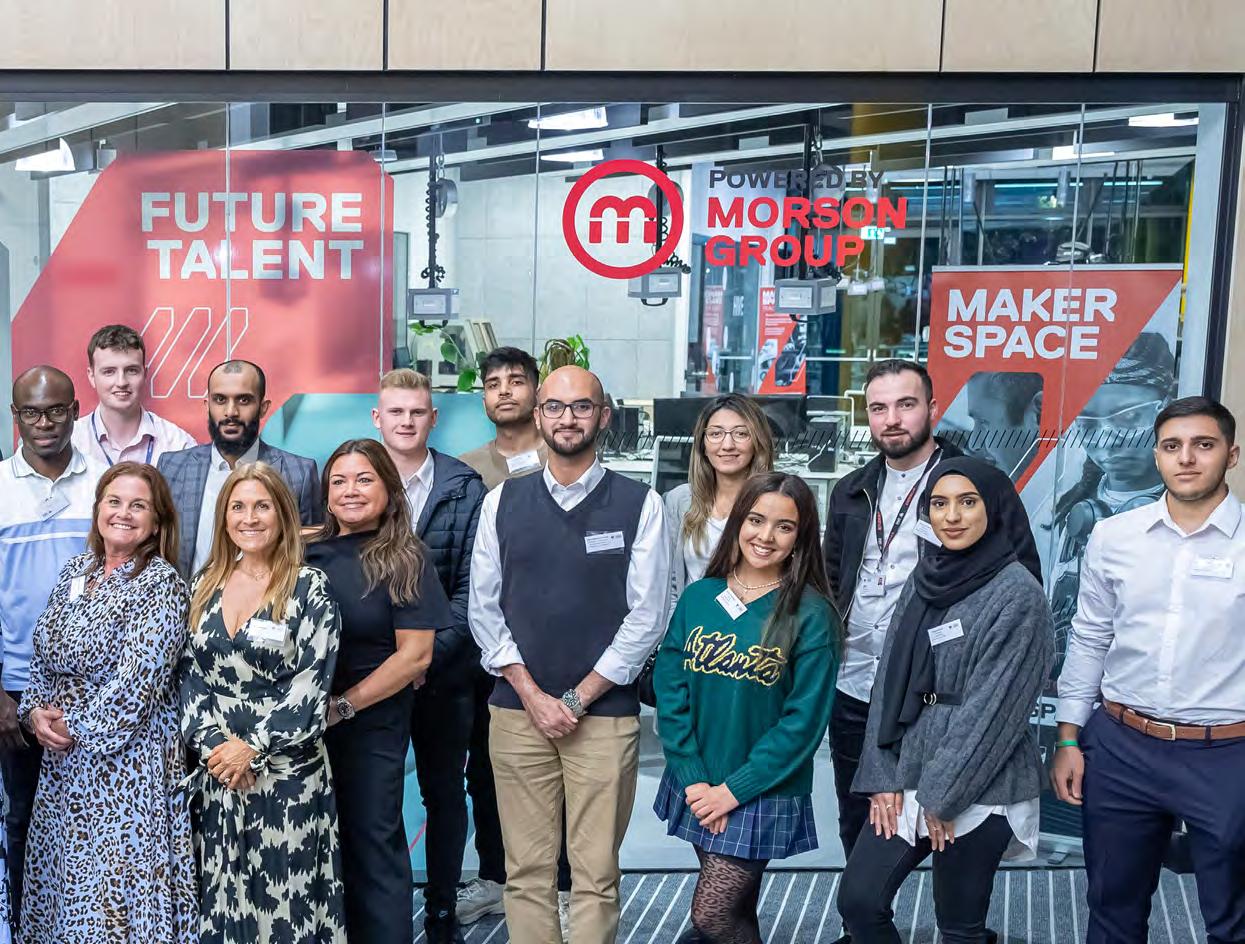

Our 2,184 employees consistently go above and beyond to attract, retain and place thousands of diverse people into assignments, roles and projects – spanning all levels and disciplines across contingent and permanent requirements – providing innovative recruitment and design services, and multi-faceted client solutions.

We draw from an ever-expanding portfolio of more than 16,000 active and engaged candidates and contractors who look to us for expert and honest support to maintain and enhance their careers with new opportunities and qualifications, delivering millions of people hours annually to client projects.
We also provide organisations with a critical lens into their workforce needs through informed insight and real-time reporting. We empower them to deliver on their commercial ambitions, source the best talent, integrate new technology, and design bespoke candidate journeys and experiences that deliver a competitive edge.

Whether providing recruitment process outsourcing (RPo), director-level appointments, temporary labour, skilled contractors, or consultancy services, we’re a people business, and by understanding and responding to the needs of individuals at every link in the chain, we add value to organisations.
AWARDS WON:

Best Companies
#20 Best Company to Work For in the East of England
#27 Best Company to Work For in the West midlands
#33 Best large Company to Work For in london
#33 Best Company to Work For in Wales
#40 Best Recruitment Company to Work For in the uK
#41 Best Company to Work For in scotland
#43 Best Company to Work For in the East midlands
#45 Best Company to Work For in the south East
#54 Best Company to Work For in the north West
#58 Best Company to Work For in Yorkshire & the Humber
#67 Best Company to Work For in the south West
#81 Best large Company to Work For in the uK
morson GroupMinistry of Defence (MoD) Employer Recognition Scheme



RoSPA Health & Safety Awards




2022 was a year of good solid financial performance in terms of turnover and profit, demonstrating the Group’s collective ability to grow, diversify and generate longterm sustainability. surpassing the £1 billion turnover marker was an aspiration of our CEo Ged mason oBE and his father and late Group founder, Gerry mason, and we’re proud to have delivered that, all whilst focusing on profitability, resilience, security and safety.

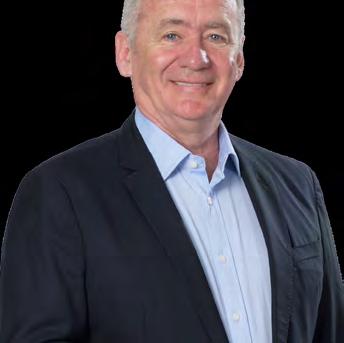
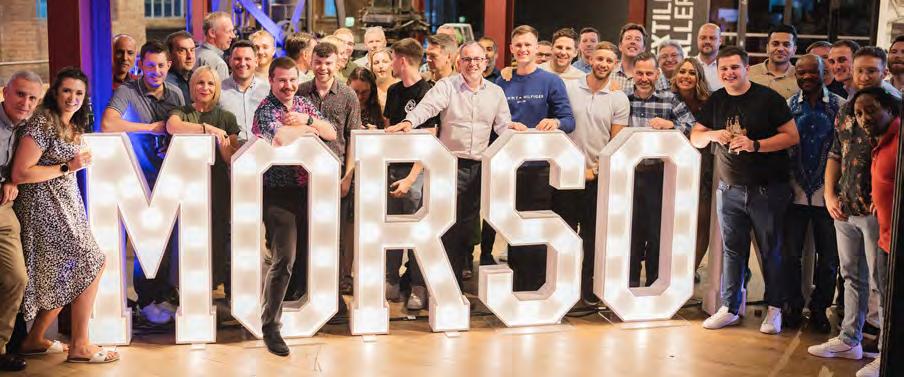
the world of work underwent momentous change, and what began with a hiring frenzy in Q1, turned into hiring pauses in Q4. thankfully, we operate in numerous resilient sectors and whilst the financial services It market, for example, took a risk-averse approach towards the end of the year as economies tightened, defence boomed. We saw increasing pressure to bring certain key projects to fruition much quicker as a result of the war in ukraine and the need to maintain and replace key defence assets.
Energy resilience remained firmly in the spotlight as costs and scarcity rose across energy streams, creating a focus on energy generation and distribution. similarly, with regard to defence, came a heightened awareness of uK assets. this is driving the need to deploy skilled talent to maintain, reengineer, develop assets and deliver new innovations. such a focus on specialist engineering talent saw morson Projects, Waldeck Associates and morson Projects Italy deliver record results for another consecutive year, with the business unit billing 14% more in 2022 than the year prior, and securing an excellent pipeline into 2023 and beyond.
the uK’s race to net zero also unlocks new opportunities to source talent in low carbon markets, with the Group continuing to invest in the renewables sector to ensure we’re able to capitalise on upcoming green energy investment programmes with our total talent solution.
And whilst vacancies soared, there weren’t enough people to fill them, which resulted in a candidate-led market. training our own pipeline of talent will become critical over the coming years –regardless of the sector within which we operate. From welders to cyber security specialists, organisations have begun placing increased focus on training their own and contingent workforces to meet current and future talent demands.
despite economic and political challenges, the Group delivered an exceptional financial performance, which saw revenues rise 21% to £1,151.7 million. thanks to solid internal systems, controls and procedures, we successfully, carefully and proportionally controlled overheads and investment to deliver increased profitability. We remain vigilant and careful as to who we trade with and have mitigated bad debt during this post-CoVId era and following the effects of the war in ukraine.
our acquisition of Australia’s ACRWoRld in April 2022 mirrors our focus on developing business units which align culturally and share our family-focused ethos. the team’s ability to leverage the Group’s shared services will help deliver opportunity in technical sectors that seek a robust talent solution. It was a pleasure welcoming ACRWoRld into the morson Group, and we’re focused on delivering further expansion on the continent through organic growth or further acquisitions.
despite our 50+ year heritage, I’m always in awe of the long-serving talent within our ranks. In 2022, another 39 people reached 10 years’ service with the Group, bringing the total to 231 people, whilst the number of colleagues celebrating 20 years’ service increased by 20 in 2022, bringing the total to 96 people with 20 years’ service or more. many of our long-serving colleagues will have worked closely with and been influenced by our former Group md, Kevin Gorton, who sadly passed away in 2022. Kevin played such a pivotal role in the growth of the Group during his 30+ year tenure. It’s a pleasure knowing his legacy will live on.

I also want to personally thank all our colleagues for helping us navigate the year and deliver resounding successes to our clients, candidates, contractors and other key stakeholders. We enter 2023 with an exciting pipeline of opportunities and it’s your collective efforts that will shape the future of morson Group and the wider talent market.
Contractor hours
26.5m+
Contractor numbers
16,100
16,100
13,600
13,000
Total permanent placements
3,200
Up 78% on 2021
Kevin Philbin Non-Executive Chairman 31 may 20232022 was a year of growth. turnover grew to a record £1.2 billion, demand for talent soared across our core sectors, and we empowered the professional growth of our staff and workforce, whether core delivery, born leaders, fresh new talent, and those levelling up with critical new skills.
It will go down in history as the year that morson Group hit £1 billion turnover for the first time. We boast a 50+ year heritage, and every moment of our history played its part in reaching this milestone. It’s a milestone that I know my father – our founder, Gerry mason – would be proud of.

I want to acknowledge our people across all our Group companies and thank you for your dedicated contribution. this milestone marks a proud moment for the Group. In practice, it means more services, better delivered for our clients, candidates and contractors, as we continue investing into added value areas across our business units plus multiple other programmes, from training new graduates to additional social value partnerships and pledges.
over the course of the year, we saw demand for talent rise across all our core sectors, for both workflow and hiring. A renaissance in nuclear was sparked by a raft of small modular reactor (smR) projects, and we have seen the progression of major infrastructure programmes, including Hs2. our people are working at the forefront of some of the most significant and cutting-edge schemes both in this country and beyond, and we are leading the charge for widening participation, bringing talent from every corner of the workforce into those projects.
our stEm centre, part funded by morson Group and part of the university of salford’s new £65 million science, Engineering & Environment Building, opened to students for the first time in 2022. the state-of-the-art morson maker space facility is part of a long-standing commitment by the Group to give back to the local community and create opportunities for young people who might otherwise be held back by social deprivation, and it will play a significant role in ensuring a pipeline of candidates for stEm roles.
this investment is fortified by Intouniversity’s new learning facility at the Beacon Centre in central salford, co-funded by morson Group and the university of salford. supporting young people from deprived backgrounds, aged seven to eighteen, the centre aims to draw ever-more candidates into roles they may have thought inaccessible to them. Coupled with our many scholarships at the university, we continue to invest heavily into the talent that will shore up the future of stEm industries. We now provide the entire talent lifecycle, from education, mentoring, work experience and training to first jobs, and careers for life across our client base.
But there are gaps in the workforce today, and that is why we are also supporting people into jobs through our Pathfinders Academy. Reskilling individuals – including students and veterans – from all education, experience, and socio-economic backgrounds – and from all sectors – to those looking to switch careers or return to work following a period of leave, our bespoke training programmes are helping to fill critical skills gaps.
meanwhile, opportunities abound within our own business. our proactive leadership framework ensures the Group and our people are readily prepared for future market challenges and opportunities. In 2022, we promoted 16 colleagues to the position of associate director, bringing the number of directors across the Group to 87.
testament to the variety and abundance of opportunity within morson Group, are the very many longstanding employees within the Company. 39 members of staff celebrated 10 years of service in 2022, and 20 marked a 20-year anniversary. these are individuals who have helped to shape morson Group into the Company it is today, and I’m extremely grateful for their loyalty and dedication.
I’m excited to have welcomed a host of new colleagues with our acquisition of Australian recruiter ACRWoRld the acquisition saw us awarded the Growth in new markets accolade at the Insider International trade Awards and provides stability and new markets to the Group as we expand our international footprint.
As we celebrated our long serving colleagues and welcomed new friends from across the globe, we also said a sad goodbye to a man whose legacy at morson Group cannot be overstated. Kevin Gorton joined morson in the mid-1980s. He played a leading role in the development of the Group, in particular utilising his experience in sales strategies and talent solutions globally, across multi-disciplined markets. After a long and brave battle with a brain tumour, he sadly passed last year, leaving behind his wife debbie, his son Rory, and daughter Hannah. Kevin had a sharp mind and a keen sense of humour, and he was instrumental in much of the Group’s many successes during his 30 years of service. And it’s only fitting that we named one of our salford HQ boardrooms after such a pivotal figure in the Group, ensuring Kevin’s name lives on amongst colleagues old and new.
Finally, from me, I’d like to thank every single colleague across the Group, including all those who won awards and were promoted throughout 2022. Collectively, we’re leaving a legacy of success and achieving our goal of placing people first.
We truly are a family – we are morson Group.
 Ged Mason OBE Chief Executive 31 may 2023
Ged Mason OBE Chief Executive 31 may 2023
Morson Talent
20 people
Morson projects
9 people
Waldeck
5 people
Vital Human Resources
2 people
Anderselite
2 people
The Bridge 1 person
CELEBRATING 20 YEARS OF SERVICE
Vital Human Resources
10 people
Morson Talent
7 people
Morson projects
2 people
Waldeck 1 person
We are a diverse collection of interconnected, like-minded businesses that provide complementary people solutions and services renowned for quality, flexibility and the ability to create lasting value.
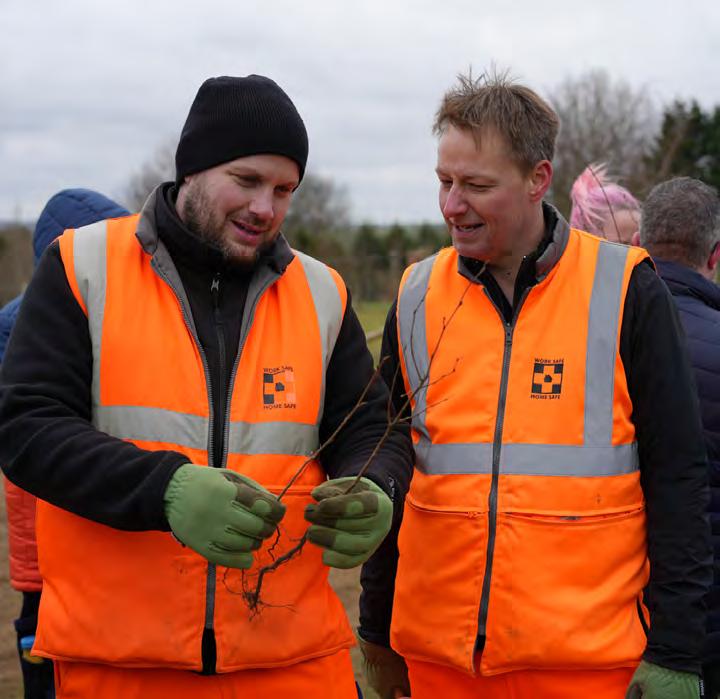
• Our employees: people sit at our heart, enabling us to deliver excellence
• Our clients
• Our candidates
Our contractor workforce
• Our supply chain
• Our strategic partners
• Our shareholders and finance providers
• The communities within which we operate
Our ethos and family-formed culture are rooted in collaboration, innovation and excellence. This forges bespoke solutions, services and opportunities, which together meet current and future stakeholder needs while fulfilling our purpose outlined on page 12.
• Recruitment – temporary and permanent
i. Managed service provision (MSP)
ii. Recruitment process outsourcing (RPO)
iii. Neutral/hybrid vendor
iv Workforce management
• Design consultancy Training
• Technology
• Employment screening
• ED&I consultancy
• Audit
• HR outsourcing
• Digital studio
• Pathfinders academy
In a candidate-driven market, we pride ourselves on offering tailored people solutions that cut through the noise and deliver lasting value.
Many organisations appoint us with a clear solution in mind, whilst others require a consultative approach to identify which model best suits their immediate and long-term needs. In response, we flex and scale our services to create bespoke solutions that deliver now and into the future.


• Placing people first
• Family-formed culture united by our family values
• Commercial agility
• Evolution through innovation
• Always going the extra mile
• Delivering on time, every time
• Intelligence and depth of offer
Financial control and stability
• Commitment to ESG
• Contractor and candidate loyalty
• Experienced subject matter experts
• Delivering a lasting social value legacy
This ethos runs through the veins of Morson Group, ensuring we make a lasting positive change to people’s lives, be that our clients, candidates, contractors and colleagues, and the communities within which we operate.

There is no finishing line.
• We strive to make a positive difference in people’s lives.
• We care for the mind, body and soul of our colleagues.
• We listen, understand and innovate for our clients, as their success is our success.

• We support our contractors and candidates personally and professionally.
• We are responsible, always nurturing the communities within which we operate.
our mission is to be the talent solutions provider that organisations and candidates want to work with and the most talented people want to work for.
Deliver best-in-class services that our clients, candidates and contractors know and trust
Regular informed communications
• Proactively seek out and act upon stakeholder feedback
• share best practice measure and monitor key performance indicators (KPIs)
Ensure our values guide our decisions and behaviours
Connect and align our strategy with our culture Clear EsG commitments
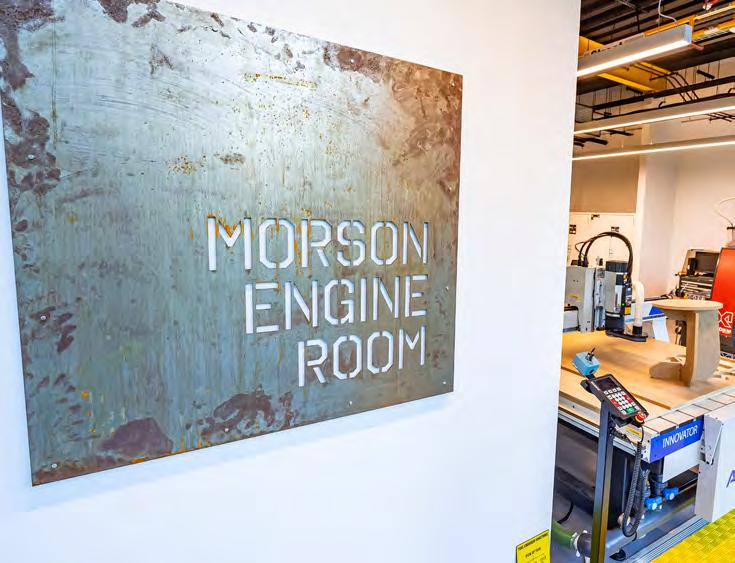
understand current and future stakeholder needs develop ongoing operational efficiencies
Invest in training at all levels, including scholarships, apprenticeships, upskilling, reskilling and work placements
lead with a knowledgeable and accessible management team that possesses market experience
• leverage all communication methods with our operational Board, management and wider employee base train, mentor and invest in our people
• Invest in our It infrastructure, programmes and technology
• drive continuous HsQE improvements by developing measurable and targeted practices, behaviours and campaigns of change
Invest in our website, communications, marketing and media to maintain a voice of authority
• develop our in-house technology and business intelligence tool, Vencuro, to further assist our clients in managing their workforce whilst enhancing data capture
• Assist clients and contractors in ensuring compatibility and compliance through legislative frameworks and change
Identify niche areas and new revenue streams that align with our strategy, strengths and core markets
• Plan, execute and support our strategy, appreciating timescales of delivery
• Be flexible and agile with market and economic changes, including social, political and environmental influences
• target growth that creates opportunity within and for the Group
• understand stakeholder needs to retain and grow our portfolio
• maintain efficient practices and cost control procedures
• deliver strategic thinking and positioning in changing markets
select carefully considered investment opportunities
Build strategic office networks for localised delivery of our services across geographies
• Invest in our business units to enhance their service, capabilities and reach
• Invest in the training of our people to develop future talent
• Establish clear aims for further development
• Recruit, train and retain talented people to support growth
• Identify targeted and carefully considered investment opportunities
• maintain experienced and knowledgeable teams
Develop and maintain market-leading positions throughout our core markets
Enhance shareholder value and our Operational Board
Appetite for permanent candidates cooled towards the end of the year, following increased economic uncertainty, budget pressures and ongoing labour shortages. this, coupled with a reluctance amongst candidates to move roles due to financial risks, saw contingent labour once again become a lifeline for several of our core sectors.
According to REC figures, c.1.2 million people work via a recruitment business on contract or temporary assignment at any one time. this enables organisations to tap into blue and white collar talent pools at ease and flex workforce populations upon demand, all whilst supporting a contractor’s desire for flexibility, autonomy and change.
Government commitments to invest £billions in the future of defence, tech, infrastructure and more will require an increased reliance on temporary labour to support booming skills requirements. As a Group, we are perfectly positioned to provide our clients with strategic pools of flexible labour, skills and expertise to deliver short and long-term talent requirements and programmes of work in today’s hugely competitive labour market.
As hiring ramped up post-pandemic, and through the development of our RPo1 –recruitment process outsourcing – service, the Group delivered talent solutions to a broad range of clients in industries spanning renewables, tech, aerospace, defence, infrastructure and more. Clients looked to us to offload permanent recruitment projects ranging from the sourcing of specialist skillsets and senior hires to those requiring talent across all disciplines and levels, as well as securing longer-term enterprise-wide solutions to aid them in successful, cost-effective management of their recruitment methods, including process control, supply chain, branding, fulfilment, insights and Ed&I.
the uK’s race for clean energy saw major growth in the renewables and nuclear sector, supporting clients’ rapid expansion plans. We also assisted those skillsets suffering from sustained shortages – software development, data and machine learning – with the combined impact of rampups in demand coupled with many candidates switching careers or opting to retire early during the pandemic.
As consultants, we helped clients tap into new talent pools, delivering insight into market conditions and skills availability to source candidates with transferable skills and enable better hiring decisions, whilst leveraging our in-house expertise to enhance an organisation’s employer value proposition (EVP) in what was a candidate-led market.
From controlling capital costs to boosting Ed&I, the focus on net zero led the charge in 2022, following increased pressure in the wake of CoP26. low carbon projects remained a priority for the Group and our clients, bolstered by rocketing energy costs and a focus on reducing the uK’s reliance on imported energy.

the fast-tracking of digital transformation also created multiple opportunities, leading to process automation, software programming and AI trends. the digital-led skillsets of our engineering workforce allow organisations to connect and analyse data, leveraging the benefits of automation and integration.
despite an unstable political landscape, defence breathed a sigh of relief as the Pm demonstrated his commitment to the sector, with £18.5 billion in new contracts placed during 2022 – an increase of £6.7 billion on the year prior.
We enter 2023 in a prime position for growth across power transmission, rail, nuclear decommissioning, infrastructure, construction, nuclear submarines and other core markets.
our ability to permeate multiple complementary markets, share best practice and leverage Group expertise enables us to remain the go-to partner for talent solutions and design consultancy.

demand for candidates surpassed prepandemic levels for the first time, as 2022 saw the war for talent hit unprecedented levels. several major projects transitioned from engineering design phases into build programmes, which put pressure on traditional trades as clients – particularly in marine – looked to source an influx of electricians, pipefitters and welders concurrently. Coupled with a resurgence in aircraft and rotary engineering, production and maintenance, this made clients more willing to deploy on-the-job training for blue and white collar candidates with the right transferable skills, including ex-forces personnel, thanks to our morson Forces division.
As market experts, we have comprehensive coverage uK-wide, with numerous strategically located offices supporting clients with a spectrum of talent solutions. In 2022, our new Portsmouth office flourished – expanding to a headcount of 10 and recording 200 contractors from a standing start. the team’s specialism in defence and cyber security was bolstered by the Pm’s commitment to replenish existing hardware, whilst combatting economic and cyber security – a market representing significant opportunity.
looking ahead, we are perfectly positioned to meet increasing demand across land, air, sea and space programmes – many of which are long-term – and support changing client needs throughout project lifecycles. Working closely with our colleagues in morson Projects, we are focused on developing talent and deploying solutions that combat sustained shortages, and supporting the billions of pounds of spending committed to the uK future defence programme, as well as supporting civil aerospace, new innovative design initiatives and rotary wing programmes for clients in the uK and beyond.
technology has become even more of an enabler for companies, individuals and communities, facilitating new ways of working and data-led decision making and helping keep the economy buoyant, which saw the market grow significantly. software developer and business analyst roles outstripped demand, and whilst numerous tech giants made waves of redundancies, few of these layoffs affected specialist tech talent and instead focused on removing layers of middle management created due to over hiring.
Clients remained hungry for tech talent, resulting in growth across nuclear, finance and pharmaceutical sectors. And thanks to the continued boom in hybrid working, we were able to look beyond traditional geographical borders to find talent in different locations. like many sectors, the market had to adapt to private sector IR35 reform, with the financial services sector, in particular, moving to a focus on permanent roles. demand, however, remained strong and our inherent knowledge of our markets combined with high compliance has helped us become a provider of choice, gaining increased geographic presence, winning several new accounts and increasing our market share.
While 2022 saw the sector far exceed previous periods that saw lockdowns and social distancing, we also saw the industry show signs of strain in a challenging climate. the combination of rising labour, energy and raw material costs has been evident. the Group leaned heavily on its reputation, relationships, and legacy to continue to fulfil positions during periods of significant skills shortage, with some talent transferring to other sectors. short supply of tradespeople – notably joiners, plumbers and bricklayers, as well as white collar professionals including estimators, surveyors and planners –placed increasing pressure on the industry.
meanwhile, the welcome news on major infrastructure projects, including Hinkley Point C, Hs2, and the transpennine Route upgrade (tRu) created demand, however, this only exacerbated the talent shortage further. the Group delivered as ever, and whilst we are cautious and mindful of interest rates and other economic factors, we are well placed to support major infrastructure programmes and all civil aspects of infrastructure asset maintenance.


the pandemic bolstered HR’s influence and remit, and as the demand for skilled talent soared, we saw considerable growth in the need for experienced HR professionals. From employee wellbeing programmes, gathering cultural intelligence and rolling out new flexible ways of working, talent teams looked to the Group to source the right HR expertise that would enable their organisation to become a post-pandemic employer of choice, whilst also embedding hire-to-retire strategies that provide rewarding careers for life.
to support such programmes also saw demand for skilled brand, marketing and communications talent to ensure an organisation’s EVP became actionable. digital transformation also became a necessity in accounting, as finance functions accelerated their digital journeys to support forecasting and cash management, resulting in a plethora of new finance roles. We recruited specialist consultants to support current and future growth in these areas who could hit the ground running and tap into active talent pools.
2022 saw a major milestone in the successful handover of Crossrail, with the Elizabeth line commencing service and the Group having provided numerous engineering contractors throughout the project lifecycle. now fully operational, the hybrid commuter rail and rapid transit system serves commuters across the capital and adds c.10% more capacity to central london’s rail network and an estimated £42 billion to the uK economy. meanwhile, the southern section of Hs2 progressed well, powered by numerous morson Group candidates, including project managers, commercial managers, designers, health and safety operatives, engineers and tunnellers. this is just one of several major infrastructure projects in the uK for which we supply critical labour and support the maintenance of transport infrastructure.
A major benefit of our reach across the industry is that we can quickly and seamlessly migrate labour across programmes, essential in an era of skills shortages. In 2022, there were 2% fewer workers than the previous year, and 7.5% fewer workers under 25 than in 2016. We’re working hard to combat the skills gap through apprenticeships, women in engineering pledges, and schemes supporting the reskilling of ex-forces talent, to name but a few. We are working closely with our colleagues across the Group, and as far as Australia, to support a growing industry. Globally, we’re in an exciting period of investment, driven by electrification and continuous improvement projects to meet ambitions of a low-emission railway.
nuclear gained heightened status as a crucial component in the uK’s energy mix, and more recently in the Chancellor’s march 2023 Budget with positive status as environmental energy. throughout 2022, the emphasis on reducing reliance on imported fossil fuels saw the government grant development consent on sizewell C and pledge to deploy a firstof-a-kind smR (small modular reactor) by the early 2030s.
In what was a war for skilled and experienced talent, appetite for our msP and RPo solutions soared – from organisations large and small – which saw growth across the board in nuclear, power, renewables and utilities. We supported the ambitious growth plans of a key clean energy client, making more than 400 placements across all levels and disciplines. Clients are proactively seeking a total talent solutions provider, like ourselves, and our ability to tap into complementary talent pools with the right hard and soft transferable skills enables us to source volume hires and niche skillsets. this stretch recruitment tactic is key to identifying candidates that don’t fit traditional moulds but possess raw, untapped potential, ensuring we’ve creative thinkers and problem solvers working alongside those with technical acumen. In addition, we are initiating training and pathfinder routes to bring waves of new talent into the market.
Pent-up demand post-COVID resulted in a hiring boom in Q1 and Q2 as organisations capitalised on recovering markets and the removal of restrictions, which, coupled with an unprecedented shortage of candidates as some retired or reskilled into other sectors, drove up pay rates.
RPO1 proved a hero talent solution in 2022 as clients valued our team’s ability to plug into wider talent functions and remove key hiring and retention headaches, without needing a fully outsourced solution. Our talent partners brought specialist expertise on demand to key markets, including nuclear, professional services and tech.
Our managed service provision (MSP) saw notable growth across our core markets, including aerospace, defence and marine, together with tech and professional services, delivering consultative and insight-driven talent solutions. Several client wins were driven by our ability to offer a total talent solution. Beyond hiring, organisations increasingly seek a talent partner with in-house experts across a range of functions, including screening, digital solutions, training, HR outsourcing and more. And whilst several key projects failed to ramp up as quickly as anticipated, we’re perfectly poised for further growth in 2023 and beyond in key markets such as rail and renewables.
The lingering effect of private sector IR35 reform also drove the need for organisations to understand the talent sitting within their organisation, spanning contingency labour, permanent and outsourced. As a result, we saw real success in our consultancy and outsourced offering, enabling clients to access niche skills and work with partners to develop the most effective people and compliance strategy.
Throughout the year, we witnessed a clear shift in candidate expectations as career motivations evolved. To overcome such change, which sees candidates understandably now value organisations with financial security and roles with purpose, we continued to support our clients in developing a compelling employer value proposition (EVP) that ultimately positions them as an employer of choice.
Having already grown a solid footprint in the USA and Canada, our strategy remains to capitalise on growth opportunities in complementary markets with businesses whose family values mirror our own, whether in the UK or overseas.
Australia has growing markets aligned with those in the UK – energy, infrastructure, aerospace and defence. However, managed service and RPO recruitment aren’t widely available, and a number of key businesses in the market are actively seeking solutions like those Morson Talent can offer. The successful acquisition of Sydney-based ACRWORLD in spring 2022 followed a strong year of trading for both our organisations and strategically strengthened both our position as a global and influential talent solutions specialist and ACRWORLD’s offering to its existing and prospective clients.
As we look to 2023, the outlook remains positive. Training will play an increasingly central role in those markets suffering from sustained skills shortages, whilst investment into future growth markets, such as renewables, will pay dividends. We’re ideally positioned to capitalise on the forthcoming boom in spending on onshore and offshore wind, solar, tidal stream and other renewable energy sources.

2022 saw record revenues for Morson Engineering – a collective of Morson Projects, Waldeck Associates and Morson Projects Italy –together recording more than £81.7m of revenue and generating increased profits.
Strong demand across complementary markets also saw us engage more than 350 engineers and skilled staff to deliver services to our clients, leveraging our sister companies to source talent with specialist, in demand digital engineering skillsets to complement our existing competencies.

Within aerospace markets, whilst civil aviation again had a quiet year, our remit was to deliver engineering support in avionics and smart cockpits, as well as developing next-generation fighter aircraft in support of the government’s £2 billion combat air system programme.
We continued to provide significant resource across nuclear new build and decommissioning, playing a lead role as construction change managers to support complex infrastructure improvements. Power supply infrastructure is in urgent need of transformation, and the power engineering team from Morson is helping to tackle the challenge of reaching net zero by 2050 through the advancement of solar, wind and battery storage. The road to net zero saw us support several major contracts, including the creation of new transmission substations to connect conventional and renewable power generation sources, with further growth expected in this market in 2023 and beyond.
Our marine team also pioneered a new modular design and build solution, with clients trusting us to add value beyond scope, resulting in additional packages of work. The UK continues to invest in submarine technology, with a focus on developing advanced capabilities and maintaining its strategic nuclear deterrent.
Complementing our growing digital solution, our digital panoptic bridge condition inspections service took a major leap forward, developing the AI to analyse, assess and score the data gathered and create asset management solutions for UK rail infrastructure. We also played a key part in the realisation of West Midlands Interchange at Four Ashes – a 734-acre strategic rail freight interchange (SFRI) and a prime rail-served logistics programme, which continues in 2023.
The success of the 2022 Commonwealth Games marked another key milestone, following our role in the major redevelopment of Perry Barr Station, with our services for the tier one contractor spanning architecture & design, digital surveying, civil & structural engineering, M&E and more. Our expert team also delivered a successful pedestrian flow modelling project, ensuring the design was suitable, safe and efficient for the station’s forecasted 1.1million passengers by 2027, together with the 25,000 daily passengers recorded during the 12-day ceremony.
As we enter 2023, we are perfectly positioned to capitalise on the billions of pounds of investment entering our core markets over the coming years. Leveraging our specialist expertise and our ability to deliver an outstanding calibre of talent, we’re primed to broker new opportunities whilst servicing current clients as the go-to partner in specialist engineering programmes.

With more than one million Games tickets sold, staging this event was a monumental challenge for our rail network but thanks to a lot of hard work from across the industry, it is one we have passed with flying colours.”
Malcolm Holmes
Executive Director at West Midlands Rail Executive
2022 was a year of record revenues and profit for Vital Human Resources, notably from a secure client base, robust frameworks and delivery, nurturing and converting new programmes and opportunities, plus opening strategic locations, including a new branch in Ashford, Kent.
Vital Rail

Network Rail’s Eastern and Wales & Western regions, in particular, flourished, with increased confidence and demand for skilled talent to support current and new routes, ultimately helping Network Rail achieve its mission of running a safe, reliable and efficient railway that serves customers and communities.
Major strides were made in delivering a new digital onboarding solution. This leading-edge technology streamlines our end-to-end back office function to help verify identity information and documents in real time, whilst reducing human error. Throughout 2022, we onboarded 850 operatives via the new platform successfully.
We successfully supported the influx of mourners that descended onto London to pay their respects following the passing of Her Majesty The Queen. Rail passenger numbers soared almost overnight to volumes last seen during the London 2012 Olympics, with our expert team successfully mobilising hundreds of operatives to deliver and maintain such a vital transport infrastructure.
Vital’s Suicide Prevention Patrollers completed their 100th life-saving intervention. What started as a trial project with Network Rail in October 2018 has seen our patrollers deliver 64 interventions on the East Coast route, 23 on the East Midlands route and 13 on the North & East route, with a further 1,778 concerns raised. Classed as ‘associated faults’, these cover factors such as damaged fencing and trespassing. Together, this resulted in multiple nominations at the Rail Staff Awards 2022, with finalists in the Samaritans Lifesaver and Safety Person categories.

Vital Rail was also chosen as a private sector partner to create employment pathways for unemployed individuals. Together with Absolute Training & Assessing, DWP, Cardiff Council and Swansea Council, we enrolled candidates on a 10-day PTS Track Induction course, which delivered major successes and resulted in employment by Vital for all those enrolled. Together, this adds another successful route into employment and takes us a step closer to addressing and solving skills shortages in the rail industry.
To tackle mental health on track and male stigma in particular, our HSQE team successfully rolled out a new wellbeing initiative. Always Ask Twice is an incredibly simple, powerful solution, encouraging colleagues to talk openly by asking the right questions and being ready to listen.
Rail passengers soared 155.2% to 990 million in 2022, and we expect further increases in 2023, leading to continued investment in major infrastructure projects and ongoing focus in electrification to accelerate decarbonisation.
Building on the success of the year prior, 2022 marked another record year for Vital Solutions. Both sales and EBIT hit new highs for a third consecutive year, testament to the hard work and performance of the whole team. We worked collaboratively with customers, delivering targeted resources that empowered the completion of several key rail projects, all whilst investing in entry level talent and our future pipelines. As a result, we enter 2023 in a solid position and as a supplier of choice to many of our customers.
2022 saw an increase in business driven by core mechanical and electrical clients. Significantly the business renewed a key supplier agreement with a UK leading independent engineering and services business who are the key mechanical and electrical contractor at Hinckley Point nuclear power station.
Key strategies of 2022 were to remove risk by not trading with poor financial strength clients or those showing the after-effects of COVID-19 and also shut smaller branches and consolidate regions, ready for significant growth going forward. In 2023 and beyond we will benefit from the release of work in the energy sector, and we anticipate our High Voltage division will continue to grow. The reliance on the UK Grid infrastructure and the need to develop and maintain it will create opportunities for support and demand for talent.

We began 2022 with the foundations of a strong new structure in place across our offices. With management positions solidified, we reconfigured and recruited to create structured teams, giving directional stability in each office location that has strengthened the business.
The full-time allocation of a long-standing director to head up business development saw us grow existing business with a handful of key clients. Anderselite’s strategy is to be much more ambidextrous than a traditional recruiter by drawing on the strength of the Group’s experience in RPO and managed service programmes. As a result, we are in early-stage discussions with several organisations to offer a partnership-led approach and secure longer-term strategic relationships with key clients.
Boosting our use of innovative social media mechanics for talent attraction, identifying cost savings, and integrating the Fit for Work app have all further increased our client’s bottom line. We have enhanced our business model by enriching the relationships we have, adding to our suite of services, and working towards more meaningful commercial goals.
2022 also saw the bolstering of Anderselite’s architecture team, with new appointments in Manchester and Bristol, and more in the pipeline. Furthermore, the growth of our FM divisions in both Leeds and London will provide stability, giving us a strong foothold in a traditionally buoyant sector.
While the beginning of the year showed some confidence from employers in the recruitment of permanent positions, latterly this switched and a clear preference for contractors became evident. As economic factors came into play, we saw a drive towards more agile business models, and the flexibility to react to changing circumstances that contingent labour can offer.
Our strengths in both temporary and permanent services, particularly in construction and civil markets, has and will stand us in good stead as we approach what may be a challenging economic period for some of the sectors within which we operate.
Meanwhile, the skills shortage continues and there is limited external funding for reskilling candidates. It is testament to our longestablished relationships, our referral network, our reputation, and Morson Group’s own talent pipelines that we have continued to deliver quality candidates for our clients.
Anderselite and Vital have forged an exciting and judicious partnership. Working together, with blue collar candidates provided by Vital and white collar by Anderselite, combined with our RPO and managed services, offers a total talent solution for the first time in the business’s history within the rail sector.


2022 was a positive year as we saw revenue and profitability increase significantly. The emergence from the pandemic drove the need for talent and we refocused on delivering for our clients in this challenging market where candidates are scarce. We invested in new staff, building a positive culture where engagement, productivity, performance and leadership are key, while forging stronger ties with other Group companies – all to deliver candidate and client success.
We have clearly defined, purposeful and diverse client-specific teams, a career progression framework and also leveraged the expertise of the Group’s marketing team to deliver a successful rebrand that is a jumpstart for future growth.

As the demand for IT talent boomed, we continued to grow key accounts, as businesses looked to us to source the skillsets needed to aid their post-pandemic recovery. We are particularly strong in the temporary contractor market and successfully retained and extended key contracts – a testament to the value added and the calibre of talent we recruit and retain. Permanent recruitment was also steadier and a little more challenging, particularly later in the year.
Data-centric skillsets were prominent in our client’s businesses, and traditional IT skillsets – architecture, software engineering and DevOps – remained in high demand. In response, we developed a data practice team, ensuring we’re better equipped to go to market and source passive candidates, including niche skillsets at short notice, and add value beyond traditional headhunting.
Organisations also continued to respond to the call for improved diversity and inclusion in tech, and we delivered several ED&I headhunting briefs to source candidates from underrepresented groups.
The year brought a burst of hiring across the IT sector, but as global economies slowed, there came a reluctance to move. Candidate motivations began to prioritise an employer’s financial security, ensuring they could future-proof their income amidst economic uncertainty.
As we look to 2023, talent in our sector is in high demand and we remain focused on attracting and retaining the best candidates for our clients whilst continuing to support our people, and ensure The Bridge remains a provider of choice to clients and candidates alike.
We are delighted to report that 2022 was a year of several record months, resulting in a significant increase in revenue from permanent fees, in part, driven by the impact of private sector IR35, whilst contract income remained consistently strong.
The first half of the year saw very strong hiring, with many organisations offering significantly increased salaries and packages to source the best talent in a highly competitive market. Cornwallis Elt –with a strong market position – was able to harness the huge demand for talent by utilising our excellent reputation amongst candidates to ensure consistently high levels of delivery.
Global economic uncertainty began to surface towards the second half of the year, resulting in a reduction in hiring and several recruitment pauses in Q4.
Ongoing legislative change, M&A and the rollout of new digital upgrades saw us continue to deliver specialist tech talent across the capital, with in-demand skillsets including business analysts, project and programme managers, and developers.
Identifying a clear opportunity for growth, we partnered with Morson Projects to deliver outsourced and consultancy solutions to support key clients and their projects. Our in-depth knowledge of running projects, partnering and delivering consultancy presents an exciting opportunity for further growth in 2023.
We also saw growth in the number of diverse candidates we placed. We are proud that females accounted for 28% of placements, compared to 18% nationally – according to ONS statistics. In what remains a male-dominated arena, we continue to deliver diverse shortlists and ensure our recruitment mechanics reach the most diverse talent pools. Our diversity committee meets quarterly to share best practice and adopt methods of change, and we also partner with TechSheCan and APSCo Embrace – a forum supported by the REC and other industry stakeholders.
2022 was also spent embedding ourselves into the Group following our acquisition in late 2021. Our client base, centred on the London financial markets, is sensitive to market opinion and whilst reduced recruitment appetite may continue into early 2023, we remain confident and are well positioned to grow our market share. We have actively forged stronger ties with the Group’s marketing, HR, legal and finance functions to leverage shared services. Postacquisition, our team is enjoying being part of the Morson Group and we are ensuring we deliver continuity to clients and maintain key relationships, develop further client services and our focus on retention, reward and growth. Combined, this strategy will serve us perfectly in 2023 and beyond.


Morson North America recorded a steady year, maintaining core clients and income streams whilst investing significantly in our service offering to support increasing demand and capitalise on new opportunities.
Most of our business was conducted in Canada, headquartered in Toronto, and now complemented by the launch of a new office in Montreal, Quebec. The province is home to several key Group aerospace clients and is a recognised hub for the Canadian sector. Bringing skilled recruiters on board with local knowledge and sector experience saw our bilingual team win its first RPO (recruitment process outsourcing) contract with a key engineering services client and we look to expand our business here further.
Our US arm, supported operationally by our Canada team, continued to assist key clients in several US states, including multiple Group customers.

Canada’s commitment to nuclear energy signals the requirement for long-term skilled resource, and we are perfectly positioned to support such talent requirements. In 2022, we secured several new clients spanning nuclear, power, aerospace, defence and shipbuilding and negotiated an important contract to support clients at the Bruce Power plant.
To overcome sustained skills shortages across multiple sectors, we actively helped our clients to source candidates with complementary transferable skills, targeted older workers and retirees, particularly those who exited employment during the pandemic, and championed the
benefits of growing your own pipelines for talent – a crucial factor when you consider that a lack of investment over numerous years, combined with limited government incentives, has resulted in major talent gaps.
Our MorCare offering continued to mature, facilitating superior and consistent experiences for clients, contractors and candidates – and adding a competitive edge – which saw us recruit a senior colleague to develop this further. Such a commitment saw Morson Canada ranked one of ClearlyRated’s Best Staffing Agencies for a fourth consecutive year – an accolade demonstrating exceptionally high service levels with a Talent Net Promoter Score (NPS) of 78% (three times the industry average) and a Client Score of 60% (two times the industry average).
Canada’s position as the second (behind the USA) fastest-growing G7 economy recently led to a surge in job vacancies, with the prospect of many more skilled candidates calling North America home thanks to its robust, forward thinking immigration system. The Small Modular Reactor (SMR) Action Plan and investment into power generation are examples of projects that led this charge, and Morson is well placed to help our clients attract and develop resource, whilst supporting aerospace, transport, marine, IT and other engineering disciplines.
Looking ahead to 2023, we’re focused on investing further in our people, offices and solutions to meet rising talent demands. We were thrilled to win a prestigious nuclear sector client, which commenced supply in January 2023, and a growing appetite for permanent talent through successful RPO models provides new, exciting avenues for growth.
We have a clear strategy to expand our footprint and enhance our position as a global player, and the acquisition of ACRWORLD strengthens this objective and reinforces our presence in key sectors. Whilst the pandemic pushed us to think local, as borders and opportunities open, we have our eye firmly on the wider picture. Bringing ACRWORLD into the Group enables us to take advantage of tremendous growth opportunities in Australia, diversifying with its complementary offer, and a respected team, whilst giving our clients access to a global network of talent.”
Ged Mason OBE CEO of Morson GroupIn 2022, we were thrilled to acquire Australian recruiter ACRWoRld, as we focus on strengthening our global service offering and enhancing our technical and infrastructure footprint.
the sydney-based recruiter specialises in providing personalised recruitment solutions to architecture, engineering, construction, property, transportation, renewables, and related industries by matching its clients with in-demand candidates across the globe.
ACRWoRld’s 38-strong team, led by md John Green and directors dave deemer and Rob lawrence, boasts an enviable client portfolio comprising smEs to large organisations.
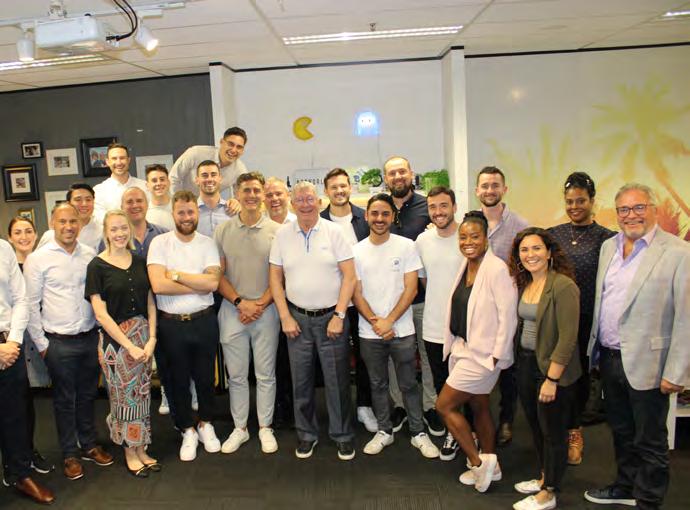
Our market alignment is supported by a cultural fit and shared philosophy across both businesses. The Morson Group’s strategy is underpinned by collaboration, integrity and a clear vision to place people at the heart of what they do, which are values that mirror our own.
Morson Group will present our team with the perfect platform to support sustainable growth, providing our clients and candidates with unique access to a suite of trailblazing recruitment products and services to enhance our capabilities in delivering quality, consultative hiring. Through this partnership, we’ll be able to provide exciting new opportunities for our people, whilst maintaining our reputation that we have worked so hard to build.”
John Green MD of ACRWORLDACRWoRld is an addition to the Group that gives us geographic access to new markets and the ability to source and offer candidates a unique and enviable route to several compatible sectors. We look forward to exploring growth areas, including additional services and markets where we can support our stakeholders.


used by some of the world’s largest and most innovative organisations, Vencuro combines business intelligence with deep learning and understanding of talent attraction and retention to streamline and automate end-to-end talent processes and tackle labour-intensive needs and tasks.





Accessible from anywhere, on varied devices, the intuitive cloud-based platform provides full visibility and enhanced control of candidate attraction, hiring and retention. It also delivers a competitive advantage by enabling users to capture, manage and analyse volumes of data in real-time.
the single sign-on system comprises four stand-alone and intrinsically linked modules. Each can be individually tailored to a client’s wants and needs, for example, to only display data that’s most pertinent such as RoI, KPIs and time to hire.
Recruitment solutions for every need
our mission is simple: provide truly flexible RPo solutions that scale on demand and empower our clients’ talent strategy.
RPo1 is an agile outsourced recruitment service which scales alongside businesses, ensuring they’re prepared for the next phase in their journey.
the ‘one-size-fits-all’ approach to RPo fits no-one.
RPo1 breaks down the blueprint for RPo into individual parts. With packages available for start-ups through to enterprise organisations, we offer clients a recruitment service ‘shopping list’ from which they can cherry-pick to suit their needs.
1. Enterprise RPO: For complete peace of mind
A complete end-to-end, outsourced model, including vacancy briefings, screening, onboarding and aftercare. We take control of every part of your recruitment function to deliver efficiencies, cost savings and continued excellence.
2. Specialist RPO: For specific requirements
+100 active clients
170,000 timesheets paid
for
A fully outsourced model pertaining to sector-specific and/or specialist requirements – perfect for those who operate a robust recruitment function but lack the technical expertise to improve. simply outsource the elements of recruitment which cause you the biggest headache.
3. Project RPO: For talent on demand
An on-demand service to supplement existing in-house talent teams for ramp up/high volume recruitment campaigns. this light-touch option enables businesses to fill niche roles and deploy additional and time-critical resource that bolts onto your existing hiring community.
4. Grow RPO: For start-ups and scale-ups this solution exclusively supports scaling businesses. By plugging into growth organisations and doing the heavy lifting around recruitment, HR, talent planning and branding, we enable start-ups and scale-ups to hire the right people while you focus on building your business.
10,000+ delegates supported to-date
Pathfinders Academy by Morson
We’re passionate about creating opportunity pathways for all, which is exactly why our Pathfinders Academy is focused on levelling up the skills landscape through training and reskilling in digital and engineering disciplines.
our bespoke training courses are available to individuals from all education, experience, and socio-economic backgrounds – and from all sectors – including students and veterans, to those looking to switch careers or return to work following a period of leave.
the ‘morson tech Collective’ – which comprises our three tech recruitment brands, morson talent, the Bridge and Cornwallis Elt, plus our training division, morson training, as well as community partners, career services and educational groups –works with organisations to assess critical skills gaps and create bespoke training programmes that equip candidates with technical expertise.
We train roles in:
- Junior/mid software developers
- Junior devops Engineers
- Junior site Reliability Engineers
With our tech modules spanning:
- software / devops - Javascript
-
C# or Java
Python
We are Morson Training, for diverse futures
As the Group’s dedicated training division, morson training delivers a range of tech, rail, engineering, business and construction courses, virtually and on-site nationally.


With a focus on quality, engagement and social value, we have successfully delivered more than 500 accredited training programmes over the last five years.
Recognising it’s about more than a teacher in a classroom, our purpose is to ensure that anyone – no matter their background, preferences or ability – can access the training they need to improve their lives and achieve a fulfilling career. We work within deprived areas, marginalised groups and communities in need to offer pathways to learning, upskilling and reskilling for all.
Having worked in construction, denzil Bell entered the rail industry via morson training’s rail programme, completing his protecting workers on the track (PW t ) in record time.
Recognising his potential, Denzil was encouraged by his TfL training manager to use his skillset to teach others, and after completing his apprenticeship, he now delivers London Underground training to delegates in Canning Town.
It’s fair to say my disappointment at losing Denzil is far outweighed by the satisfaction of seeing him do well and prosper further. I’ve no doubt his experience will greatly benefit the recruits he trains. As Denzil develops, so does Morson.”
Graham Timbers Morson operations director at Canning Town
We positively impact lives every day. We fuel innovation, empower industry and enable opportunities for people across the geographies we serve. We are nurturing; developing and sustaining workforces of the future.
Environmental
1. Manage our environmental footprint by taking a holistic approach to reducing energy consumption, waste and emissions.
Environmental pledge:
Our ESG efforts are crucial to long-term value creation and growth. We believe that sustainable growth is the only way to build a successful business, provide a solution to the skills crisis and have a lasting positive impact on our environment and society. That’s why we’ve published our ESG commitments in our ‘For Tomorrow’ framework.
• Achieve an average 10% net reduction in carbon emissions in the Group year-on-year for the next five years and achieve net zero (scopes 1 & 2) for morson talent by the end of 2023.
Environmental actions:
Carbon reduction strategy
• shell Fuel Card offset scheme Plant a tree for every permanent placement
• Investment in accredited international offset schemes
• EV chargers and electric fleet science-based targets for Vital Human Resources
Social
2. INCLUSION: Champion and understand the many voices we engage with internally and in the wider market.
3. COMMUNITY: Engage and enrich our communities by supporting causes that make a tangible difference.
4. EDUCATION: Provide education and training to develop the workforce of today, tomorrow and the future.
5. SAFETY: Create harm-free working environments and collaborate with clients to improve the safety of our workers on client sites.
Social pledges:
Empower every employee to make a positive difference to a community in which we operate. Also, make a positive impact in our communities by charitable donations and by providing opportunities for social mobility, fresh starts and new directions.

Social actions:
• the morson Group stEm Foundation
Gerry mason Engineering scholarships
• morson Group scholarships
Intouniversity partnership
• Charity initiatives
Inclusion training
• morson Forces
morson training
• Pathfinders Academy
morson Recruiter Academy
• morson ambassadors
• Community engagement Apprenticeships
• Industry-specific partnerships training and development
Governance
6. Continue to hold ourselves to the highest standards of safety, ethics, integrity and transparency in everything we do whilst safeguarding our people.
Governance pledges:
Act with integrity in all matters with a clear commitment to ethics and transparency. Also, ensure our people work safe and go home safe every day, physically and mentally.
Governance actions:
morson Board of Governance
• Annual reporting supplier and supply chain governance
• Policies and practices e.g. modern slavery, Anti-Bribery, Whistleblowing
• Informational security procedures and training
Work safe, Home safe initiatives
• Close call reporting safety vehicles
• sustainable PPE
Health and safety training
• mental health first aiders
Fit for Work app
• duvet days

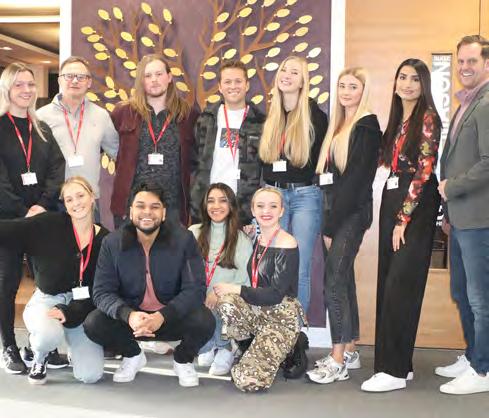
our leadership framework ensures our business and its people are readily prepared for future market challenges and opportunities.
the 12-month programme comprises two cohorts who undergo a mixture of on-site and off-site workshops and residentials.
the programme’s purpose sets out to:
Enable leaders to drive higher performance within their teams through proactive and effective problem solving whilst encouraging the role modelling of behaviours within teams
• Raise leaders’ self-awareness and emotional intelligence by empowering them with the tools to remain calm under pressure, be agile and adaptable, and effectively read a room
Create a common language across the organisation by understanding and embedding core competencies drive future business through increased organisational cohesion
• make leaders more commercially aware with stronger customer focus and relationships, improved data analysis and superior market awareness and strategic visioning
our recruiters have shown the value they add to clients in understanding cultural fit, adjacent candidate skills, pay equity and refining job specs. But the future of the industry needs us all to contribute to the talent within it. As such, our Recruiter Academy was designed to create a sustainable pipeline of consultant talent that will become vital to our business and the future success of the sector.
A 10-week intensive training course is followed by nine months of on-the-job guidance, plus support and training, to ultimately develop our own pipeline of recruiter talent.
Regardless of your education journey or sector experience, we seek enthusiastic people with the passion to learn, achieve and grow to become future morson Group recruitment consultants.
In January 2022, the first cohort Recruiter Academy graduates completed their initial training and began their careers within the Group, and we have since commenced several new cohorts within varied business units.

64 people on our leadership programme
12 new associate director positions
Our Recruiter Academy has supported 46 future consultants
Coming from a different background with different people and adapting to different characters in the workplace is challenging, but at the same time it’s fun, because at the end of the day, I never thought I’d call people I work with family. That’s what Morson brings to you; you are work colleagues but you’re also family and that’s what I really like about it.”
Bruno Bagi Recruiter Academy trainee
Here at morson Group, we set a clear benchmark for big business involvement in the north of England’s levelling up agenda by helping fund a new stEm centre (science, technology, Engineering & maths) and multiple scholarships at the university of salford.


opening to students for the first time in 2022, the state-of-the-art morson maker space facility is part of a long-standing commitment by the Group to give back to the local community and create opportunities for young people who might otherwise be held back by social deprivation.

morson Group, and the mason family, are the main financial backers for the morson Group stEm Foundation, which forms part of the university’s new £65 million science, Engineering & Environment Building.
the stEm centre facilities have been designed to provide students with opportunities to explore new ideas and innovate, gaining handson experience with the types of equipment they can expect to use when they move from education into the workplace.
the centre includes a range of industrial machines and equipment for use by students from across the university, enabling businesses to engage with the university and students in new ways, thereby creating opportunities for employment, training and exciting new projects.
Nurturing Salford’s young talent and creating employability pathways

morson Group, together with the university of salford, is co-funding Intouniversity’s new learning facility at the Beacon Centre in central salford, which is working in the heart of our community to support young people aged seven to eighteen.
In central salford, more than half of young people are growing up in poverty, which has long-lasting effects on educational attainment. the new Intouniversity centre is supporting young people from disadvantaged neighbourhoods in achieving their goals for higher education, employment, and work-based training, whilst also working closely with schools and local families to sow the seeds of aspiration at a young age.
support offered at the centre includes after-school academic assistance, mentoring with local university students and professionals, in-school aspiration-raising workshops, and enrichment and work experience opportunities.
Dr Maria Stukoff Maker Space director from the University of SalfordIt has been wonderful to welcome back students for the new academic year with this fantastic new Morson Maker Space facility, which offers them the freedom to explore their ideas and learn valuable, practical skills.
The Mason family and Morson Group’s generosity will not only be celebrated at this event, but for years to come by generations of students who will benefit from the success of a local company that has given back to the Salford community in such a tangible and lasting way.”
Having grown up in Salford and proudly rooting our HQ in the city, which has supported local talent for more than 50 years, we are passionate about generating opportunities for people locally. Our involvement in the STEM Foundation and scholarship programmes delivers on a long-established commitment to generate opportunity and nurture talent in Salford and demonstrates the role that our business can play.
As recruiters, we know that companies desperately need a pipeline of new skills from young people who can combine fresh thinking with real-world experience of STEM disciplines and the technologies used in today’s workplaces. Levelling up must connect the need for improved outcomes and aspirations with demand for world-class skills and ambition. That’s why we’re working with the University of Salford – it’s an investment in young people’s future, the future of British business and a future UK where there is opportunity for all.”
Mason OBE CEO of Morson Group
A legacy forged by morson Group, together with the mason family, we enrolled our first scholar in 2015, in memory of our founder Gerry mason – a design engineer himself – and in 2022, the Gerry mason Engineering scholarship proudly marked its 50th scholar. delivered in partnership with the university of salford, the Gerry mason Engineering scholarship and morson Group scholarship – launched in 2019 to support students completing a computer degree – continues Gerry’s legacy by enabling budding engineers to study degree-level courses rooted in stEm and removing financial and social barriers to attending university.
these scholarships focus on nurturing future skills for various sectors, including aerospace, automotive, infrastructure, nuclear, engineering, It & digital, and more.
Amongst the Gerry mason Engineering scholarship students to graduate in summer 2022 was Bsc (Hons) Computer science scholar, Alisha sadiq:
37 of our 53 scholars have now graduated

This scholarship has made me feel so much more motivated to work hard and excel in my studies at university. To have a donor who believes in me and supports me is something I’m incredibly grateful for.”
Alisha Sadiq BSc (Hons) Computer Science scholar
Ged
IntoUniversity Salford will support 1,000+ students each year
Within morson Group, we believe in the positive impact of inclusion on our Company, our client’s businesses, the wellbeing of the individuals we support, and wider society. through our partnerships, initiatives, policies, relationships with our clients and our expert Ed&I consultancy, we build teams globally that brim with diverse talent and thought.
In 2022, the Group signed the Inclusive Culture Pledge, marking our fourth consecutive year.
managed by diversity consultancy EW Group, signing the pledge is a public commitment to diversity and inclusion, demonstrating our continued determination to provide our people with a safe, fair, and supportive place to work. What’s more, we have the support of EW Group to keep our diversity action plan on track and ensure we remain at the forefront of positive change.
We are part of the ‘Equality, Diversity & Inclusion Charter’, by Railway Industry Association (RIA) and Women in Rail.
through these programmes we build inclusive cultures every day. our partnerships with northern Power Women, Vercida, the Girls’ network, Reciteme and EqualEngineers further empower us to impact real change, grow as an organisation and impart knowledge to our internal and external networks.
While our partnerships and pledges provide us with an extensive understanding of inclusion in the workplace, our Ed&I consultancy ensures that we impart knowledge to our external networks. our consultancy attracts diverse talent, improves and creates inclusive cultures, and identifies barriers to inclusion in client’s recruitment processes.
thanks to the exceptional fundraising efforts of our morson Group colleagues, we raised over £100,000 for our 2022 charities teenage Cancer trust and Refuge. Activity included bike rides, raffles and even a special charity concert featuring salford-born classical singer, Russell Watson.

“It’s been such an honour and delight to be part of your fundraising journey. A phenomenal amount raised, we’re so incredibly proud of what you’ve achieved in support of young people facing cancer. THANK YOU so much…” – Teenage Cancer Trust

“Thank you for the remarkable amount of money you have raised for Refuge. We’re blown away by your support and have loved working with you. The money will play a huge role in ensuring we can keep our vital life-saving and life-changing services running for women and their children who need us, a huge thank you again!” – Refuge
our employee-elected charities for 2023 are British Heart Foundation and Brain tumour Research.

13,000 people leave the armed forces every year, representing an incredible talent pool with untold skill and experience that is invaluable for business and industry.
In 2022, our Morson Forces division continued connecting ex-forces candidates with civilian opportunities, averaging c.2,000 live placements.
For more than 20 years, our dedicated veteran recruitment arm has supported ex-forces men and women through their transition into civilian life, placing thousands of ex-military contract and permanent staff from the Royal navy, Army and RAF into roles and projects in the uK and overseas.
our morson Forces team comprises a number of ex-military personnel who understand service leavers’ transferrable skills, challenges and needs, and place people into roles for which they are perfectly suited.

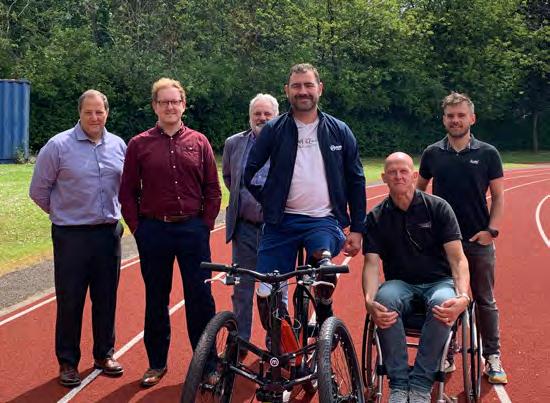
We help individuals with upskilling and reskilling, creating professional networks, and supporting spouses and partners of servicemen and women, and we also advise businesses on how service leavers can add significant value to their organisation.
Corporal Andy Reid MBE is our Morson Forces ambassador. Injured by a Taliban IED while on patrol with the 3rd Battalion The Yorkshire Regiment in Afghanistan in 2009, Andy lost both legs and his right arm.

Ged Mason OBE, Morson Group CEO, is a patron of the Standing Tall Foundation – an organisation co-founded by Andy Reid which supports the mental health and wellbeing of veterans and disadvantaged young people.

With a strong belief in the Armed Forces Covenant, ensuring that those who serve or who have served in the armed forces, and their families, are treated fairly, we were proud to retain our mod Employer Recognition scheme Gold Award in 2022. this is the highest badge of honour given to organisations that employ and support those who serve, veterans, and their families. We have held this award for five years.
We were incredibly proud to receive this award the first time around, but to have it revalidated is an even greater honour. It demonstrates that we are continually going above and beyond our covenant pledge and showcases that our work, supporting the ex-forces community into civilian careers across the UK, is making a true impact.
I’d like to praise the work of the Morson Forces team and internal champions, in particular, our Morson Forces ambassador, veteran Andy Reid, who plays an integral role in continuously serving the forces community. We’ve been lucky to have the support of people like Kristina Carrington (East Anglia RFCA), who has helped us throughout our journey from Bronze through to Gold and onwards to our revalidation.”
Jon Moon Head of operations at Morson Technical Services
throughout 2022, we were gripped following the journey of morson Forces ambassador, Andy Reid, group training director, matthew leavis, and principal engineer, Graham Eardley, as they prepared to climb mount Kilimanjaro and raise funds for the standing tall Foundation.
summiting the mountain a day earlier than expected, we caught up with our intrepid trio to reflect on their experience…
Andy: “ the first bit of the jungle was steady, and I thought it’s not too bad, but then we went down a massive hill where we had to sit and slide down. We then reached a sign that said, ‘You’re starting’ and I thought, we’ve already done 1k! A steep downhill descent quickly turned into a steep uphill climb for around three hours. the magnitude of the challenge then dawned on me, and I had to sit down for a minute to take it all in.”
Veteran and triple amputee, Andy Reid, had already climbed the mountain once before and was determined to re-conquer the summit.
Matthew: “We’d done so much preparation, but nothing could prepare you for the enormity of the task until you’re standing at the base of the mountain, and you can’t even see the summit. We’d been so focused on this trip for two years. We were talking about it for so long. I joined the programme before it was even designed – it was just an idea at that point.”
Graham: “summiting was very weird, and I haven’t really been able to fully process and remember what happened. We set off two hours later than Andy, but we were also another hour behind in terms of distance. We turned things up a gear and managed to catch Andy at the summit. After that, I sat on a rock for a bit to recover and tried to take it all in.”
Matthew: “I was inspired by seeing the commitment of people, how some people walked after the night they’d had. You heard people getting up in the night… let’s just say they were going through a tough time. For them to get up the next morning, and just put one foot in front of the other was a huge achievement.”
one of the highlights of the Kili-Climbers’ expedition was breaking the world record for the highest food delivery on land…!
Andy: “We had some fantastic sponsors, including uber Eats. I used to get the Guinness World Record book every Christmas when I was young, so to have our names in it as a fantastic legacy.”
Graham: “It was, however, an eight-day-old burger, so perhaps not the most appetising!”

Ged mason oBE has become a patron of the standing tall Foundation, the charitable organisation set up by morson ambassador and exforces veteran Andy Reid mBE to support vulnerable young people and veterans in local communities.
Andy founded the standing tall Foundation based on his experiences – proudly serving in the armed forces – 1st Battalion the Yorkshire Regiment. He also believes that the societal factors and personal reasons that lead young people to join the armed forces aren’t always healthy. Carrying personal issues into service brings potentially damaging consequences, only to have them compounded by traumatic events experienced whilst on active duty. Consequently, Andy has spent the last several years offering mental health and veterans support.
the inspiration for the standing tall Foundation came from helping Alex Kemp, another soldier from Andy’s Battalion. Alex was first on the scene when Andy stepped on an IEd in Afghanistan; providing care for him in the crucial minutes after the explosion, Alex helped save Andy’s life.
several years ago, Alex found himself suffering from Ptsd and was also homeless. With the assistance of morson Group and step Forward Homes, Andy helped Alex secure support, work and accommodation, turning his life around.
£20,131
Overall, I’m aching – it feels like I’ve been hit by a Ford Fiesta at thirty miles an hour…!”
There has never been a greater need for support organisations, particularly due to the effects of the pandemic. Ged has become a good friend and role model since I commenced working for Morson Group as an ambassador, and it was an easy decision when I began considering who might be a potential patron for my Foundation. Ged’s involvement can only push the Foundation on to greater things, forging contacts and new opportunities which might otherwise be unobtainable, ensuring we reach as many people as possible.”
Andy Reid MBE
natasha Jonas is one of British boxing’s trailblazers. supported by tyson Fury, Claressa shields, Ellie scotney, and Chantelle Cameron, tash has become a star in the boxing world. With an outstanding amateur career, she was the first-ever female British boxer to qualify for the olympic Games and has since become known as ‘miss GB’.

spurred on by an olympic loss to Katie taylor, in 2017 she turned professional under the tutelage of Joe Gallagher. tash has held the WBo female junior-middleweight title since February 2020, graduating from miss GB to Queen GB.
A key corporate sponsor since 2017, morson Group has championed tash in the sporting arena from the time she turned pro. In 2022, our Coo, Adrian Adair, caught up with the boxing star to explore life outside of the ring; as a mother negotiating a professional dream and bringing up a young daughter.
Adrian met tash at Gallagher’s Boxing Gym in Bolton for an honest, enlightening and inspiring interview about her experience of returning to a professional career after having a baby.
Tell us a little about how you got into boxing and your career to date “my entry into boxing was a good accident. 18 years ago, I was on a scholarship in America playing football and I got injured. devastatingly it was the end of my football career. When I came home, I put on a lot of weight and felt like I had no direction. I realised that within a year of not doing anything, sport was my motivation and drive to be positive and do good things. so, I looked for another sporting avenue to put my efforts into.”
You’ve said in interviews before that you thought falling pregnant meant the end of your boxing career. Can you tell us about this time in your life?
“I was an amateur then. In the 2014 Commonwealth Games, I snapped a ligament in my toe and that injury meant that I’d missed the qualifiers for Rio and I didn’t have any intentions of staying amateur until 2020 for tokyo. so, when I said goodbye to the amateurs, I was effectively saying goodbye to boxing because there wasn’t a pro scene for us here in the uK. I decided within that time to have a baby because, in my opinion, you do have to stop one for the other.”
“I was so glad that I had her. Boxing is such a big void to fill when you’re finished and I think many people struggle with that. the sport takes up so much of your life and when it’s not there it’s so incredibly hard to find something positive to put your energy into. But I was okay because I had my baby to put my all into, but it’s a completely different kind of challenge. You’re trying to be that perfect mum for this new human that you’re now responsible for. You’re trying to take on all the advice and do everything that you’re told correctly and be perfect. this consumed all my energy. But gradually she got into her own little routine, became more self-sufficient and was evolving into her own person. so, there was again this void. then the opportunity came about to go pro with Joe Gallagher.”
How difficult was it juggling being a mother and a boxer to begin with?
“ to be honest, my job might be different, but my experience of being a working mother isn’t. there are stereotypes of what a boxer is, but I’m lucky that all my mates have got kids around the same age. When I would say “I’m struggling a bit” with this or that, I had a support network and my family to be able to go back to. I’d like to think that this was no different from any other working mum. It was just that the routine of my job was a bit different. I’d get her ready for school, I’d take her to school, I’d come to Bolton or I’d go to liverpool to train if I needed. I’d do my two sessions and then I’d go home and pick her up.”
What would you do if your daughter wanted to go into boxing?
“For everything that boxing has done for me. I could never grumble or complain. It’s not just about the skill of being able to box, I am determined, I’m hungry, I’m motivated by myself in the ring or as part of a team in the gym. I’m committed. I’d like to say I’m on time, but Joe might say different!”
“If you ask that employer what you want your employee to be like, they’d say all these things. they’re life skills that can propel you to be in sport or business. I’ve got a job at sky now doing commentary and I’m on a Parliamentary group for boxing – the APPG Boxing Group. that would never have been possible, I was just a snotty nose kid from toxteth. I didn’t think I’d be discussing acts with Parliament and the pathways for young female and male boxers. It’s opened doors, so why wouldn’t I let my daughter do it? there are lots of skills there that boxing encourages.”
Any final advice for other working mums?
“Yes, when you become a mum, do not give up on your dreams. A mum is what you are, not who you are. You’re still entitled to follow your dreams as well as be a mum. You don’t have to stop one for another.”
Morson
Our sporting sponsorships are borne out of an ambition to attract skilled, hard-working individuals to build high performing teams, whether on the pitch, in the ring or in the world of work.
Rugby
– Sale Sharks
– Salford Red Devils
Combat Sports Boxers:
– Tasha Jonas
– Campbell Hatton
– Ricky Hatton
– Nathan Gorman
Clark Smith
– Ibrahim Nadim
Paul Butler –
Jordan Thompson
Boxing promoter:
– Kieran Farrell
MMA fighter:
– Lewis McGrillen
MMA gym:
– Manchester Top Team
Horse Racing Racing stables:
– Paul Nicholls Racing LTD
Jockeys:
– Harry Cobden
– Bryony Frost
– Harry Skelton
You feel the social pressure to be there for your child
It’s not just about the skill of being able to box, I am determined, I’m hungry, I’m motivated by myself in the ring or as part of a team in the gym. I’m committed.”

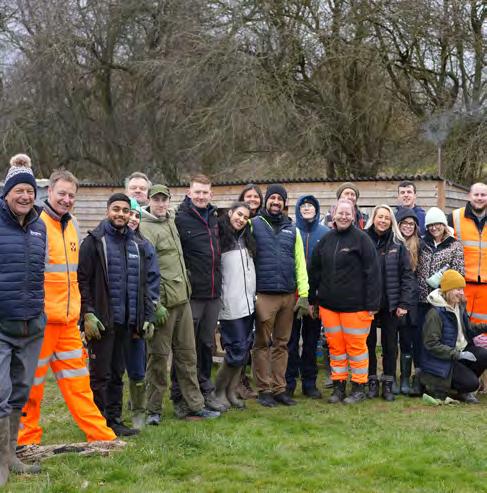

Streamlined Energy and Carbon reporting (SECR) Statement

the below statement contains morson Group limited’s annual energy consumption, associated relevant greenhouse gas emissions, and additional related information, as required under the Companies (directors’ Report) and limited liability Partnerships (Energy and Carbon Report) Regulations 2018.
this is an aggregation of the data associated with three subsidiaries within the Group that are required to report under this legislation: morson Projects ltd, morson Human Resources ltd and Vital Human Resources ltd.
2,188
7,530
Methodology
the methodology applied to the calculation of Greenhouse Gas emissions is the ‘GHG Protocol Corporate Accounting and Reporting standard’. An ‘operational control’ boundary has been applied. Carbon conversion factors have been taken from ‘uK Government GHG Conversion Factors for Company Reporting – 2022’. Emissions are reported as Co2e. Electricity emissions have been reported as both ‘location and market-based’ – this is the first year that we have undertaken dual reporting of electricity.
Energy use and greenhouse gas emissions
the total annual uK energy use and associated GHG emissions relating to the consumption of electricity, natural gas, and fuel consumed for relevant business transport purposes, for the period 1st January – 31st december 2022 and a comparison with 2021.
For purposes of baselining and ongoing comparison, it is required to express the emissions using a carbon intensity metric. the intensity metric chosen is £m turnover.

In 2022, we continued the activities actioned during the previous year to reduce energy usage as well as adding additional measures, which include: using motion sensor lEd lights
• Increasing the percentage of our electric and hybrid vehicles, which now account for 78% of our car fleet
• maintain a modern commercial fleet with all vehicles being under four-years-old
All fuel purchased through our shell fuel cards is offset
• We are gradually moving all our managed offices to renewable energy electricity as their current electricity contracts expire
• We issue quarterly HsQE bulletins to staff to encourage greener behaviours around energy reduction and recycling
In association with treeapp, the Group has pledged to plant a tree for every permanent placement we make, ultimately helping to tackle global deforestation and maintain the delicately balanced ecosystems that make up our world.
thanks to treeapp, our planting activity is performed by tree planters across the globe, who work collectively to ensure that tree planting benefits endemic species and the communities around them.
Forests around the globe are shrinking at an alarming rate, whilst also reaching their maximum carbon storage capacity. numerous approaches are in motion to mitigate this effect, but only by planting more trees can we increase carbon capture, revitalise species and provide wider social and economic benefits to local communities.
The resultant emissions intensity is 6.08 tCO2e/£m
based on our market-based emissions total.
We’ve planted more than 7,000 trees across multiple global locations, spanning Madagascar, Tanzania, Nepal and Indonesia
Our ‘Morson Group’ trees planted in 2022 will absorb 820 tonnes of carbon across their lifetime
the Board, operational Boards and each layer of management recognise and understand that the perspectives of our stakeholders and the building and maintaining of positive relationships must remain central to achieving our purpose and delivering on our strategic framework. this Annual Report outlines key decision making for 2022 and notable milestones contributing to the Group’s collective success. our acquisition of Australian recruiter ACRWoRld –detailed on page 25 – showcases our commitment to adding new business units from those in complementary markets whose culture, vision and values mirror our own.
the principles of s172 of the Companies Act 2006 underpin good governance and deliver intelligent decision making. We also recognise that not every decision will result in a positive outcome for our stakeholders, but we are committed to delivering on our purpose and values, together with our strategic priorities and strong corporate governance, to successfully guide our actions and deliver balanced results that generate value.
We must listen to and act in accord with our ethical values and those of our stakeholders by cultivating open, honest and fair dialogue.
the main Board meets regularly, and each executive member of the Group also sits on the operational Boards of our business units, ensuring stakeholder insights form part of Boardroom discussions and drives key decisions.
People are our greatest asset, and our Group culture, brand and family values bind us. they make our purpose a reality and are the ambassadors for our brand.

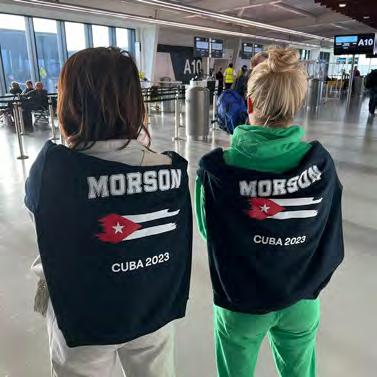
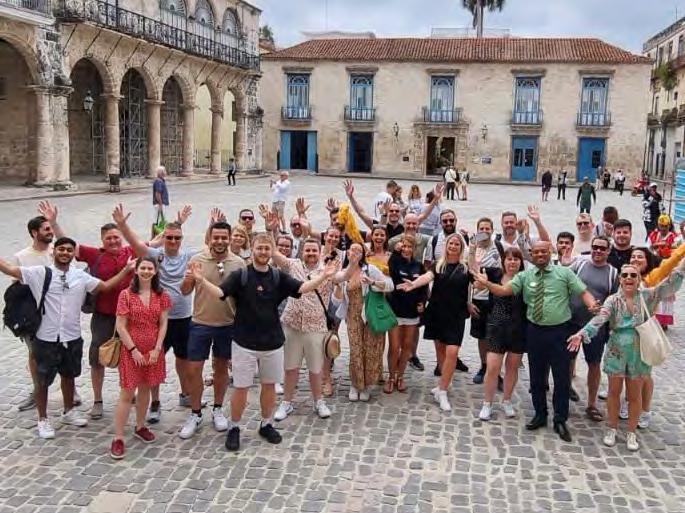
Our employee engagement initiatives include:
• our employee promises our values
• Informed and regular internal comms
Equality, diversity & inclusion (Ed&I)
Annual engagement surveys
• Health and wellbeing
An open door policy with the Board, including regular workshops with our CEo where people are encouraged to discuss all manner of topics, with no conversation considered off the table
• Annual conference
HR presence at Board meetings
• leadership programme Recruiter Academy our ‘For tomorrow’ framework
We’ve always been a people-focused business. We constantly listen to our colleagues, actively encouraging feedback and providing numerous avenues to ensure their voices are heard. Employee engagement drives better service quality and productivity, which is fantastic at a commercial level, and, most importantly, offers our team a workplace which puts them front and centre of strategy and success.
For Best Companies to recognise our improvements year-on-year demonstrates our ability to listen to our colleagues, and knowing this latest accreditation is based on direct feedback from them showcases the measures we have put in place to create a thriving environment and empower our people to deliver their very best, every day. The list is so competitive, and lots of worthy businesses feature every year. We provide consistency, ensuring our people remain supported in many different ways, so this year’s listing means even more to us.”
Katie Winstanley HR director at Morson Groupunderstanding our client’s talent needs and behaviours allows us to continuously improve our peoplecentric services and solutions, retain key relationships and attract new ones. doing so helps to drive additional revenue and increase profitability, which we can reinvest in new opportunities for continuous improvement and growth.
Our client engagement initiatives include:
• our client promises
Quarterly meetings offered to all key clients (QBRs), including satisfaction metrics and feedback
Real-time reporting, with KPI performance and a client’s percentage of overall Group turnover fed into the Board
Evolution of our business units
• Experienced marketing and bid teams
• live analysis of customer renewal cycles and new business opportunities dedicated account managers for key clients
social media engagement and online tools, including newsletters, blogs and thought leadership content
• Pathfinders Academy
our suppliers and contractor workforce benefit most when we forge long-term, meaningful relationships. We rely on the high standards of our selected suppliers to maintain delivery excellence and treat them with respect, as we recognise their contribution to our business units.
Our suppliers and contractor workforce engagement initiatives include:
• our candidate and contractor promises
• dedicated contractor care team
Reporting of payment practices and payment terms supplier feedback, garnered through contractor surveys, workshops, site visits and direct conversations, which is analysed and acted upon to deliver continuous improvement social media engagement and online tools
Regular meetings with key/ preferred suppliers
Pathfinders Academy
As one of salford’s largest employers, we have a responsibility to develop a long-term strategy that delivers a social value legacy within the communities in which we operate, while delivering clear action against climate change. We replicate lessons learned at our head office throughout our network of locations.
The communities within which we operate engagement initiatives include:
• morson Group stEm Foundation
university of salford scholars
• Intouniversity partnership our charity partners
• upskilling local communities
PR and media relations multiple sponsorships
• our ‘For tomorrow’ framework our environmental commitments
our shareholders remain informed of Group operations. their input and observations are welcomed, and the Board considers these when assessing strategic decisions and maintaining our business model, performance, culture and good governance. dividends are paid to the parent company of the Group mmGG Acquisition limited. For the dividend strategy of the wider Group please refer to the Annual Report and Financial statements of GGm Holdings limited.
The communities within which we operate
As demonstrated within this report, 2022 has been a very good year for the Group, with markets picking up after two years impacted by CoVId-19 and legislation, despite some macro-economic challenges. trading activity has seen some marked increases, record milestones reached, an overseas acquisition, client contractual extensions and wins alongside the Group continuing to invest in its services and staff workforce. Again, our hard working, exceptional staff paired with the inherent resilience and the robust and agile nature of the business has helped the Group post another commendable record result.

The impetus carried into 2022 meant the Group had a good start to the year and demand for our services was high as client workforces grew. This remained the case for much of the year and in particular permanent income saw record levels from both existing teams in Morson Talent, Anderselite and The Bridge and the acquired teams within Cornwallis Elt and ACRWORLD boosting this significantly yearon-year. Core contingent workforce supplied also grew to record levels, as did the design services and support provided by Morson’s Engineering businesses Morson Projects and Waldeck.
Within the IT market the Group has expanded expertise, capability and presence such that our IT sector delivered some 8% of revenues. Our complementary acquisition of ACRWORLD in Australia with their expertise in renewables opens more areas of opportunity for us and this, with North America, is an avenue to grow overseas footprint and support clients and candidates wider afield. These sectors and the range of services we provide to them all speak to the core technical capability and focus of the Group which has been there though our 54 years in business. All this together resulted in the Group surpassing the £1 billion revenue mark and importantly delivering record adjusted profits too, a milestone achievement.
There is much commentary about the core STEM skillsets and their need within “UK Plc”. This is perhaps even more heightened as a result of global politics focusing the UK on many aspects of increasing national capability to reduce or better manage external dependance. Examples of this include defence, energy and infrastructure programmes including transport. In these areas the Group is very well placed to provide talent and engineering services to many businesses supporting what are often government backed initiatives to build, enhance and maintain asset infrastructure.
The business has also continued to manage its balance sheet effectively. We are proud to support our high-quality clients. Our debtor book is robust and closely maintained and we keep close and respectful relationships with our suppliers. The year saw us renew and extend banking facilities and accordingly the core invoice discounting facility that the Group operates for its working capital maintains a notable excess capacity.
Average contractor numbers 2022
16,100 Net fee income (NFI) £122.4m

the Group has kept and added to its very strong client portfolio including long-term relationships with many customers, and framework agreements that aid future visibility significantly. Whilst the forthcoming year will as always hold its own challenges our spread of service offering, excellent staff, sector expertise and the commitments to the markets we operate in find us well placed and excited for the future.
the year 2022 saw revenue grow by 20.7% and nFI (gross profit) margin of 10.6% (2021: revenue grew by 11.1% and nFI margin was 10.2%). Adjusted profit before tax of £35.4 million* is a £5.6 million increase from the £29.8 million achieved in 2021.
Group revenues in 2022 increased by 20.7% to £1,151.7 million from the £954.6 million achieved in 2021. Recruitment saw revenues increase by 21.2% from £882.8 million to £1,070.0 million and engineering design consultancy saw revenue rise by 13.8% from £71.8 million to £81.7 million in 2022. Group nFI was up 26.2% to £122.4 million (2021: up 16.8% to £97.0 million).
the split of nFI across the broad categories of temporary and permanent (including RPo) recruitment and engineering design consultancy was £88.7 million, £18.4 million and £15.3 million respectively (2021: £74.4 million, £9.2 million and £13.4 million).
Percentage nFI to revenues at Group improved at 10.6% (2021: 10.2%) and across operating segments, margin in temporary and permanent recruitment increased to 10.0% (2021: 9.5%) and in engineering design consultancy and management it increased to 18.8% (2021: 18.6%).
Adjusted EBItdA increased by £6.9 million to £45.1 million (2021: £38.2 million) and at business segment level within recruitment activity increased from £33.8 million to £39.4 million and within engineering design consultancy and management it increased from £7.3 million to £8.7 million.
Group shared costs in 2022 were down by £0.7 million to £4.0 million (2021: £4.7 million). In 2022 Group shared costs included exceptional costs of £0.2 million (2021: £0.9 million). operating profit increased by 15.9% to £35.6 million (2021: £30.7 million).
Group ‘Conversion Ratio’ is measured as the ratio of adjusted EBItdA to nFI (as shown in the table on page 43). In 2022, a ratio of 36.9% has been achieved (2021: 39.4%). Conversion ratios at segmental level saw design consultancy increase to 57.0% from 54.8%, whereas recruitment activity decreased to 36.8% from 40.5%.
Government support update
the Group did not receive any grant income in 2022 in relation to the uK Government’s Coronavirus Job Retention scheme (CJRs), which was introduced as a response to the CoVId-19 global pandemic. under CJRs, Her majesty’s Revenue & Customs (HmRC) provided uK companies with a non-refundable grant equivalent to a portion of wages, associated employer national insurance and employer pension contributions for employees and temporary workers who were retained in employment but placed on furlough. In 2021, having met the appropriate criteria, and in line with our clients’ advice, £0.2 million of grant income was received for temporary and employed workers, which was recognised in cost of sales. £0.2 million was received for employees and was recognised in staff costs in administrative expenses. the final period this was applied to was may 2021.
our us business made use of the Paycheck Protection Program (PPP) as established by the 2020 us Federal Government Coronavirus Aid, Relief and Economic security Act (CAREs Act). PPP loans can be used to help fund payroll and other costs and if certain terms are met may, in part, be forgiven. A loan of £0.9 million was advanced under the scheme in 2020, with a successful forgiveness of £0.7 million in June 2021 and the balance of £0.2 million was repaid in monthly instalments through to April 2022.
In 2022 total exceptional costs incurred are £1.5 million. this is made up of £0.5 million incurred as a result of the reassessment of the consideration payable on the acquisition of Cornwallis Holdings limited, £0.2 million was incurred associated with regards to corporate finance and advisory services, £0.5 million was an exceptional charitable donation, and £0.3 million was professional fees incurred for the acquisition of ACRWoRld Pty limited.
In 2021 there was an exceptional cost of £0.3 million incurred regarding professional fees and stamp duty for the acquisition of Cornwallis Holdings limited. A cost of £0.9 million was incurred associated with regards to corporate finance and advisory services.
Finance costs incurred in the consolidated income statement include three elements. Firstly, a finance charge of £0.8 million (2021: £0.2 million), being the costs incurred on borrowings and facilities linked to bank base rates.
secondly, there are finance charges of £2.2 million (2021: £2.1 million) for provision of banking facilities and financial payments along with charges from payment and receipts mechanism providers linked to day-to-day transactions.
thirdly, there are interest charges on lease liabilities of £0.7 million (2021: £0.5 million). * S ee definition on page 43 and derivation on page 45.
Derivation of key performance indicators from consolidated income statement
Core Group financial facilities remained in place through the year. the Confidential Invoice discounting facility has a borrowing charge calculated using bank base rates plus an agreed margin on amounts drawn. this flexible facility allows the Group to borrow only what it needs and thus the Group’s interest cost is commensurate with the working capital needs of the business.
Interest cover, being the ratio of adjusted EBItdA to finance costs, decreased to 12.4 times (2021: 13.5 times).
measured on the costs incurred on borrowings and facilities this would be 32.5 times (2021: 57.6 times).
Derivation of key performance indicators from notes to the consolidated income statement regarding segmental reporting
the Board feels that the adjusted profit before tax measure helps understand performance and set out on page 45 are the adjusting items deriving this and a comparator for the prior year. In 2021 this has grown by 18.9% to £35.4 million (2021: £29.8 million). Actual profit before tax after these matters grew by 12.0% to £32.6 million (2021: £29.1 million).
Tax
the Group’s effective rate of tax for the year was 35.3% (2021: 30.6%), higher than the standard rate of tax of 19.00% (2021: higher than standard rate of 19.00%). the key factors impacting this underlying charge for the Group, which tend to increase the tax rate, are the payment to parent companies for Group tax relief, absence of tax relief on certain amortisation costs, higher rates of tax overseas, and certain disallowable business expenses. offsetting these factors to a degree are certain costs that qualify as research and development expenditure and are eligible for the Research and development Expenditure Credit (RdEC), which is recorded as other Income.
the increase in the uK corporation tax rate to 25% from 1 April 2023 has been reflected in the value of our uK deferred taxes balances.
Dividend
the Board has not recommended that any final dividend be paid (2021: no final dividend paid). A total interim dividend for the year of 44.11 pence per share (2021: 7.72 pence) was paid to the immediate holding company. the total dividend was covered 1.1 times by current year earnings in 2022 (2021: covered 5.8 times).
Working capital funding is via the core Confidential Invoice discounting facility that is secured on our largely blue-chip debtor book. the directors believe this type of facility is entirely consistent with that used by companies providing similar services and is one that suits the Group’s business model very well. Costs are largely on a bank base rate plus margin basis and the facility period is to 21 december 2025.
In 2022 the Confidential Invoice discounting facility capacity was increased to £100.0 million from £85.0 million. At 31 december 2022 £44.5 million of the facility was utilised (2021: £26.0 million).
net debt (see definition on page 43) at the 2022 year end was £37.9 million (2021: £23.1 million) with average net debt (see definition on page 43) over 2022 of £23.5 million (2021: £3.7 million). We feel looking at average levels gives a better measure of true borrowings as fluctuations day to day can be material, CoVId-19 also had the effect of reduced borrowings through some months of 2020 and 2021. Average net debt has remained low due to improved profitability and extended supplier payment terms.
As noted below debtor days have decreased a little and creditor days have remained constant. As a business the Group has tried to maintain, wherever practicable, payments to creditors at least in line with contractual terms to support our suppliers. We are pleased to report that despite the pandemic our clients have, for the most part, maintained payments to us in a similar vein.
some other key impacting factors include:
• Changing client-specific volumes of activity, credit terms and payment profiles
• the nature of recruitment segment temporary business is that increases/(decreases) in revenue streams create increases/ (decreases) in working capital outgoing costs and expenses including the timing of pay to the contractor workforce, investment in staff, structure, service delivery and acquisitions
• seasonal impacts, for example, public holiday periods of Christmas and Easter
through 2022, working capital increased by £2.3 million (2021: increased by £13.4 million), reflecting some of these factors. Cash collection patterns through the year were broadly consistent with prior periods across all businesses within the Group. overall an indicative calculation counting revenue plus closing rate VAt back into trade related receivables, gives debt-turn at the year end of 51 days (2021: 55 days).
tax paid during the year was £5.8 million (2021: £3.8 million). Capital expenditure settled by cash was up by £0.3 million at £2.5 million.
Balance sheet
Group net assets at 31 december 2022 were £128.5 million (2021: £127.5 million). this increase principally reflects retained profits for the year, less the dividends paid to the Company’s immediate holding company. the increase also reflects the acquisition of ACRWoRld Pty limited. At acquisition, identifiable net assets and goodwill of £1.5 million and £4.7 million were recognised respectively.
non-current asset levels increased from £83.9 million to £125.1 million. this is largely due to the recognition of goodwill and intangible assets following the acquisition of ACRWoRld Pty limited, purchase of property, plant and equipment and the classification of part of the debtor balance with the Parent Company as due after one year.
the principal asset of the business remains trade and other receivables of £242.0 million (2021: £210.2 million), of which £198.5 million (2021: £175.3 million) is in respect of external debtors. Contract assets receivable are £2.8 million (2021: £1.3 million). As noted above the debt turn on this is broadly consistent with prior performance.
Current liabilities largely comprise trade and other payables of £136.4 million (2021: £112.9 million), contract liabilities of £3.7 million (2021: £3.1 million) and invoice discounting facilities of £44.5 million (2021: £26.0 million). the trade and other payables cycle is short as much of the cost of sales relates to workforce on weekly or monthly terms, so creditor days are 18 days (2021: 18 days). As noted the Group has continued to strive to pay creditors to terms.
the invoice discounting facilities are better considered at average levels, as discussed above.
Current lease liabilities recognised are £3.6 million (2021: £3.1 million) and non-current lease liabilities recognised are £22.3 million (2021: £22.2 million).
Further consideration of the going concern basis is provided in note 2 to the financial statements.
Approved by the Board and signed on its behalf by:
Paul Gilmour Group Financial Director 31 may 2023Whilst the overall accountability to address this risk rests with the Board, risk management and the day-to-day practice and systems adopted must and do form part of the Group’s culture and processes. this is tailored within business units or sectors to match their circumstances and commercial requirements.
ongoing assessments are made within the Group to identify, evaluate and address the business risks we face, and the systems adopted are designed, monitored and adapted to manage these risks appropriately. We aim to provide reasonable assurance against all material misstatement or loss.
As part of the risk management process, operational Boards within each business unit, and sometimes also across these units that have shared relevant sector exposure or responsibility, are tasked with assessing the risks that apply.

Appropriate systems are then developed and monitored to manage this and report back to the main Board on a regular basis. some areas of risk are more centrally managed and dealt with across the business, for example, interest rate exposure via Group finance teams, whilst others are more operational and link to day-to-day practices and compliance.
Assessments are performed regularly and include:
non-financial formal risk assessment audits conducted by internally trained and qualified staff, for example, design services peer review, health and safety audits for rail and offices, and contract operation and review
non-statutory external audits and advice
• operational review and approval processes for commitments made by the Group
• open and direct access to the executive team and operational directors for all employees
Appointment of compliance officers with designated areas of responsibility
A robust and caring approach to employee and contractor health, safety and wellbeing detailed financial information disseminated to stakeholders of operations within the organisation
Central review and control of reporting processes and data submitted
the Board carefully considers all reporting from operational Boards and internal compliance teams, in addition to existing and new operations that might require new assessments to be made, and keeps itself appraised, with appropriate advisers, of latest practices and requirements within the markets within which it operates. the ongoing operational and financial performance of the business is a key part of every Board meeting and a main agenda item. similarly, detailed reports are prepared within business units of a financial and operational nature and these are part of the day-to-day management of the business, often with real-time information.
the directors have carefully considered the processes and systems in place to manage the risk profile of the business over the last year and for the future and have taken appropriate action. some of these material risks are identified below and include business, financial and that of the economic environment.
the Board recognises that effective assessment and management of risk is key for the delivery of the Group’s strategic goals and operational requirements.
our clients have their own and often their customers’ demands and requirements to contend with, and this impacts upon their call on us for our services.
significant downturns may adversely affect business levels. the general economic wellbeing of the uK, which accounts for c.95% of Group revenue, is clearly important.
Government spending on defence, energy and infrastructure is a factor, as is wider aerospace and defence activity, being the largest sector for the Group.
similarly, upturns in economic activity can put pressure on client cash flows and lead to a different set of problems, for example, supply metrics and overtrading.
over the years 2020 and 2021 the market and uK economy have seen the CoVId-19 pandemic cause added levels of volatility and change. Whilst 2022 saw reductions in impact from CoVId-19, unfortunately the war in ukraine and subsequent impact on uK and global economies has seen pressures ensue, for example rising interest rates and lower growth.
We remain close to our markets, listening to clients and seeking to understand both them and their sector resource requirements to help us plan for the near and far term.
Whilst as a Group we remain focused on technical and engineering services, which is our core capability, we have sought to spread our sector exposure and the breadth of services we can supply, as this gives access to differing markets and economic cycles. Acknowledging this, and that we also supply to a blended underlying remit of maintenance and new project work, and to existing and new markets, helps continuity and opportunity, and this is something we regularly review.
our predominance of supply of temporary, rather than permanent, contractors is also, we feel, a less volatile and more flexible income stream. other factors include: within the aerospace and defence areas we encompass military, civil and marine projects; we also supply a wide range of skillsets; we can perform design work packages; and we have a geographic spread of customers.
these existing strategies have helped deal with pressures caused by the pandemic and other pressures on the market and we look to maintain and build on this robustness and diversity of offering where possible.
this is clearly an ongoing and key risk for the business. With the CoVId-19 pandemic eased from the extremes of 2020/21 we might have assigned a reduced comparative risk. However we maintain trajectory given the situation in ukraine. We note we do not operate in the region and have very limited revenues from Europe. We have considered incremental energy prices in forecast sensitivities and note our provision of services to the uK infrastructure, power and defence markets have resource demand.

the political discussion, debate and activity in this regard has been widely publicised. We are another year on into working within new political and legal frameworks. We will continue to closely monitor any change in respect of detailed aspects of the relationship with the European union.
the level of trade to and within Europe remains relatively low for the Group at c.1% of revenues. this is monitored and any new activity assessed in light of the political situation. However, we are aware of and acknowledge that there are several Eu owners of uK companies we trade with.
the Group’s knowledge of its markets, clients and contractors and legal requirements is key, and we continue to liaise closely and consider what impact this might have on clients’ demands and our operations. Assessment is monitored and as the situation develops, we will adapt and change, as is required.
Where particular clients comprise significant proportions of the Group’s activity, either cessation of our contracts of supply to them, reduction in business levels or failure to pay due sums could adversely affect profitability and cash flow.
It is a strategic aim to maintain the larger client relationships that we have managed to achieve and this is a key managed risk.
strength of client relationships is a priority for the Group, and innovation and development of service offerings helps longevity and understanding. We seek high financial strength and business integrity in clients with whom we contract, in particular those accounts of material size.
these factors are monitored throughout the duration of contracts. Whilst cessation of any key contract is clearly not desirable, there are several major clients in each sector where contracts do tend to periodically come back up for retender. We note any cessation would have an associated release of working capital. Also acquisitions have tended to increase the client base and diversity of the Group rather than raise concentrations.
As the Group seeks to expand into newer geographic or business areas, organic or acquisitive investment may be required and understanding of markets needs to be gained to ensure the cost and cash outflow is justified and the asset integrated into the Group.
the Board is careful in considering investment expenditure and regional and national growth. the need to expand the scope of services offered by the Group is assessed, balanced and controlled at sensible levels, whether organic or via acquisition. Acquisition decisions are made by experienced Board members of the Group with appropriate professional advice and assistance and commercial assessment from within the business.
noting the more recent acquisitions and new business activities, due attention and focus on assessing returns and integration is being given to these. the Board will maintain its careful, balanced approach to this area.
the recruitment market in the uK is well established, particularly in the technical engineering sector, and competition is fierce. At risk are existing business relationships, margins and contractor supply.
the Group has many years’ experience within our market and both a strong database of candidates and a prestigious client list. the Board is kept aware of pricing pressures within the market and all tendered material business development opportunities.
Investments continue to be made to develop services and It platforms, to seek to provide market-leading solutions for our clients and business operations.
Measures to mitigate the risk
Reputation should standards of service delivery fail to meet the levels required or perceived, the morson Group brand might be adversely affected, impacting brand value, business performance and current and future opportunities.
External and internal quality control processes and procedures are in place and monitored. the business culture within the Group is focused on professionalism, core values and delivering as a team on client and contractor service.
staff, contractor and client groups are engaged to encourage awareness and develop positive relationships. through social and charitable activities, the Group seeks to give something back to the communities that support our business, our core values express this ethos.
the Group is required to operate in line with the laws and regulations of the countries and sectors within which it operates. this encompasses a wide remit, including contractual arrangements with suppliers, contractors and staff, data management and systems. Failure to adhere to these could expose the Group to fines, penalties, reputational damage and trade restrictions.
the Group has invested in its systems and the training and capabilities of its people to develop, maintain and keep up-to-date the knowledge and experience built up within the organisation.
this focus on compliance continues each year with our teams keeping abreast of regulatory requirements via various means, including directly with governmental bodies, professional advisers, advice from membership of professional associations and consultants. the risk in this area has increased over recent times with much legislative and regulatory change directly impacting our sector.
the Group relies on debt financing to continue to operate its business model. the finance provider is key, as are the business processes surrounding cash flow within the business. If these are disrupted, there is a risk that the cash flow falters and that debt facility agreements are distressed. Interest rate changes can cause pricing of these facilities to fluctuate.
the Group has a very strong focus on the working capital needs of the business and monitors these daily. Future plans and investment are always considered only in the context of available facilities and mindful that the Group can continue as a going concern and provide returns for shareholders.
the debt financing facilities are regularly reviewed, and in 2022 a renewal and extension to our existing long term arrangement was negotiated which extend the facility to december 2025. We have a close and long term working relationship with our finance provider and processes to monitor, plan and manage cash flow have been implemented commensurate with a business of our scale. We closely monitor interest rates, facility usage and costs and take a prudent approach , ensuring headroom is maintained.
Debtor failure to pay
Credit is extended to most clients of the business at varying levels. If client businesses fail or are unable to pay their debt to the Group, at all or on time, then cash flows are disrupted.
Clearly the CoVId-19 pandemic put additional pressures on several clients, and government support programmes that have helped have diminished or moved into repayment. Also the more difficult economic environment and rising costs and interest rates will impact our clients.
the Group engages strong internal disciplines and assessment with respect to levels of credit extended to clients, seeking to ensure that these are commensurate with the clients’ status and ability to pay. similarly, credit control procedures within all operating companies are robust, measured and, where issues do occur, they are swiftly escalated to senior management to resolve. Credit insurance policies have also been adopted in most material areas within the Group that can provide a level of assurance for certain debts, which has helped to manage risk in this area, although there are several risks which the insurance will not cover or where cover is limited. Whilst 2022 did not see increased levels of client failure we are not complacent, and mindful of reducing government CoVId-19 support and economic pressures, where appropriate we have sought to limit exposure, provide against doubtful debt and monitor credit policies.
the business relies on a range of systems and software infrastructures to deliver services. Its database of candidates is a key asset. loss or interruption of access to these could disrupt client and supplier services, creating risk to business operations.
there has been continuous investment in the It infrastructure of the Group. this seeks both to improve operational functionality and protect and make more secure the platforms that they operate on and within. this has also embraced the need for heightened levels of home working for many employees and the associated management of those assets, software support and integration.
Investment in new hardware and software has been made and continues. Planning and careful assessment of adverse scenarios and disaster recovery (dR) procedures are in place. the Group is aware of the heightened risk of cyber-attack generally and has continued to invest to help protect our It infrastructure. Additionally, the Group has undertaken a substantial operational exercise to ensure that we adhere to GdPR and sought and achieved and maintained recognised accreditations for example Cyber Essentials and Iso27001.
Staff retention and recruitment
there is a risk that staff holding key relationships and business contacts leave the Group. similarly, appropriate recruitment of high-quality and motivated employees is needed to take the business forward.
Client relationships, particularly on larger accounts, are held across a spectrum of staff within the Group in order to provide the best service possible and to maintain knowledge across and within the organisation.
staff wellbeing and morale is a high priority for the Board and a positive and dynamic working environment is encouraged to help recruit and retain the highest quality staff. Particular emphasis to this has been given in recent periods with the impact of CoVId-19 and the need for talent to support operations including training initiatives and career development programmes. We have successfully increased staff numbers over the past year.
the business must develop and support business systems to accurately measure performance and delivery on a timely basis. Failure to do so could lead to poor management information adversely impacting the decision-making process. this includes accurate assessment, measurement and reporting requirements across financial and operational areas of the business.
significant investment over many years has been made in maintaining and improving business systems and in the skilled personnel to operate and develop these systems in line with business needs. staff are trained in use of these systems to gain capability and understanding of them with appropriate cover. this also includes having the control environment and trained workforce to have the required skills for monitoring and assessment of contractual relationships the Group enters into and managing the delegated authority required to run the business. this includes engaging the staff within acquired entities to embrace these mechanisms and controls. Enhancement to these systems and software has been made with regards to homeworking practices.
People and systems are at the heart of what the Group does as is the economic environment in which it operates. A sustained or severe spread of an infection, disease or similar malady or highly contagious illness might impact the Group’s delivery of services, its staff, client base and supply chain. At whichever regional level, this could lead to significant downturn in demand for services, challenges to operational delivery and adverse economic impact in all financial and operational areas.
Clearly the CoVId-19 pandemic saw significant impact on the Group and its clients, staff and contractors.
the Group has a robust and tested disaster recovery policy and aspects of this and its ongoing investments into the technological base of the Group’s operations would assist many aspects of such a pandemic. Investment in these and their efficacy and continual improvement continues and is a cornerstone of operational Board review.
staff welfare, awareness, engagement and training are promoted and are key and their means of working can be flexible and adapt to meet circumstance. the CoVId-19 pandemic saw the Group very swiftly accommodate many staff working from home, with remote access to systems and minimising manual processes and intervention. similarly adapting to clients’ changing circumstances is important and we have the commercial experience and agility to positively engage supplier and client requirements as needed.
lessons learned during the CoVId-19 pandemic have helped inform and develop systems processes and the experience would be valuable should such a situation re-occur. From a financial perspective we carry insurance to help mitigate risk and have financial facilities with substantial headroom and review and monitor their capacity regularly.
the directors are required to satisfy themselves as to whether the financial statements of the Group should be prepared on a going concern basis. As part of the ongoing duties and activities of the Board, there is continual assessment of the Group’s financial and commercial performance. this review considers business risks and uncertainties, discussed within the strategic Report, that exist and takes account of how wider economic circumstances can impact these, including due consideration and assessment of potentially adverse and testing situations.
the core sectors the business supplies to are involved in key engineering delivery and maintenance and development of infrastructure and often government backed programmes, for example, energy, transport and military programme support. many of our clients are long-term customers and contracted on framework agreements that aid future visibility.
the Board have considered detailed forecasts looking forward to and past the end of 2024, considered reasonable possible sensitivities including regarding decreasing levels of trade, interest rate fluctuations, receivables profiles and the Group remains compliant with any covenants and is confident of finance facilities in the forecast period. the directors have also considered the financial support required for these forecasts and note that the Group’s current financing arrangements run until 21 december 2025 for its invoice discounting facility and until 21 december 2025 for long-term borrowings, with potential to extend the longer term borrowing agreement for a further one or two years.
Additional but reduced comment is made in light of the impact of CoVId-19 on trade which was predominantly in the years 2020 and 2021. throughout the Board continued to closely monitor the impact of the pandemic on trade across all business units, alongside monitoring the cost base of the Group. this and close contact with our clients helped inform business operations and activity levels and forecasts for future periods. In the latter part of 2021 as some more of the restrictions of CoVId-19 were released we saw increased activity and confidence in several sectors and the impact of CoVId-19 lessened in 2022.
the directors feel the business responded very well and rose to the challenge of this unprecedented pandemic situation. the experience of the business through different economic cycles is also considerable. Whilst the Board is not complacent and recognises pandemic risk, we have learnt from experience and currently, the impact of CoVId-19 on the business is managed and not exceptional.
Having properly considered the matter, the directors conclude that they are satisfied that these financial statements should be prepared on a going concern basis.
Years of experience: 30+ years’ industry expertise.
Area of expertise: leads on strategic development, acquisitions and implementation, whilst sitting on all operational Boards.
Added value advantages: Ged’s vision and leadership has evolved the morson Group and driven forward its ambitions to the present day.
Education and credentials: Awarded an oBE for services to engineering and design and an Honorary degree of doctor of Business Administration (HondBA) for services to the business sector and local area from the university of salford. Ged also has a BA Hons in Business studies.
Kevin Philbin Non-Executive Chairman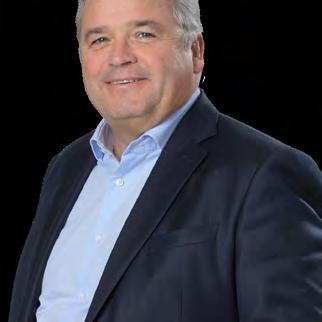
Years of experience: over 30 years as a corporate lawyer and over 20 years as a non-executive director of a variety of public and private companies.
Area of expertise: Advises on mergers, acquisitions, flotations, joint ventures and commercial relationships.
Added value advantages: Kevin has gained and can share wide ranging experience gathered from forming and leading three legal practices and from his years sitting as a non-executive director on the boards of companies such as Ao World PlC, Premiere Group PlC, the Range Cooker Company PlC, and Gold medal travel Group PlC.
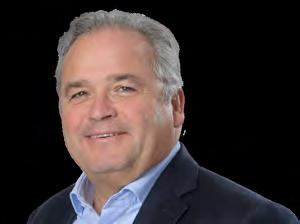

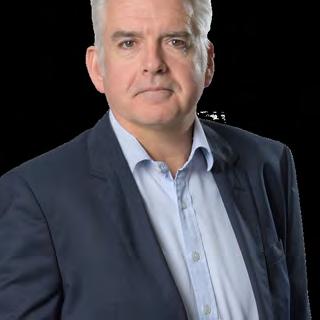
Education and credentials: A graduate of university College london, Kevin was a solicitor practising corporate law in private practice from 1984 – 2014 and retains a practising certificate.
 Paul Gilmour Group Financial Director
Paul Gilmour Group Financial Director
Years of experience: Five years with a professional firm then 32 years with morson.
Area of expertise: leads on strategic acquisitions and implementation, whilst also spearheading the financial reporting and function of finance throughout the Group’s business units.
Added value advantages: Paul’s presence on all operational Boards and close relationships with management teams drives standards, growth strategies and cohesion across the Group. His experience of the sector informs assessment and dealing with change management, legislative impact and operational challenges.
Education and credentials: Bachelor of science degree in mathematics from durham university and the professional qualification of Chartered Accountant ACA.
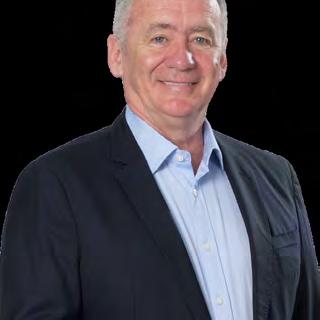
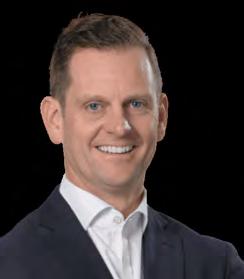

Years of experience: 20+ years’ recruitment experience, including 10 years with morson.
Area of expertise: Responsible for the Group’s operational and commercial performance.
Added value advantages: Adrian’s leadership style places Ed&I at the heart of the Group, working with operational Boards to create pipelines of talent which enhance the Company’s reputation as an ambitious, forwardthinking partner.
Education and credentials: together with a BA Hons in Business studies, Adrian completed an executive level leadership programme with Ashridge Business school on Finance & strategy.
Years of experience: more than 30 years’ experience.
Area of expertise: supporting strategic growth within the Group’s core stEm markets.
Added value advantages: Joanne brings more than three decades of financial and professional services experience to the Board, having held senior positions with investment banks Panmure Gordon, Evolution securities and Williams de Broe, and as a Chartered Accountant with PwC.

Education and credentials: A Chartered Accountant, Joanne is a Fellow of the Chartered Institute for securities & Investment and of the ICAEW, and is a member of the ICAEW’s Corporate Finance Faculty.
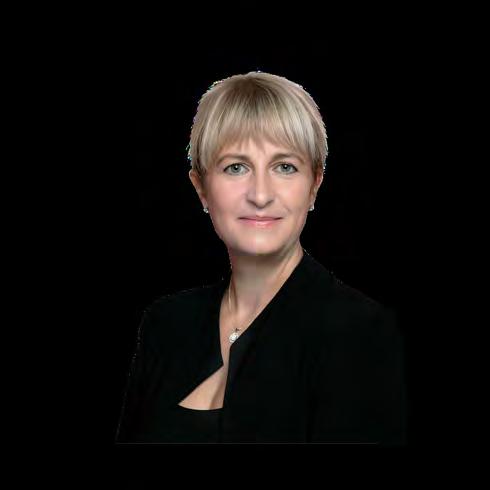
The directors present their Annual Report and the audited financial statements of Morson Group Limited (‘the Company’) and of the Group for the year ended 31 December 2022.
Principal activities
the principal activity of the Group is human capital resourcing, including acting as an employment business, a recruitment agency and the provision of technical personnel for engineering management and design consultancy. there have not been any significant changes in the Group’s principal activities in the year under review. the directors are not aware, at the date of this report, of any likely major changes in the Group’s activities in the next year.
Review of business and future developments
the strategic Report on pages 1 to 55, including the Chairman’s statement on pages 6 and 7, the Key market overview on pages 14 to 17, the Business unit Reviews on pages 18 to 25, the Financial Review on pages 42 to 47, assessment of Financial Risk on page 52 and the Going Concern statement on Page 55 report on the performance of the Group, including key performance indicators, for the year ended 31 december 2022 and its prospects for the future.
the Chairman’s statement, the strategic Report and this report have been prepared solely to provide additional information to shareholders to assess the Company’s strategies and the potential for those strategies to succeed. they contain certain forwardlooking statements. these statements are made by the directors in good faith based on the information available to them up to the time of their approval of this report and such statements should be treated with caution due to the inherent uncertainties, including both economic and business risk factors, underlying any such forwardlooking information.
Results and dividends
the results for the year are shown in the Consolidated Income statement on page 63. the directors do not recommend any final dividend (2021: no final dividend paid). An interim dividend for the year of 44.11 pence per share was declared and paid on 30 december 2022 (2021: 7.72 pence per share on 22 december 2021) to mmGG Acquisition limited, making a total dividend for the year of 44.11 pence per share (2021: 7.72 pence).
Directors and their interests
the directors of the Company who served during the year and to the date of this report are GA mason, PJ Gilmour, K Philbin, AW Adair and JC lake.
the Group has made qualifying third-party indemnity provisions for the benefit of its directors, including directors of its subsidiaries, which were made during the year and remain in force at the date of this report.
Statement on employee engagement and disabled employees
the Group’s employees are its most important asset. our policy is to employ the best people irrespective of race, colour, ethnicity, gender, disability, age, sexual orientation, marital status, religion or belief. We believe that we are then best placed to deliver the expectations of the Group.
Consultation with employees, or their representatives, occurs at all levels, with the aim of ensuring that all relevant views are taken into account when decisions are made that are likely to affect their interests. the Group strives to make all employees aware of the operations of their business units to enable, enhance and reward performance. Communication with all employees continues through in-house newsletters, weekly ‘made of mor’ emails, messaging, meetings and the distribution of the Annual Report. A wide range of information is also available on the Group’s website www.morson.com.
the Board is aware of the gender pay gap reporting requirements and these have been published on the Group’s website in 2022. there are several initiatives underway to help improve gender balance within our organisation and the wider workforce to promote inclusivity.
Applications for employment by disabled persons are always fully considered, bearing in mind the respective aptitudes and abilities of the applicants concerned. In the event of members of staff becoming disabled, every effort is made to ensure that their employment with the Group continues and that appropriate training is arranged. It is the policy of the Group that the training, career development and promotion of a disabled person should, as far as possible, be identical to that of a person who does not suffer from a disability.
Further information on employee engagement is given in the section 172(1) statement on page 40.
Statement on engagement with suppliers, customers and others details of how the directors have had regard to the need to foster the Group’s business relationships with suppliers, customers and others, and the effect of that regard, including on the principal decisions taken by the Company during the financial year is given in the section 172(1) statement on page 41.
Environmental policy and energy and carbon reporting morson Group limited recognises the importance of its environmental responsibilities and designs and implements policies to reduce any damage that might be caused by the Group’s activities. Initiatives designed to minimise the Group’s impact on the environment include safe disposal of waste, recycling and reducing energy consumption. Further information is given on pages 38 and 39.
the Group’s sECR (streamlined Energy and Carbon Reporting) statement can be found on page 38.
Charitable donations
during the year the Group made charitable donations amounting to £785,000 (2021: £198,000). the Group also seeks to contribute to the fundraising of many local charities and support groups serving the communities in which the Group operates. this can be done by supplying an award, prize or item for auction or sponsoring attendance at fundraising events.
Political donations
no political donations were made by the Group (2021: none).
Research and development details of research and development expenditure can be found in note 4 to the financial statements. the expenditure relates to use of experienced professionally qualified engineers, designers, analysts and checkers, along with a diverse range of technical design and analysis tools. these are used to research and develop engineering solutions to technological problems and uncertainties for our customers.
Full details of the authorised and issued share capital of the Company are set out in note 23 to the consolidated financial statements. the Company has one class of ordinary shares which carries no right to fixed income. Each share carries the right to vote at the general meetings of the Company.
there are no specific restrictions on the size of a holding nor on the transfer of shares, which are both governed by the general provisions of the Articles of Association and prevailing legislation. no person has any special rights of control over the Company’s share capital and all issued shares are fully paid.
the policy of both the Group and Company in relation to its suppliers is to set the terms of payment when agreeing to the terms of the transaction and abide by them provided it is satisfied that the supplier has properly provided their goods or services in accordance with agreed terms and conditions.
Going concern details regarding going concern can be found in the strategic Report on page 55 and form part of this report by cross-reference.
Each of the persons who is a director at the date of approval of this report confirms that: so far as the director is aware, there is no relevant audit information of which the Company’s auditors are unaware; and the director has taken all the steps that he/she ought to have taken as a director in order to make himself/herself aware of any relevant audit information and to establish that the Company’s auditors are aware of that information.
this confirmation is given and should be interpreted in accordance with the provisions of s418 of the Companies Act 2006.
Auditor
A resolution to reappoint deloitte llP as the Company’s auditor will be proposed at the forthcoming Annual General meeting.
Directors’ responsibilities statement
the directors are responsible for preparing the Annual Report and the financial statements in accordance with applicable law and regulations.
Company law requires the directors to prepare financial statements for each financial year. under that law the directors have elected to prepare the Group financial statements in accordance with united Kingdom adopted international accounting standards. the financial statements also comply with the International Financial Reporting standards (IFRss) as issued by the IAsB. the directors have chosen to prepare the Parent Company financial statements in accordance with united Kingdom Generally Accepted Accounting Practice (united Kingdom Accounting standards and applicable law), including FRs 101 Reduced disclosure Framework. under company law the directors must not approve the financial statements unless they are satisfied that they give a true and fair view of the state of affairs of the Company and of the profit or loss of the Company for that period.
In preparing the Parent Company financial statements, the directors are required to: select suitable accounting policies and then apply them consistently; make judgements and accounting estimates that are reasonable and prudent; state whether applicable uK Accounting standards have been followed, subject to any material departures disclosed and explained in the financial statements; and
• prepare the financial statements on the going concern basis unless it is inappropriate to presume that the Company will continue in business.
In preparing the Group financial statements, International Accounting standard 1 requires that directors: properly select and apply accounting policies;
• present information, including accounting policies, in a manner that provides relevant, reliable, comparable and understandable information; provide additional disclosures when compliance with the specific requirements in IFRs are insufficient to enable users to understand the impact of particular transactions, other events and conditions on the entity’s financial position and financial performance; and make an assessment of the Company’s ability to continue as a going concern.
the directors are responsible for keeping adequate accounting records that are sufficient to show and explain the Company’s transactions and disclose with reasonable accuracy at any time the financial position of the Company and enable them to ensure that the financial statements comply with the Companies Act 2006. they are also responsible for safeguarding the assets of the Company and hence for taking reasonable steps for the prevention and detection of fraud and other irregularities.
the directors are responsible for the maintenance and integrity of the corporate and financial information included on the Company’s website. legislation in the united Kingdom governing the preparation and dissemination of financial statements may differ from legislation in other jurisdictions.
Approved by the Board and signed on its behalf by:
Paul Gilmour Group Financial Director 31 may 2023
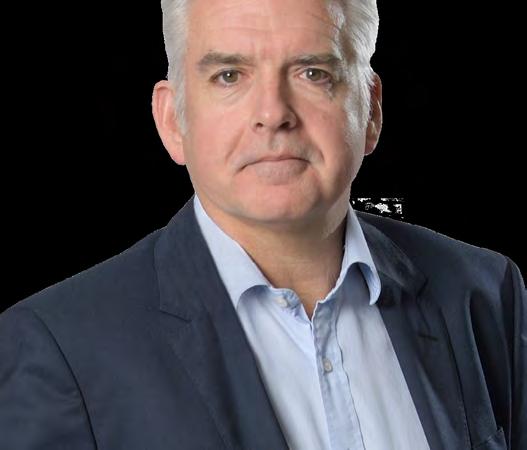

Opinion
In our opinion:
the financial statements of morson Group limited (the ‘Parent Company’) and its subsidiaries (the ‘Group’) give a true and fair view of the state of the Group’s and of the Parent Company’s affairs as at 31 december 2022 and of the Group’s profit for the year then ended; the Group financial statements have been properly prepared in accordance with united Kingdom adopted international accounting standards and International Financial Reporting standards (IFRss) as issued by the International Accounting standards Board (IAsB); the Parent Company financial statements have been properly prepared in accordance with united Kingdom Generally Accepted Accounting Practice, including Financial Reporting standard 101 “Reduced disclosure Framework”; and the financial statements have been prepared in accordance with the requirements of the Companies Act 2006.
We have audited the financial statements which comprise:
• the consolidated income statement; the consolidated and Parent Company statements of financial position; the consolidated and Parent Company statements of changes in equity;
• the consolidated cash flow statement; the statement of accounting policies;
• the related notes 1 to 29 to the consolidated financial statements; and the related notes 1 to 13 to the Parent Company.
the financial reporting framework that has been applied in the preparation of the Group financial statements is applicable law, and united Kingdom adopted international accounting standards and IFRss as issued by the IAsB. the financial reporting framework that has been applied in the preparation of the Parent Company financial statements is applicable law and united Kingdom Accounting standards, including Financial Reporting standard 101 “Reduced disclosure Framework” (united Kingdom Generally Accepted Accounting Practice).
We conducted our audit in accordance with International standards on Auditing (uK) (IsAs (uK)) and applicable law. our responsibilities under those standards are further described in the auditor’s responsibilities for the audit of the financial statements section of our report.
We are independent of the Group and the Parent Company in accordance with the ethical requirements that are relevant to our audit of the financial statements in the uK, including the Financial Reporting Council’s (the ‘FRC’s’) Ethical standard, and we have fulfilled our other ethical responsibilities in accordance with these requirements. We believe that the audit evidence we have obtained is sufficient and appropriate to provide a basis for our opinion.
In auditing the financial statements, we have concluded that the directors’ use of the going concern basis of accounting in the preparation of the financial statements is appropriate.
our evaluation of the directors’ assessment of the Group’s and Parent Company’s ability to continue to adopt the going concern basis of accounting included assessment of the entity’s:
• financing facilities including nature of facilities, repayment terms and covenants linkage to business model and medium-term risks
• assumptions used in the forecasts amount of headroom in the forecasts (cash and covenants)
• sensitivity analysis
• sophistication of the model used to prepare the forecasts, testing of clerical accuracy of those forecasts and our assessment of the historical accuracy of forecasts prepared by management
Based on the work we have performed, we have not identified any material uncertainties relating to events or conditions that, individually or collectively, may cast significant doubt on the Group’s and Parent Company’s ability to continue as a going concern for a period of at least twelve months from when the financial statements are authorised for issue.
our responsibilities and the responsibilities of the directors with respect to going concern are described in the relevant sections of this report.
the other information comprises the information included in the annual report, other than the financial statements and our auditor’s report thereon. the directors are responsible for the other information contained within the annual report. our opinion on the financial statements does not cover the other information and, except to the extent otherwise explicitly stated in our report, we do not express any form of assurance conclusion thereon.
our responsibility is to read the other information and, in doing so, consider whether the other information is materially inconsistent with the financial statements or our knowledge obtained in the course of the audit, or otherwise appears to be materially misstated. If we identify such material inconsistencies or apparent material misstatements, we are required to determine whether this gives rise to a material misstatement in the financial statements themselves. If, based on the work we have performed, we conclude that there is a material misstatement of this other information, we are required to report that fact.
We have nothing to report in this regard.
As explained more fully in the directors’ responsibilities statement, the directors are responsible for the preparation of the financial statements and for being satisfied that they give a true and fair view, and for such internal control as the directors determine is necessary to enable the preparation of financial statements that are free from material misstatement, whether due to fraud or error.
In preparing the financial statements, the directors are responsible for assessing the Group’s and the Parent Company’s ability to continue as a going concern, disclosing, as applicable, matters related to going concern and using the going concern basis of accounting unless the directors either intend to liquidate the Group or the Parent Company or to cease operations, or have no realistic alternative but to do so.
Auditor’s responsibilities for the audit of the financial statements
our objectives are to obtain reasonable assurance about whether the financial statements as a whole are free from material misstatement, whether due to fraud or error, and to issue an auditor’s report that includes our opinion. Reasonable assurance is a high level of assurance, but is not a guarantee that an audit conducted in accordance with IsAs (uK) will always detect a material misstatement when it exists. misstatements can arise from fraud or error and are considered material if, individually or in the aggregate, they could reasonably be expected to influence the economic decisions of users taken on the basis of these financial statements.
A further description of our responsibilities for the audit of the financial statements is located on the FRC’s website at: www.frc.org.uk/auditorsresponsibilities. this description forms part of our auditor’s report.
Extent to which the audit was considered capable of detecting irregularities, including fraud
Irregularities, including fraud, are instances of non-compliance with laws and regulations. We design procedures in line with our responsibilities, outlined above, to detect material misstatements in respect of irregularities, including fraud. the extent to which our procedures are capable of detecting irregularities, including fraud is detailed below.
We considered the nature of the Group’s industry and its control environment, and reviewed the Group’s documentation of their policies and procedures relating to fraud and compliance with laws and regulations. We also enquired of management and the directors about their own identification and assessment of the risks of irregularities, including those that are specific to the Group’s business sector.
We obtained an understanding of the legal and regulatory frameworks that the Group operates in, and identified the key laws and regulations that:
• had a direct effect on the determination of material amounts and disclosures in the financial statements. these included uK Companies Act 2006, pensions legislation, tax and employment legislation; and
• do not have a direct effect on the financial statements but compliance with which may be fundamental to the Group’s ability to operate or to avoid a material penalty. this included data Protection and Bribery Act.
We discussed among the audit engagement team including significant component audit teams and relevant internal specialists such as tax, valuations and It specialists regarding the opportunities and incentives that may exist within the organisation for fraud and how and where fraud might occur in the financial statements.
As a result of performing the above, we identified the greatest potential for fraud in the following areas, and our procedures performed to address them are described below:
Revenue Recognition – Classification as Agency vs Principal on new contracts
• For a selection of new contracts we have tested whether these constitute Principal or agency revenue relationships, and have performed testing by reviewing the contracts to determine whether revenue has been accurately recorded and classified.
• We substantively tested sample of manual adjustments to revenue to supporting documents to support their accuracy and occurrence.
We obtained an understanding and tested the design and implementation of relevant controls relating to stage of completion and work in progress valuation.
For a sample of work in progress amounts we have traced amounts through to post year-end bank statements to confirm these have been recovered.
For a sample of revenue contracts we have performed a recalculation of the revenue amounts recognised in the financial year and compared this to amounts recorded by management.
For a sample of contracts we have substantively tested the job stage of completion, by selecting a sample of contract costs and tracing these to supporting documentation.
In common with all audits under IsAs (uK), we are also required to perform specific procedures to respond to the risk of management override. In addressing the risk of fraud through management override of controls, we tested the appropriateness of journal entries and other adjustments; assessed whether the judgements made in making accounting estimates are indicative of a potential bias; and evaluated the business rationale of any significant transactions that are unusual or outside the normal course of business.
In addition to the above, our procedures to respond to the risks identified included the following: reviewing financial statement disclosures by testing to supporting documentation to assess compliance with provisions of relevant laws and regulations described as having a direct effect on the financial statements; performing analytical procedures to identify any unusual or unexpected relationships that may indicate risks of material misstatement due to fraud; enquiring of management and in-house legal counsel concerning actual and potential litigation and claims, and instances of noncompliance with laws and regulations; and reading minutes of meetings of those charged with governance.
In our opinion, based on the work undertaken in the course of the audit:
• the information given in the strategic report and the directors’ report for the financial year for which the financial statements are prepared is consistent with the financial statements; and
• the strategic report and the directors’ report have been prepared in accordance with applicable legal requirements.
In the light of the knowledge and understanding of the Group and of the Parent Company and their environment obtained in the course of the audit, we have not identified any material misstatements in the strategic report or the directors’ report.
Matters on which we are required to report by exception under the Companies Act 2006 we are required to report in respect of the following matters if, in our opinion: adequate accounting records have not been kept by the Parent Company, or returns adequate for our audit have not been received from branches not visited by us; or
the Parent Company financial statements are not in agreement with the accounting records and returns; or • certain disclosures of directors’ remuneration specified by law are not made; or we have not received all the information and explanations we require for our audit.
We have nothing to report in respect of these matters.
Use of our report
this report is made solely to the company’s members, as a body, in accordance with Chapter 3 of Part 16 of the Companies Act 2006. our audit work has been undertaken so that we might state to the company’s members those matters we are required to state to them in an auditor’s report and for no other purpose. to the fullest extent permitted by law, we do not accept or assume responsibility to anyone other than the company and the company’s members as a body, for our audit work, for this report, or for the opinions we have formed.
Heather Crosby ACA (Senior Statutory Auditor) For and on behalf of deloitte llP statutory Auditor manchester, united Kingdom1 June 2023
YEAR ENDED 31 DECEMBER 2022
the above results are from continuing operations.
YEAR ENDED 31 DECEMBER 2022
there is no tax impact on the exchange differences on translation of foreign operations (2021: same).
the financial statements of morson Group limited registration number 05111937 were approved by the Board of directors and authorised for issue on 31 may 2023. they were signed on its behalf by:
Ged Mason OBE Paul Gilmour Chief Executive G roup Financial DirectorYEAR ENDED 31 DECEMBER 2022
Please refer to notes 23, 24 and 25 for further details of share capital, equity and non-controlling interests.
YEAR ENDED 31 DECEMBER 2022
morson Group limited is a private Company limited by shares incorporated in the united Kingdom under the Companies Act 2006 and registered and domiciled in England. the address of the registered office is given on page 104. the nature of the Group’s operations and its principal activities are set out in note 3 and in the strategic Report on pages 1 to 55.
these financial statements are presented in Pounds sterling because that is the currency of the primary economic environment in which the Group operates.
the financial statements have been prepared on the historical cost basis. Historical cost is generally based on the fair value of the consideration given in exchange for goods and services.
the financial statements have been prepared in accordance with International Financial Reporting standards (IFRss) as issued by the IAsB. Fair value is the price that would be received to sell an asset or paid to transfer a liability in an orderly transaction between market participants at the measurement date, regardless of whether that price is directly observable or estimated using another valuation technique. In estimating the fair value of an asset or a liability, the Group takes into account the characteristics of the asset or liability if market participants would take those characteristics into account when pricing the asset or liability at the measurement date. Fair value for measurement and/or disclosure purposes in these consolidated financial statements is determined on such a basis, leasing transactions that are within the scope of IFRs 16, and measurements that have some similarities to fair value but are not fair value, such as net realisable value in IAs 2 or value in use in IAs 36.
the principal accounting policies adopted are set out below. these have been applied consistently throughout the year and to the preceding year.
Going concern
the directors are required to satisfy themselves as to whether the financial statements of the Group should be prepared on a going concern basis. As part of the ongoing duties and activities of the Board, there is continual assessment of the Group’s financial and commercial performance. this review considers business risks and uncertainties, discussed within the strategic Report, that exist and takes account of how wider economic circumstances can impact these, including due consideration and assessment of potentially adverse and testing situations.
the core sectors the business supplies to are involved in key engineering delivery and maintenance and development of infrastructure and often government backed programmes, for example, energy, transport and military programme support. many of our clients are long-term customers and contracted on framework agreements that aid future visibility.
the Board have considered detailed forecasts looking forward to and past the end of 2024, considered reasonable possible sensitivities including regarding decreasing levels of trade, interest rate fluctuations, receivables profiles and the Group remains compliant with any covenants and is confident of finance facilities in the forecast period. the directors have also considered the financial support required for these forecasts and note that the Group’s current financing arrangements run until 21 december 2025 for its invoice discounting facility and until 21 december 2025 for long-term borrowings, with potential to extend the longer term borrowing agreement for a further one or two years.
Additional but reduced comment is made in light of the impact of CoVId-19 on trade which was predominantly in the years 2020 and 2021. throughout the Board continued to closely monitor the impact of the pandemic on trade across all business units, alongside monitoring the cost base of the Group. this and close contact with our clients helped inform business operations and activity levels and forecasts for future periods. In the latter part of 2021 as some more of the restrictions of CoVId-19 were released we saw increased activity and confidence in several sectors and the impact of CoVId-19 lessened in 2022.
the directors feel the business responded very well and rose to the challenge of this unprecedented pandemic situation. the experience of the business through different economic cycles is also considerable. Whilst the Board is not complacent and recognises pandemic risk, we have learnt from experience and currently CoVId-19 impact on the business is managed and not exceptional.
Having properly considered the matter, the directors conclude that they are satisfied that these financial statements should be prepared on a going concern basis.
In the current year, the Group has applied a number of amendments to IFRs Accounting standards issued by the International Accounting standards Board (IAsB) that are mandatorily effective for an accounting period that begins on or after 1 January 2022. their adoption has not had any material impact on the disclosures or on the amounts reported in these financial statements.
Amendments to IFRS 3 Reference to the Conceptual Framework. the Group has adopted the amendments to IFRs 3 Business Combinations for the first time in the current year. the amendments update IFRs 3 so that it refers to the 2018 Conceptual Framework instead of the 1989 Framework. they also add to IFRs 3 a requirement that, for obligations within the scope of IAs 37 Provisions, Contingent liabilities and Contingent Assets, an acquirer applies IAs 37 to determine whether at the acquisition date a present obligation exists as a result of past events. For a levy that would be within the scope of IFRIC 21 levies, the acquirer applies IFRIC 21 to determine whether the obligating event that gives rise to a liability to pay the levy has occurred by the acquisition date.
Amendments to IAS 16 Property, Plant and Equipment—Proceeds before Intended use. the Group has adopted the amendments to IAs 16 for the first time in the current year. the amendments prohibit deducting from the cost of an item of property, plant and equipment any proceeds from selling items produced before that asset is available for use, i.e. proceeds while bringing the asset to the location and condition necessary for it to be capable of operating in the manner intended by management. Consequently, an entity recognises such sales proceeds and related costs in profit or loss. the entity measures the cost of those items in accordance with IAs 2 Inventories.
the amendments also clarify the meaning of ‘testing whether an asset is functioning properly’. IAs 16 now specifies this as assessing whether the technical and physical performance of the asset is such that it is capable of being used in the production or supply of goods or services, for rental to others, or for administrative purposes.
If not presented separately in the statement of comprehensive income, the financial statements shall disclose the amounts of proceeds and cost included in profit or loss that relate to items produced that are not an output of the entity’s ordinary activities, and which line item(s) in the statement of comprehensive income include(s) such proceeds and cost.
Amendments to IAS 37 Onerous Contracts – Cost of Fulfilling a Contract. the Group has adopted the amendments to IAs 37 for the first time in the current year. the amendments specify that the cost of fulfilling a contract comprises the costs that relate directly to the contract. Costs that relate directly to a contract consist of both the incremental costs of fulfilling that contract (examples would be direct labour or materials) and an allocation of other costs that relate directly to fulfilling contracts (an example would be the allocation of the depreciation charge for an item of property, plant and equipment used in fulfilling the contract).
IFRS 9 Financial Instruments the amendment clarifies that in applying the ‘10 per cent’ test to assess whether to derecognise a financial liability, an entity includes only fees paid or received between the entity (the borrower) and the lender, including fees paid or received by either the entity or the lender on the other’s behalf.
IFRS 16 Leases the amendment removes the illustration of the reimbursement of leasehold improvements.
At the date of authorisation of these financial statements, the Group has not applied the following new and revised IFRs standards that have been issued but are not yet effective:
IFRs 17 Insurance Contracts
• IFRs 10 and IAs 28 (amendments) sale or Contribution of Assets between an Investor and its Associate or Joint Venture (effective date is yet to be set by the IAsB)
Amendments to IAs 1 Classification of liabilities as Current or non-current (effective from 1 January 2023)
• Amendments to IAs 1 and IFRs Practice statement 2 disclosure of Accounting Policies (effective from 1 January 2023)
Amendments to IAs 8 definition of Accounting Estimates (effective from 1 January 2023)
• Amendments to IAs 12 deferred tax related to Assets and liabilities arising from a single transaction (effective from 1 January 2023)
the directors do not expect that the adoption of the standards listed above will have a material impact on the financial statements of the Group in future periods, except if indicated below.
the consolidated financial statements incorporate the financial statements of the Company and entities controlled by the Company (its subsidiaries) made up to 31 december each year. Control is achieved where the Company has the power to govern the financial and operating policies of an investee entity so as to obtain benefits from its activities.
non-controlling interests in the net assets of consolidated subsidiaries are identified separately from the Group’s equity therein. those interests of non-controlling shareholders that represent ownership interests entitling their holders to proportionate share of net assets upon liquidation may initially be measured at fair value or at the non-controlling interests’ proportionate share of the fair value of the acquiree’s identifiable net assets. the choice of measurement is made on an acquisition-by-acquisition basis. other non-controlling interests are initially measured at fair value. subsequent to acquisition, the carrying amount of non-controlling interests is the amount of those interests at initial recognition plus the non-controlling interests’ share of subsequent changes in equity. total comprehensive income is attributed to non-controlling interests even if this results in the non-controlling interests having a deficit balance.
the results of subsidiaries acquired or disposed of during the year are included in the consolidated income statement from the effective date of acquisition or up to the effective date of disposal, as appropriate. Where necessary, adjustments are made to the financial statements of subsidiaries to bring the accounting policies used into line with those used by the Group.
Changes in the Group’s interests in subsidiaries that do not result in a loss of control are accounted for as equity transactions. the carrying amount of the Group’s interests and the non-controlling interests are adjusted to reflect the changes in their relative interests in the subsidiaries. Any difference between the amounts by which the non-controlling interests are adjusted and the fair value of the consideration paid or received is recognised directly in equity and attributed to the owners of the Company.
YEAR ENDED 31 DECEMBER 2022
Basis of consolidation continued
Where the Group loses control of a subsidiary, the profit or loss on disposal is calculated as the difference between: (i) the aggregate fair value of the consideration received and the fair value of any retained interest; and (ii) the previous carrying amount of the assets (including goodwill), less liabilities of the subsidiary and any non-controlling interests. Amounts previously recognised in other comprehensive income in relation to the subsidiary are accounted for (i.e. reclassified to profit or loss or transferred directly to retained earnings) in the same manner as would be required if the relevant assets or liabilities are disposed of. the fair value of any investment retained in the former subsidiary at the date when control is lost is regarded as the fair value on initial recognition for subsequent accounting under IAs 39 Financial Instruments: Recognition and measurement or, when applicable, the costs on initial recognition of an investment in an associate or jointly-controlled entity.
All intra-Group transactions, balances, income and expenses are eliminated on consolidation.
Revenue recognition
Revenue is measured at the fair value of consideration received or receivable and represents the amounts receivable derived from the provision of services to customers in the normal course of business, net of discounts, VAt and other sales-related taxes.
Revenue arising from the provision of temporary recruitment services is recognised based on hours worked, following receipt of an approved time record. For those contracts where the Group acts as principal, revenue represents the amounts billed for services of the temporary personnel, including the direct costs of those staff. Where the Group is acting as an agent, revenue represents commission receivable relating to the supply of temporary personnel and does not include their direct costs.
Revenue arising from the provision of permanent recruitment services is recognised at the time the candidate starts work. Provision is made for the expected cost of meeting obligations should the candidate leave before the end of any contractual rebate period.
Revenue from long-term contracts, which encompasses the provision of engineering design consultancy and management services, is recognised in accordance with the Group’s accounting policy on long-term contracts.
Business combinations
Acquisitions of subsidiaries and businesses are accounted for using the acquisition method. the consideration for each acquisition is measured at the aggregate of the fair values (at the date of exchange) of assets given, liabilities incurred or assumed and equity instruments issued by the Group in exchange for control of the acquiree. Acquisition-related costs are recognised in the consolidated income statement as incurred.
Where applicable, the consideration for the acquisition includes any asset or liability resulting from a contingent consideration arrangement, measured at its acquisition-date fair value. subsequent changes in such fair values are adjusted against the cost of acquisition where they qualify as measurement period adjustments (see below). All other subsequent changes in the fair value of contingent consideration classified as an asset or liability are accounted for in accordance with the relevant IFRss.
Changes in the fair value of contingent consideration classified as equity are not recognised.
Where a business combination is achieved in stages, the Group’s previously-held interests in the acquired entity are remeasured to fair value at the acquisition date (i.e. the date at which the Group attains control) and the resulting gain or loss, if any, is recognised in profit or loss.
the acquiree’s identifiable assets, liabilities and contingent liabilities that meet the conditions for recognition under IFRs 3 (2008) are recognised at their fair value at the acquisition date, except that: deferred tax assets or liabilities or assets related to employee benefit arrangements are recognised and measured in accordance with IAs 12 Income taxes and IAs 19 Employee Benefits respectively; and assets (or disposal groups) that are classified as held for sale in accordance with IFRs 5 non-current Assets Held for sale and discontinued operations are measured in accordance with that standard.
If the initial accounting for a business combination is incomplete by the end of the reporting period in which the combination occurs, the Group reports provisional amounts for the items for which the accounting is incomplete. those provisional amounts are adjusted during the measurement period (see below), or additional assets or liabilities are recognised to reflect new information obtained about facts and circumstances that existed as of the acquisition date that, if known, would have affected the amounts recognised as of that date.
the measurement period is the period from the date of acquisition to the date the Group obtains complete information about facts and circumstances that existed as of the acquisition date, and is subject to a maximum of one year.
Goodwill arising in a business combination is recognised as an asset at the date that control is acquired (the acquisition date). Goodwill is measured as the excess of the sum of the consideration transferred, the amount of any non-controlling interest in the acquiree and the fair value of the acquirer’s previously held equity interest (if any) in the entity over the net of the acquisition-date amounts of the identifiable assets acquired and the liabilities assumed.
If, after reassessment, the Group’s interest in the fair value of the acquiree’s identifiable net assets exceeds the sum of the consideration transferred, the amount of any non-controlling interest in the acquiree and the fair value of the acquirer’s previously held equity interest in the acquiree (if any), the excess is recognised immediately in the consolidated income statement as a bargain purchase gain.
Goodwill which is recognised as an asset is reviewed for impairment at least annually. Any impairment is recognised immediately in profit or loss and is not subsequently reversed. For the purpose of impairment testing, goodwill is allocated to each of the Group’s Cash Generating units (CGus) expected to benefit from the synergies of the combination. CGus to which goodwill has been allocated are tested for impairment annually, or more frequently when there is an indication that the unit may be impaired. If the recoverable amount of the CGu is less than the carrying amount of the unit, the impairment loss is allocated first to reduce the carrying amount of any goodwill allocated to the unit and then to the other assets of the unit pro rata on the basis of the carrying amount of each asset in the unit. An impairment loss recognised for goodwill is not reversed in a subsequent period.
Goodwill arising on acquisitions before the date of transition to IFRs has been retained at the previous uK GAAP amounts, subject to being tested for impairment at that date.
Where the outcome of a fixed price contract can be estimated reliably, revenue and costs are recognised by reference to the stage of completion of the contract activity at the balance sheet date. this is normally measured by the proportion that contract costs incurred for work performed to date bear to the estimated total contract costs, except where this would not be representative of the stage of completion. Variations in contract work, claims and incentive payments are included to the extent that they have been agreed with the customer.
Where the outcome of a fixed price contract cannot be estimated reliably, contract revenue is recognised to the extent of contract costs incurred where it is probable they will be recoverable. Contract costs are recognised as expenses in the period in which they are incurred.
Where it is probable that total contract costs will exceed total contract revenue, the expected loss is recognised immediately as an expense.
the individual financial statements of each Group company are presented in the currency of the primary economic environment in which it operates (its functional currency). For the purpose of the consolidated financial statements, the results and financial position of each Group company are expressed in Pounds sterling, which is the functional currency of the Company and the presentation currency for the consolidated financial statements.
In preparing the financial statements of the individual companies, transactions in currencies other than the entity’s functional currency (foreign currencies) are recorded at the rates of exchange prevailing on the dates of the transactions. At each balance sheet date, monetary assets and liabilities that are denominated in foreign currencies are retranslated at the rates prevailing at the date when the fair value was determined. Exchange differences arising are taken to the income statement. non-monetary items that are measured in terms of historical cost in a foreign currency are not retranslated.
For the purpose of presenting consolidated financial statements, the assets and liabilities of the Group’s foreign operations are translated at exchange rates prevailing on the balance sheet date. Income and expense items are translated at the average exchange rates for the period, unless exchange rates fluctuate significantly during that period, in which case the exchange rates at the date of transactions are used. Exchange differences arising, if any, are recognised in other comprehensive income and accumulated in equity (attributed to non-controlling interests as appropriate).
on the disposal of a foreign operation (i.e. a disposal of the Group’s entire interest in a foreign operation, or a disposal involving loss of control over a subsidiary that includes a foreign operation, loss of joint control over a jointly controlled entity that includes a foreign operation, or loss of significant influence over an associate that includes a foreign operation), all of the accumulated exchange differences in respect of that operation attributable to the Group are reclassified to profit or loss.
The Group as a lessee
the Group assesses whether a contract is or contains a lease, at inception of the contract. the Group recognises a right-of-use asset and a corresponding lease liability with respect to all lease arrangements in which it is the lessee.
the lease liability is initially measured at the present value of the lease payments that are not paid at the commencement date, discounted by using the rate implicit in the lease. If this rate cannot be readily determined, the lessee uses its incremental borrowing rate.
YEAR ENDED 31 DECEMBER 2022
The Group as a lessee continued
lease payments included in the measurement of the lease liability comprise: fixed lease payments (including in-substance fixed payments), less any lease incentives receivable; variable lease payments that depend on an index or rate, initially measured using the index or rate at the commencement date;
• the amount expected to be payable by the lessee under residual value guarantees; the exercise price of purchase options, if the lessee is reasonably certain to exercise the options; and
• payments of penalties for terminating the lease, if the lease term reflects the exercise of an option to terminate the lease.
the lease liability is presented as a separate line in the consolidated statement of financial position.
the lease liability is subsequently measured by increasing the carrying amount to reflect interest on the lease liability (using the effective interest method) and by reducing the carrying amount to reflect the lease payments made.
the Group remeasures the lease liability (and makes a corresponding adjustment to the related right-of-use asset) whenever:
• the lease term has changed or there is a significant event or change in circumstances resulting in a change in the assessment of exercise of a purchase option, in which case the lease liability is remeasured by discounting the revised lease payments using a revised discount rate.
• the lease payments change due to changes in an index or rate or a change in expected payment under a guaranteed residual value, in which cases the lease liability is remeasured by discounting the revised lease payments using an unchanged discount rate (unless the lease payments change is due to a change in a floating interest rate, in which case a revised discount rate is used).
• A lease contract is modified and the lease modification is not accounted for as a separate lease, in which case the lease liability is remeasured based on the lease term of the modified lease by discounting the revised lease payments using a revised discount rate at the effective date of the modification.
the right-of-use assets comprise the initial measurement of the corresponding lease liability, lease payments made at or before the commencement day, less any lease incentives received and any initial direct costs. they are subsequently measured at cost less accumulated depreciation and impairment losses.
Whenever the Group incurs an obligation for costs to dismantle and remove a leased asset, restore the site on which it is located or restore the underlying asset to the condition required by the terms and conditions of the lease, a provision is recognised and measured under IAs 37. to the extent that the costs relate to a right-of-use asset, the costs are included in the related right-of-use asset, unless those costs are incurred to produce inventories.
Right-of-use assets are depreciated over the shorter period of lease term and useful life of the underlying asset. If a lease transfers ownership of the underlying asset or the cost of the right-of-use asset reflects that the Group expects to exercise a purchase option, the related right-ofuse asset is depreciated over the useful life of the underlying asset. the depreciation starts at the commencement date of the lease.
the right-of-use assets are presented as a separate line in the consolidated statement of financial position.
the Group applies IAs 36 to determine whether a right-of-use asset is impaired and accounts for any identified impairment loss as described in the ‘Property, Plant and Equipment’ policy.
Variable rents that do not depend on an index or rate are not included in the measurement of the lease liability and the right-of-use asset. the related payments are recognised as an expense in the period in which the event or condition that triggers those payments occurs and are included in ‘other administrative expenses’ in profit or loss.
As a practical expedient, IFRs 16 permits a lessee not to separate non-lease components, and instead account for any lease and associated non-lease components as a single arrangement. the Group has used this practical expedient. For the Group this constitutes non-recoverable VAt on car leases and service charges on property leases.
Operating profit
operating profit is stated after administrative expenses but before other income and finance costs.
Government grants
Government grants are recognised based on the accrual model and are measured at the fair value of the asset received or receivable. Grants relating to revenue are recognised in income over the period in which the related costs are recognised.
In the prior year, in response to the CoVId-19 pandemic, the uK entities in the Group took advantage of the Coronavirus Job Retention scheme which resulted in the Group receiving a government grant to cover the salary costs of a number of employees and temporary workers engaged with clients. the receipt was recognised in the profit and loss account as other income, with the balance due from the government recognised as an asset within accrued income (note 6).
Where the directors consider that there are specific one-off material items, in nature or amount, that have impacted operating profit in the period, these are shown separately from other administrative costs as ‘exceptional items’ on the face of the consolidated income statement. see note 4 for further detail of what items have been classified as exceptional in the current year.
Expenditure on research activities is recognised as an expense in the period in which it is incurred. Research and development expenditure credits are recognised in line with the year in which the eligible costs are incurred. the credit is recognised gross as an item in other income.
Contributions to defined contribution schemes are charged to the consolidated income statement when the contributions become payable in accordance with the rules of the scheme.
the tax expense represents the sum of the tax currently payable and deferred tax.
the tax currently payable is based on taxable profit for the year. taxable profit differs from net profit as reported in the income statement because it excludes items of income or expense that are taxable or deductible in other years and it further excludes items that are never taxable or deductible. the Group’s liability for current tax is calculated using tax rates that have been enacted or substantively enacted by the balance sheet date.
deferred tax is the tax expected to be payable or recoverable on differences between the carrying amounts of assets and liabilities in the financial statements and the corresponding tax bases used in the computation of taxable profit and is accounted for using the balance sheet liability method. deferred tax liabilities are generally recognised for all taxable temporary differences and deferred tax assets are recognised to the extent that it is probable that taxable profits will be available against which deductible temporary differences can be utilised. such assets and liabilities are not recognised if the temporary difference arises from the initial recognition of goodwill or from the initial recognition (other than in a business combination) of other assets and liabilities in a transaction that affects neither the tax profit nor the accounting profit.
the carrying amount of deferred tax assets is reviewed at each balance sheet date and reduced to the extent that it is no longer possible that sufficient taxable profits will be available to allow all or part of the asset to be recovered.
deferred tax is calculated at the tax rates that are expected to apply in the period when the liability is settled or the asset is realised. deferred tax is charged or credited in the income statement, except when it relates to items charged or credited directly to equity, in which case the deferred tax is also dealt with in equity.
deferred tax assets and liabilities are offset when there is a legally enforceable right to set off current tax assets against current tax liabilities and when they relate to income tax levied by the same taxation authority and the Group intends to settle its current tax assets and liabilities on a net basis.
Property, plant and equipment is stated at cost, net of depreciation and any provision for impairment. depreciation is provided on all tangible fixed assets, at rates calculated to write off cost, less estimated residual value, of each asset on a straight-line basis over its expected useful life as follows:
Property improvements life of lease
office equipment 4–10 years
Fixtures and fittings 4–8 years
Plant and machinery 4–10 years
motor vehicles 4 years
Intangible assets recognised on business combinations, being customer relationships, CV databases and brand value, are recognised at their fair value on acquisition and are amortised on a straight-line basis to the income statement over their estimated useful lives, up to a maximum of five years.
At each balance sheet date, the Group reviews the carrying amounts of its tangible and intangible assets to determine whether there is any indication that those assets have suffered an impairment loss. If any such indication exists, the recoverable amount of the asset is estimated in order to determine the extent of the impairment loss (if any). Where the asset does not generate cash flows that are independent from other assets, the Group estimates the recoverable amount of the CGu to which the asset belongs. An intangible asset with an indefinite useful life is tested for impairment annually and whenever there is an indication that the asset may be impaired.
YEAR ENDED 31 DECEMBER 2022
Recoverable amount is the higher of fair value less costs to sell and value in use. In assessing value in use, the estimated future cash flows are discounted to their present value using a pre-tax discount rate that reflects current market assessments of the time, value of money and the risks specific to the asset for which the estimates of future cash flows have not been adjusted.
If the recoverable amount of an asset (or CGu) is estimated to be less than its carrying amount, the carrying amount of the asset (CGu) is reduced to its recoverable amount. An impairment loss is recognised as an expense immediately.
Where an impairment loss subsequently reverses, the carrying amount of the asset (CGu) is increased to the revised estimate of its recoverable amount but so that the increased carrying amount does not exceed the carrying amount that would have been determined had no impairment loss been recognised for the asset (CGu) in prior years. A reversal of an impairment loss is recognised as income immediately.
Amounts due from long-term contracts are stated at net cost less foreseeable losses. Cost comprises direct payroll costs and the attributable portion of all appropriate overheads.
Financial assets and financial liabilities are recognised in the Group’s balance sheet when the Group becomes a party to the contractual provisions of the instrument.
Financial assets and financial liabilities are initially measured at fair value. transaction costs that are directly attributable to the acquisition or issue of financial assets and financial liabilities (other than financial assets and financial liabilities at fair value through profit or loss) are added to or deducted from the fair value of the financial assets or financial liabilities, as appropriate, on initial recognition. transaction costs directly attributable to the acquisition of financial assets or financial liabilities at fair value through profit or loss are recognised immediately in profit or loss.
If the transaction price differs from fair value at initial recognition, the Group will account for such difference as follows: if fair value is evidenced by a quoted price in an active market for an identical asset or liability or based on a valuation technique that uses only data from observable markets, then the difference is recognised as a gain or loss on initial recognition (i.e. day one profit or loss); and in all other cases, the fair value will be adjusted to bring it in line with the transaction price (i.e. day one profit or loss will be deferred by including it in the initial carrying amount of the asset or liability).
After initial recognition, the deferred gain or loss will be released to profit or loss such that it reaches a value of zero at the time when the entire contract can be valued using active market quotes or verifiable objective market information. depending on the type of financial instrument, the Group can adopt one of the following policies for the amortisation of day one gain or loss: calibrate unobservable inputs to the transaction price and recognise the deferred gain or loss as the best estimates of those unobservable inputs change based on observable information; or release the day one gain or loss in a reasonable fashion based on the facts and circumstances (i.e. using either straight-line or nonlinear amortisation).
All regular way purchases or sales of financial assets are recognised and derecognised on a trade date basis. Regular way purchases or sales are purchases or sales of financial assets that require delivery of assets within the time frame established by regulation or convention in the marketplace.
All recognised financial assets are measured subsequently in their entirety at either amortised cost or fair value, depending on the classification of the financial assets.
Classification of financial assets
debt instruments that meet the following conditions are measured subsequently at amortised cost:
• the financial asset is held within a business model whose objective is to hold financial assets in order to collect contractual cash flows; and the contractual terms of the financial asset give rise on specified dates to cash flows that are solely payments of principal and interest on the principal amount outstanding.
debt instruments that meet the following conditions are measured subsequently at fair value through other comprehensive income (FVtoCI): the financial asset is held within a business model whose objective is achieved by both collecting contractual cash flows and selling the financial assets; and the contractual terms of the financial asset give rise on specified dates to cash flows that are solely payments of principal and interest on the principal amount outstanding.
By default, all other financial assets are measured subsequently at fair value through profit or loss (FVtPl).
In the periods presented the Group does not have any financial assets categorised as FVtPl or FVoCI.
Amortised cost and effective interest method
the effective interest method is a method of calculating the amortised cost of a financial asset and of allocating interest income over the relevant period. the effective interest rate is the rate that exactly discounts estimated future cash receipts (including all fees on points paid or received that form an integral part of the effective interest rate, transaction costs and other premiums or discounts) through the expected life of the financial asset, or, where appropriate, a shorter period.
Income is recognised on an effective interest basis for debt instruments other than those financial assets classified as at FVtPl
At each reporting date, the Group assesses whether there is any indication that trade receivables, loans, accrued income and other receivables may be impaired. Where an indicator of impairment exists, the Group makes a formal estimate of recoverable amount.
An asset is considered impaired where, as a result of one or more events that occurred after the initial recognition of the financial asset, the estimated future cashflows of the asset have been impacted.
objective evidence of impairment could include:
• significant financial difficulty of the counterparty; a breach of contract, such as a default or delinquency in payments; (see below); it is becoming probable that the borrower will enter bankruptcy or other financial reorganisation.
the Group considers the following as constituting an event of default for internal credit risk management purposes as historical experience indicates that financial assets that meet either of the following criteria are generally not recoverable:
• when there is a known breach of financial covenants by the debtor; or information developed internally or obtained from external sources indicates that the debtor is unlikely to pay its creditors, including the Group, in full (without taking into account any collateral held by the Group).
Irrespective of the above analysis, the Group considers that default has occurred when a financial asset is more than 90 days past due unless the Group has reasonable and supportable information to demonstrate that a more lagging default criterion is appropriate.
the Group writes off a financial asset when there is information indicating that the debtor is in severe financial difficulty and there is no realistic prospect of recovery, e.g. when the debtor has been placed under liquidation or has entered into bankruptcy proceedings and it is clear that creditor distributions will be nil or negligible. Certain financial assets are insured and would not be written off where a successful credit insurance claim is expected. Financial assets written off may still be subject to enforcement activities under the Group’s recovery procedures, taking into account legal advice where appropriate. Any recoveries made are recognised in profit or loss.
the Group recognises an allowance for expected credit losses for all debt instruments not held at fair value through profit or loss. For trade receivables and elements of accrued income, the Group applies a simplified approach in calculating lifetime expected credit losses at each reporting date. the expected credit losses are estimated using a provision matrix based on the Group’s historical credit loss experience, adjusted for factors that are specific to the debtors, general economic conditions and an assessment of both the current as well as the forecast direction of conditions at the reporting date. A specific provision is also applied where certain, isolated trade receivables are known to be individually impaired.
An impairment loss is recorded in the income statement. the carrying amount of the financial asset is reduced by the impairment loss directly for all financial assets with the exception of trade receivables, where the carrying amount is reduced through the use of an allowance account.
Cash and cash equivalents on the balance sheet comprise cash on hand and demand deposits and other short-term highly liquid investments that are readily convertible to a known amount of cash and are subject to an insignificant risk of changes in value. For the purposes of the cash flow statement, cash and cash equivalents also include the invoice discounting facilities repayable on demand on the basis that these form an integral part of the entity’s cash management.
the Group derecognises a financial asset only when the contractual rights to the cash flows from the asset expire; or it transfers the financial asset and substantially all the risks and rewards of ownership of the asset to another entity.
If the Group neither transfers nor retains substantially all the risks and rewards of ownership and continues to control the transferred asset, the Group recognises its retained interest in the asset and an associated liability for amounts it may have to pay. If the Group retains substantially all the risks and rewards of ownership of a transferred financial asset, the Group continues to recognise the financial asset and also recognises a collateralised borrowing for the proceeds received.
YEAR ENDED 31 DECEMBER 2022
Financial liabilities and equity instruments are classified according to the substance of the contractual arrangements entered into.
Financial liabilities are classified as either financial liabilities ‘at FVtPl’ or ‘other financial liabilities’.
Other financial liabilities
other financial liabilities, including borrowings, are initially measured at fair value, net of transaction costs. other financial liabilities are subsequently measured at amortised cost using the effective interest method, with interest expense recognised on an effective yield basis. the effective interest method is a method of calculating the amortised cost of a financial liability and of allocating interest expense over the relevant period. the effective interest rate is the rate that exactly discounts estimated future cash payments through the expected life of the financial liability, or, where appropriate, a shorter period.
the Group derecognises financial liabilities when, and only when, the Group’s obligations are discharged, cancelled or they expire.
the Group occasionally enters into derivative financial instruments to manage its exposure to foreign exchange risk. no such contracts have been entered into during 2022 (2021: none). Further details of derivative financial instruments are disclosed in note 18 to the consolidated financial statements.
derivatives are initially recognised at fair value at the date a derivative contract is entered into and are subsequently remeasured to their fair value at each balance sheet date. A derivative with a positive fair value is recognised as a financial asset, whereas a derivative with a negative fair value is recognised as a financial liability. the resulting gain or loss is recognised in the consolidated income statement immediately unless the derivative is designated and effective as a hedging instrument, in which event the timing of the recognition in profit or loss depends on the nature of the hedge relationship. no derivative financial instruments currently held by the Group are designated to be hedging instruments.
A derivative is presented as a non-current asset or a non-current liability if the remaining maturity of the instrument is more than 12 months and it is not expected to be realised or settled within 12 months. other derivatives are presented as current assets or current liabilities.
Provisions are recognised when the Group has a present obligation as a result of a past event and it is probable that the Group will be required to settle that obligation. Provisions are measured at the directors’ best estimate of the expenditure required to settle the obligation at the balance sheet date and are discounted to present value where the effect is material.
the Group contributes to several defined contribution pension schemes. the assets of those schemes are held separately from those of the Group in independently administered funds. the amount charged against the profit and loss account represents the contributions payable to the schemes in respect of the accounting year.
the preparation of financial statements in conformity with IFRs requires the use of certain critical accounting estimates and judgements. It also requires management to exercise judgement in the process of applying the Group’s accounting policies. Estimates and judgements are continually evaluated and are based on historical experience and other factors, including expectations of future events that are believed to be reasonable under the circumstances. the critical accounting judgements made in the preparation of the Group’s financial statements are:
the directors use their judgement to identify classes of intangible assets on business combinations. these intangible assets are recognised at the date of business combination and are valued using recognised valuation techniques and are amortised over their expected useful economic life. Valuation is reassessed where indicators of impairment arise, including the discontinuation of operations (see note 10 for more details).
the key sources of estimation uncertainty are considered to be:
In considering the recoverability of trade receivables, the directors use their judgement to assess whether particular amounts are at risk and make provision for them accordingly. the Group takes into account the client base’s credit risk and estimates an expected credit loss based on this risk. the expected credit loss is estimated using a provision matrix where trade receivables are grouped based on historical credit loss experience and characteristics that depict the credit risk of receivables (e.g. days past due). see note 15 for more detail.
Impairment of goodwill and intangible assets
determining whether goodwill or intangible assets are impaired requires an estimation of the value in use of the CGus to which the assets have been allocated. the value in use calculation involves estimations of the future cash flows expected to arise from each identifiable CGu and a suitable discount rate in order to calculate present value. In making their judgement the directors consult within the business to assess potential future revenues and cash flows (see note 10 for more detail).
3. Business and geographical segments
the two reported operating segments in this note are the provision of temporary and permanent recruitment services and the provision of engineering design consultancy and management. these operating segments are consistent with the reporting regularly provided to the Board of directors. It is these reports which the directors use to review the Group’s operating results, assess performance and make decisions about resource allocation.
the Group’s business is described in sectors for the purposes of the Business Review and for some graphical presentations of performance. this is to enable readers of the Annual Report and financial statements to gain a better understanding of the breadth of our service offering as well as allowing an informed and helpful comparison to other organisations also operating in our markets. the database of candidates held by the Group to supply to these sectors is a combined one, encompassing a wide diversity of skills and talent and, whilst it has some sectorspecific requirements, is in essence provided in the same manner across all sectors. Performance and analysis of activity by these sectors is not a key management measure, nor is it reported regularly to the Board of directors and the business is not managed or divided internally by these sectors. the key information used to manage the business is by activity type, i.e. the provision of temporary and permanent recruitment services and the provision of engineering design consultancy and management.
All revenues relate to the provision of services.
by geography is as follows:
Revenue split by timing of revenue:
the centre of operations for the majority of services delivered to clients is the uK. the directors consider that the Group does not generate material profits from overseas operations and therefore no further geographical segmental information is presented.
Inter-segment sales are charged at prevailing market prices. Within the engineering design consultancy and management segment there exists some provision of temporary recruitment services, however, this is entirely related to the provision of engineering design consultancy and management.
segment profit is measured as those income streams and costs which are directly attributable to the segment in question. segment assets and liabilities are those held within the segment in question with the exception of goodwill, which is allocated to business segments in line with note 10.
unallocated corporate assets and liabilities consist of receivables and payables in morson Holdings limited and morson Group limited. Included in revenues arising from the provision of temporary and permanent recruitment services are revenues of £105,253,000 (2021: £104,849,000) which arose from sales to the Group’s largest customer. no other single customer contributed 10% or more to the Group’s revenue in 2022 or 2021.
Revenues for services transferred over time relate to revenue recognised on long term contracts in the morson Projects limited and Waldeck Associates limited businesses. Further information on these is given in note 16 and note 21.
4. Profit for the year
an exceptional charge of £540,000 was recognised in the income statement in relation to the reassessment
payable on the acquisition of Cornwallis Holdings ltd (2021: £nil).
during the year ended 31 december 2022, the Group committed to providing funding to the value of £500,000 to the university of salford, to be paid over a 5-year period from 2022 to 2026 to support the development of the university Engineering department (2021: £nil).
during the year ended 31 december 2022 an exceptional charge of £335,000 was recognised in the income statement in relation to costs associated with the acquisition of a business, £263,000 in relation to ACRWoRld Pty limited and £19,000 in relation to Cornwallis Holdings ltd (2021: £285,000 was recognised in relation to Cornwallis Holdings ltd).
during the year ended 31 december 2022 an exceptional charge of £159,000 was recognised in relation to corporate finance and advisory services (2021: £886,000).
the analysis of the auditor’s remuneration is as follows:
Fees payable to the Company’s auditor and their associates for the audit of the Company’s annual accounts
Fees payable to the Company’s auditor and their associates for other services to the Group –
5. Staff costs
the average monthly number of employees (including Executive directors) was:
their aggregate remuneration comprised:
pension costs (see note 27)
the remuneration of key management personnel is disclosed in note 28.
6. Government grants
Grant income recognised as government grants has been recognised as follows:
uK
uK
Coronavirus Job Retention scheme grant income recognised in cost of sales for employed workers
Coronavirus Job Retention scheme grant income recognised in cost of sales for temporary workers
Job Retention scheme grant income recognised in other administrative expenses for
uK
In the year ended 31 december 2020 and 31 december 2021, as a response to the CoVId-19 global pandemic, the Group made use of the uK Government’s Coronavirus Job Retention scheme (‘CJRs’). under CJRs, Her majesty’s Revenue & Customs (HmRC) provided uK companies with a non-refundable grant equivalent to a portion of wages, associated employer national insurance and employer pension contributions for employees and temporary workers who were retained in employment but placed on furlough (i.e. placed on a temporary leave of absence from working for the employer).
6. Government grants continued temporary workers are individuals supplied by the Group to our clients, for whom the Group processes payroll and whose costs are recognised as cost of sales.
Certain employees and temporary workers were placed on furlough in the year ended 31 december 2020 and accordingly claims were made and received through 2020 and 2021.
the Group considered the scheme met the definition of a government grant as set out in IAs 20 and accounted for it as such. the amounts received are disclosed above. For the Group’s employees, grant income was presented as a reduction in staff costs within administrative expenses on the income statement. For temporary workers and employed workers, grant income was presented as a reduction in cost of sales. no amounts were outstanding at the balance sheet date (2022: nil). one of the foreign subsidiaries of the Group, morson International Inc. (usA), has made use of the Paycheck Protection Program (PPP). this was a business loan program available to businesses incorporated in the usA established by the 2020 us Federal Government Coronavirus Aid Relief and Economic security Act (CAREs Act). the loan was partially forgiven as the business kept employee counts and employee wages stable.
As at 31 december 2021 the Group had a PPP loan payable of £81,000 which was presented in current liabilities on the consolidated balance sheet (2022: £nil). In 2021 a successful application was made to forgive £745,000 of this loan, in respect of business expenses incurred in 2020. the remaining principal amount of the loan of £186,000 accrued interest and has now been repaid fully in monthly instalments through 2021 and 2022 to April 2022. 7.
the loans and invoice discounting facilities which result in the interest charge are described in more detail in note 17. no gains or losses have been recognised on financial liabilities measured at amortised cost.
8. Taxation
(see note 19):
uK corporation tax is calculated at 19.00% (2021: 19.00%) of the estimated assessable profit for the year. taxation for non-uK jurisdictions is calculated at the rate prevailing in the respective jurisdiction. on 24 may 2021 the Finance Bill 2021 had its third reading and is now considered substantively enacted. the increase in the uK corporation tax rate to 25% from 1 April 2023 has been reflected in the value of our uK deferred taxes balances. the increase in the main rate of corporation tax to 25% from 1 April 2023 was confirmed in the spring Budget 2023 (15 march 2023) and is expected to be substantively enacted as part of Finance Bill (no. 2) 2023 during the summer of 2023.
the charge for the year can be reconciled to the profit as per the income statement as follows:
All dividends are paid to the Parent Company mmGG Acquisition limited (2021: same).
Amounts recognised as distributions to equity holders in the year: Interim dividends for the year ended 31 december 2022 of 44.11 pence per ordinary share
ended 31 december 2021: 7.72 pence per ordinary share)
no final dividend is proposed for the year ended 31 december 2022 (2021: £nil). dividends in the current year were paid out of retained earnings and the capital contributions reserve. All dividends are paid to the Parent Company mmGG Acquisition limited (2021: same). In the prior year they were paid out of the capital contribution reserve. Further details of dividends paid are given in the directors’ Report on page 58.
Impairment losses were £nil for the year ended 31 december 2022 (2021: £nil).
Goodwill acquired in a business combination is allocated, at acquisition, to the CGus that are expected to benefit from that business combination. the carrying amount of goodwill has been allocated as follows:
the Group tests goodwill annually for impairment, or more frequently if there are indications that goodwill might be impaired.
10. Goodwill continued
the recoverable amounts of the CGus are determined from value in use calculations. the key assumptions for the value in use calculations are those regarding the discount rates, growth rates and forecast revenue and profit streams during the period under review. these assumptions are made in light of the current economic environment, which continue to result in more conservative estimates about the future. management estimates discount rates using post-tax rates that reflect consideration of the current market assessments of the time value of money, the Group’s cost of capital and consideration of any risks specific to the CGus. the growth rates are based on the directors’ assessment of relevant data including the longer-term growth that might be achieved based on the most recent approved financial budgets, market sector forecasts and future predicted wage inflation/deflation statistics. Forecast revenue and profit streams are based on management’s expectations of the business, past experience and expectations of future changes in the market.
the value in use calculations, for all CGus, are based on projected cash flows derived from the most recent financial budgets approved by the Board until december 2027. Following this period, growth rates of 2.0% (in respect of engineering and technical recruitment services), 3.0% (in respect of It recruitment services) and 2.0% (in respect of engineering design consultancy and management) are used to extrapolate the cash flow projections to 2037. these rates do not exceed the average long-term growth rate in the relevant markets and it is the view of the directors that this is a prudent assumption in light of their expectations for the Group.
the rate used to discount the forecast cash flows has been separately assessed for each CGu in conjunction with overall Group performance. discount rates of 16.0% (2021: 15.0%) for the provision of temporary and permanent recruitment services and 17.0% (2021: 16.0%) for engineering design consultancy are considered to be appropriate.
management has undertaken sensitivity analysis taking into consideration the impact on key assumptions. this included reducing the cash flow growth from year two onwards by 20.0% for all CGus. no impairment charge would arise under these scenarios. Furthermore, if discount rates are increased to 25.0% for the provision of temporary and permanent recruitment services and to 25.0% for engineering design consultancy on base case value in use calculations, no impairment arises.
these other intangible assets are amortised over a useful economic life of three to five years. no value has been assigned to technology, such as database management software since it is typically simplistic in nature and immaterial.
the Group leases several assets including buildings, vehicles, and office equipment. the average lease term remaining is 4 years (2021: 6 years). Adjustments as a result of lease modifications arise due to extension of lease terms for property and equipment leases, and as a result of increases in rental payments. the increase in lease terms and increase in rental payments have been accounted for as lease modifications. these have the impact of increasing the right-of-use asset cost and there is also a reduction in accumulated depreciation as a result of the reclassification of the opening accumulated depreciation on the modified leases. this is reclassified to right-of-use asset cost. depreciation on these assets is then calculated on the updated right-of-use asset cost.
the maturity analysis of lease liabilities is presented in note 22.
Amounts recognised in profit and loss
the total cash outflow for leases amounts to £4.5 million (2021: £4.2 million).
none of the leases in the Group contain variable lease payment terms (2021: none).
A list of investments in subsidiaries, including the name, country of incorporation and proportion of ownership interest is given in note 3 to the Company’s separate financial statements.
the credit period taken on sales based on total closing balances is 51 days (2021: 55 days). trade receivables are generally non-interest bearing, however, interest may be charged on overdue balances.
Accrued income represents unbilled consideration for the provision of temporary recruitment services at the balance sheet date. these amounts transfer to trade receivables once client invoices are raised.
Included within other debtors balance is an amount receivable from a joint venture undertaking of £415,000 (2021: £427,000) as shown in note 28. the balance receivable is unsecured and attracts interest. All balances are repayable on demand.
Amounts owed by parent companies are unsecured, do not attract interest and are repayable on demand. those amounts disclosed as due after one year have been assessed as such based on estimates of likely repayment.
the directors consider that the carrying amount of trade and other receivables approximates their fair value.
An allowance has been made for estimated irrecoverable amounts from sales of £3,418,000 (2021: £4,059,000). this allowance has been determined by reference to past experience, known market conditions and information and management’s assessment of debts. the allowance for doubtful debts is split as follows:
A debtor specific allowance is made for individually impaired debtors. For the remaining trade receivables balance, the Group measures the loss allowance at an amount equal to lifetime ECl the expected credit losses on trade receivables are estimated using a provision matrix by reference to past default experience of the debtor and an analysis of the debtor’s current financial position, adjusted for factors regarding the general economic conditions of the industry in which the debtors operate and an assessment of both the current as well as the forecast direction of conditions at the reporting date.
15. Trade and other receivables continued the ageing of trade receivables and the ECl percentage applied to each category at the reporting date is as follows:
Included in the Group’s trade receivables balance are debtors with a carrying amount of £32,022,000 (2021: £28,823,000) which are past due at the reporting date for which the Group has not provided as there has not been a significant change in the credit quality and the amounts are still considered recoverable.
Movement in the allowance for doubtful debts
Included in the allowance for doubtful debts are individually impaired trade receivables with a balance of £610,000 (2021: £115,000) which have been placed under liquidation or administration at the reporting date.
Credit risk
the Group’s principal financial assets are trade and other receivables.
the Group’s credit risk refers to the risk that a counterparty will default on its contractual obligations, resulting in financial loss to the Group. the carrying amount of financial assets recorded in the financial statements, which is net of impairment losses, represents the Group’s maximum exposure to credit risk as no collateral or other credit enhancements are held. An allowance for impairment is made where there is an identified loss event which, based on information gained and previous experience, is evidence of a reduction in the recoverability of the cash flows.
At 31 december 2022 the Group had two customers (2021: three customers) whose monies owed to the Group was in excess of 5% of the total Group balance of trade receivables and accrued income. the balance due from these customers on 31 december 2022 was £20,399,000 (2021: £27,726,000).
Before accepting any new customer, the Group uses an external credit scoring system to assess the potential customer’s credit quality and defines credit limits by customer. All customer accounts are reviewed on a regular basis by senior management and actions taken to address debt ageing. the Group’s exposure and the credit ratings of its clients are continuously monitored and the aggregate value of exposure concluded as acceptable is allocated to approved debtor accounts.
the Group further mitigates credit risk by utilising credit insurance for some of its customer accounts, where the cost of such cover is considered commensurate with risk.
Following reviews of the customer accounts, reports are prepared for the directors each month. Provisions are considered on the basis of both the ageing of the accounts and also a detailed review of individual customers.
the parameters for provision against impaired debt are set by the Board but reviewed regularly. the directors believe that there is no further credit provision required in excess of the allowance for doubtful debts.
Contract assets refer to work in progress on long term contracts in the morson Projects limited and Waldeck Associates limited businesses. All amounts are current assets.
Contract revenue recognised as revenue in the year is £45,863,000 (2021: £37,485,000) as shown in note 3. Advances received at the balance sheet date were £3,738,000 (2021: £3,112,000) as shown in note 21. there were no retentions held by customers (2021: none).
as follows:
rates paid were as follows:
Borrowings, except other loans, are arranged at floating rates, thus exposing the Group to cash flow interest rate risk. Interest rate risk management procedures are explained in note 18.
the directors consider that the carrying value of borrowings approximates to their fair value.
the invoice discounting facilities are repayable on demand. Invoice discounting facilities of £44,504,000 (2021: £25,986,000) have been secured on the trade debtors of the Group. the average effective interest rate on invoice discounting facilities approximates 4.24% (2021: 4.39%) per annum. Invoice discounting facilities comprise £44,504,000 (2021: £25,986,000) denominated in Pounds sterling and £nil (2021: £nil) denominated in Canadian dollars.
other loans have been fully repaid in 2022. these represented an amount received under the us Federal Government Coronavirus Aid, Relief and Economic security Act, referred to as ‘PPP’ (Paycheck Protection Program). the loan was issued on 14 may 2020, had a maturity of 2 years, bore interest at 1% and was denominated in us dollars.
Borrowings denominated in foreign currency expose the Group to foreign currency risk, explained further in note 18.
At 31 december 2022, the Group had available £47,083,000 (2021: £51,275,000) of undrawn committed borrowing facilities in respect of which all conditions precedent had been met.
on 22 december 2022 a new invoice discounting facility was entered into, this increased borrowing capacity from £85million to £100million and has a term of 3 years.
the Group’s Canadian subsidiary, morson International Inc, also has an invoice discounting facility with capacity of up to 7.5million Canadian dollars.
YEAR ENDED 31 DECEMBER 2022
18. Financial instruments
Capital risk management
the Group manages its capital to ensure that entities in the Group will be able to continue as a going concern whilst maximising the return to stakeholders through optimisation of the debt and equity balance. the capital structure of the Group consists of debt (see note 17), cash and cash equivalents (see note 26) and equity attributable to the equity holders of the parent, comprising issued capital, reserves and retained earnings (see notes 23 and 24).
Categories of financial instruments
Financial instruments that are measured subsequent to initial recognition at fair value are grouped into levels 1 to 3 based on the degree to which the fair value is observable:
level 1 fair value measurements are those derived from quoted prices (unadjusted) in active markets for identical assets or liabilities.
• level 2 fair value measurements are those derived from inputs other than quoted prices included within level 1 that are observable for the asset or liability, either directly (i.e. as prices) or indirectly (i.e. derived from prices).
• level 3 fair value measurements are those derived from valuation techniques that include inputs for the asset or liability that are not based on observable market data (unobservable inputs).
the financial instruments in the Group are classified as follows:
At 31 December 2022
Financial risk management objectives
the Group monitors and manages the financial risks relating to its operations through internal risk reports which analyse exposures by degree and magnitude of risks. these risks include market risk (interest rate risk), credit risk, liquidity risk and foreign currency risk.
the Group seeks to minimise the effects of interest rate risks where this is deemed appropriate by using derivative financial instruments to hedge these risk exposures. the use of financial derivatives is governed by and approved by the Board of directors. the Group does not enter into or trade financial instruments, including derivative financial instruments, for speculative purposes.
the Group’s activities expose it primarily to the financial risks of changes in interest rates. the Group considers this risk and has historically, via a parent company, entered into interest base rate swap instruments to help manage its exposure to interest rate volatility. no such instruments were entered into in the current or prior year.
the Group is exposed to interest rate risk as entities in the Group borrow funds at only floating interest rates. the risk is managed by the Group by the use of interest base rate swap instruments, when the cost of such instruments is considered commensurate with the risk. Interest rate risk is evaluated periodically to consider interest rate views and defined risk appetite; to seek to ensure reasonable economic strategies are applied, by either positioning the balance sheet or protecting interest expense through different interest rate cycles.
the Group’s exposures to interest rates on financial assets and financial liabilities are detailed in the liquidity risk management section of this note.
the sensitivity analysis below has been determined based on the exposure to interest rates for both derivatives and non-derivative instruments at the balance sheet date. For floating rate liabilities, the analysis is prepared assuming the amount of liability outstanding at the balance sheet date was outstanding for the whole year. A 100 basis point increase or decrease is used when reporting interest rate risk internally to key management personnel and represents management’s assessment of the reasonably possible change in interest rates.
If interest rates had been 100 basis points higher/lower and all other variables were held constant, the Group’s profit for the year ended 31 december 2022 would decrease by £236,000/increase by £146,000 (2021: decrease by £72,000/increase by £72,000). this is mainly attributable to the Group’s exposure to interest rates on its variable rate borrowings.
there are no interest rate swap instruments held by the Group and no further interest rate swaps are held by the parent companies of the Group.
Further details on the Group’s exposure to and management of credit risk can be found in note 15.
the Group undertakes certain transactions denominated in foreign currencies. Hence, exposures to exchange rate fluctuations arise. the Group continuously monitors the current exchange rate exposures and ensures these are within approved policy parameters. the Group did not hold any foreign currency forward contracts at the reporting date (at 31 december 2021: none held). management has considered the Group’s sensitivity to foreign currency risk at the balance sheet date and has found this to not be material.
the carrying amounts of the Group’s foreign currency-denominated monetary assets and liabilities at the reporting date are as follows:
the Group does transact in other foreign currencies, but these transactions are not considered significant, nor were the values of monetary assets and liabilities denominated in these other currencies at the balance sheet date. the Group is mainly exposed to the us dollar, Canadian dollar, Australian dollar and the Euro.
the following tables detail the Group’s sensitivity to a 10% increase in sterling against the relevant foreign currencies. this sensitivity rate represents management’s assessment of the reasonably possible change in foreign exchange rates. the sensitivity analysis includes only outstanding foreign currency-denominated monetary items and adjusts their translation at the year end for a 10% change in foreign currency rates. the sensitivity analysis includes loans to foreign operations within the Group where the denomination of the loan is in a currency other than the currency of the lender or the borrower. A positive number below indicates an increase in profit and other equity where sterling weakens 10% against the relevant currency. For a 10% strengthening of sterling against the relevant currency, there would be a comparable impact on the profit and other equity and the balances below would be negative.
(a) this is mainly attributable to exposure outstanding on monetary assets denominated in these currencies but reported in sterling.
Liquidity risk management
ultimate responsibility for liquidity risk management rests with the Board of directors, which has built an appropriate liquidity risk management framework for the management of the Group’s short, medium and long-term funding and liquidity management requirements. the Group manages liquidity risk by maintaining adequate reserves, banking facilities and reserve borrowing facilities, by continuously monitoring forecast and actual cash flows and matching the maturity profiles of financial assets and liabilities. Included in note 17 is a description of additional undrawn and available facilities that the Group has at its disposal to further reduce liquidity risk.
YEAR ENDED 31 DECEMBER 2022
18. Financial instruments continued Liquidity risk management continued the following tables detail the Group’s remaining contractual maturity for its non-derivative financial liabilities. the tables have been drawn up based on the undiscounted cash flows of financial liabilities based on the earliest date on which the Group can be required to pay. the tables include both interest and principal cash flows.
the following table details the Group’s expected maturity for its non-derivative financial assets excluding Parent Company loans. the tables below have been drawn up based on the undiscounted contractual maturities of the financial assets including interest that will be earned on those assets except where the Group anticipates that the cash flow will occur in a different period.
Fair value of financial instruments the carrying amounts of financial assets and financial liabilities recorded at amortised cost in the financial statements are approximately equal to their fair values.
19. Deferred tax
the following are the major deferred tax assets/(liabilities) recognised by the Group and movements thereon during the current and prior year:
deferred tax has been calculated at 25%, (2021: 25%) this being the future enacted rate at the year end.
At the reporting date, the Group has unused tax losses of £15.6 million (2021: £15.5 million) available for offset against future profits. A deferred tax asset has been recognised in respect of £5.2 million (2021: £5.3 million) of such losses. no deferred tax asset has been recognised in respect of the remaining £10.4 million (2021: £10.2 million) as it is not considered probable that there will be future taxable profits available. the losses may be carried forward indefinitely.
20. Other financial liabilities
Trade and other payables within current liabilities
Trade and other payables within non-current liabilities
the credit period taken for trade purchases based on closing balances is 18 days (2021: 18 days).
the directors consider that the carrying amount of trade payables approximates to their fair value.
Included within the Group’s trade payables balance is an amount payable to related parties of £157,000 (2021: £145,000) as shown in note 28. these amounts do not attract interest and are repayable on demand.
In 2022, within current other payables, are two amounts of £905,000 and £3,348,000, being the values of deferred cash consideration payable for the acquisitions of ACRWoRld Pty limited and Cornwallis Holdings limited respectively.
In 2021, within other payables is an amount of £4,747,000, of which £1,977,000 is included in current liabilities and £2,770,000 is included in non-current liabilities. this is the value of the deferred cash consideration due for the acquisition of Cornwallis Holding limited and Cornwallis Elt limited.
21. Contract liabilities
Contract liabilities refer to advances received from customers on long term contracts in the morson Projects limited and Waldeck Associates limited businesses. All amounts are current.
YEAR ENDED 31 DECEMBER 2022
22. Lease liabilities
the Group leases several assets including buildings, vehicles, and office equipment.
the Group does not face a significant liquidity risk with regard to its lease liabilities. lease liabilities are monitored within the Group’s treasury function.
23. Share capital
the Company has one class of ordinary share which carries no right to fixed income.
24. Equity attributable to equity holders of the Parent
share premium represents the excess of proceeds received over the nominal value of shares issued.
Retained earnings represents accumulated retained profits and losses net of dividends.
the capital contribution reserve is fully distributable and arises from contributions from the Parent Company.
In the current year dividends were paid out of retained earnings and the capital contribution reserve (2021: paid out of the capital contribution reserve).
25. Non-controlling interests
Balances above include non-controlling interests’ portion of profit from this year. non-controlling interests shown above relate to Beacon Computer services limited the Parent Company of Caneline limited, and Vital Human Resources limited.
the non-controlling interests’ portion of profit from the year that relates to Vital Human Resources limited is £1,499,000 (2021: £1,398,000). the total closing amount of non-controlling interest that relates to Vital Human Resources limited at year end is £6,822,000 (2021: £5,323,000). the financial statements of Vital Human Resources limited are available to the public and may be obtained from Companies House.
26. Notes to the cash flow statement
YEAR ENDED 31 DECEMBER 2022
Defined contribution schemes
the Group contributes to a number of defined contribution pension schemes. the pension cost charge for the year represents contributions payable by the Group to the schemes and amounted to £3,062,000 (2021: £2,469,000). Contributions of £610,000 (2021: £459,000) were payable to the schemes and included in creditors at the year end.
28. Related party transactions transactions between the Company and its subsidiaries, which are related parties, have been eliminated on consolidation and are not disclosed in this note.
Ultimate parent
the ultimate parent undertaking of the Company is GGm Holdings limited, a company incorporated in the united Kingdom. GA mason is the majority shareholder of GGm Holdings limited and is the ultimate controlling party of the Company and Group.
GGm Holdings limited, registered in England and Wales, is the parent undertaking of the largest group of undertakings to consolidate these financial statements and has its registered office at Adamson House, 2 Centenary Way, salford, m50 1Rd the consolidated financial statements of GGm Holdings limited are available to the public and may be obtained from Companies House.
morson Group limited, registered in England and Wales, is the parent undertaking of the smallest group of undertakings to consolidate these financial statements and has its registered office at Adamson House, 2 Centenary Way, salford, m50 1Rd the consolidated accounts of morson Group limited are available to the public and may be obtained from Companies House.
Trading transactions during the year, Group companies entered into the following transactions with related parties who are not members of the Group:
the Group rents offices and two apartments from a director, GA mason, trading as GGm Properties under an arm’s length agreement. Certain costs relating to these premises are recharged from the Company to GGm Properties. the Group provides consultancy services to GGm Properties under an arm’s length agreement.
the Group rents its head office, Adamson House, from Centenary Property developments llP, a limited liability partnership registered in England and Wales which is beneficially owned at the balance sheet date by GA mason.
the Group rents offices from mmGG Properties limited under an arm’s length agreement. the shareholders of mmGG Properties limited include GA mason and PJ Gilmour.
the Group rents an office under an arm’s length agreement from a director, GA mason, trading as Bankside development Partnership limited. the Group rents an office from mBoss limited under an arm’s length agreement. mBoss limited is beneficially owned at the balance sheet date by GA mason.
the Group receives cleaning services on an arm’s length basis from Essential Hygiene limited in which GA mason has a majority shareholding.
the Group provides sponsorship to and receives corporate hospitality services on an arm’s length basis from manchester sale Rugby Club ltd, a company of which GA mason is a director. GA mason holds a significant shareholding in sharks Holdings ltd which is the 100% parent company of manchester sale Rugby Club ltd.
the Group receives transportation support services from morcor limited. morcor limited is considered a joint venture of the Group due to a joint control agreement with another party in which no controlling interest is held in morcor limited. shareholding by the Group in morcor limited is 51%. the Group provides accountancy and administrative support services to morcor limited and also recharges amounts relating to overhead expenses.
Remuneration of key management personnel
the remuneration of the directors, who are considered to be the key management personnel of the Group, is set out below in aggregate for each of the categories specified in IAs 24 ‘Related Party disclosures’.
29. Acquisition of a business
the Group has adopted IFRs 3 (2008) Business Combinations with effect from 1 January 2010. during the year ended 31 december 2022, the Group made one acquisition.
on 11 April 2022 morson Group Australia Pty limited acquired the entire issued share capital of the Australian company ACRWoRld Pty limited. morson Group Australia Pty limited is a 100% subsidiary of morson Holdings limited and was newly incorporated in Australia on 31 march 2022. ACRWoRld Pty limited is a technical recruitment business operating primarily in the building and property, renewable energy and transportation sectors and the acquisition has provided morson Group with a footprint in Australasia.
the assessments of fair value of all the acquired business are shown in the table below.
the value of the deferred cash consideration for the acquisition of ACRWoRld Pty limited is contingent upon financial results achieved in the 12 month period ended 30 June 2023. the value recorded above is considered a fair approximation of this value based on actual results to the balance sheet date and future forecasts. A reassessment of the outcome of the transaction will be made at the time when the remaining payment becomes due.
the goodwill arising from the acquisition of ACRWoRld Pty limited consists of the experience, skills and relationships of the workforce. none of the goodwill is expected to be deductible for income tax purposes.
the following table sets out the contributions to Group revenues and profits for the period between acquisition and the balance sheet date:
If the acquisition had been completed on the first day of the financial year, Group revenues for the period would have been £1,153,258,000 and Group profit before tax would have been £33,008,000.
the Company made a profit for the year of £19,945,000 (2021: £3,503,000).
the financial statements of morson Group limited, registration number 05111937, were approved by the Board of directors and authorised for issue on 31 may 2023. they were signed on its behalf by:
Ged Mason OBE Paul Gilmour Chief Executive G roup Financial DirectorYEAR ENDED 31 DECEMBER 2022
YEAR ENDED 31 DECEMBER 2022
the principal accounting policies of the Company are summarised below and have been applied consistently in all aspects throughout the current year and the preceding year.
the Company meets the definition of a qualifying entity under FRs 100 (Financial Reporting standard 100) issued by the Financial Reporting Council. the financial statements have therefore been prepared in accordance with FRs 101 (Financial Reporting standard 101) ‘Reduced disclosure Framework’ as issued by the Financial Reporting Council.
the separate financial statements of the Company are presented as required by the Companies Act 2006. the accounts have been prepared under the historical cost convention and in accordance with applicable uK accounting standards and law.
All other accounting policies are consistent with those of the Group. the Company has taken advantage of the disclosure exemptions available under that standard in relation to financial instruments, capital management presentation of comparative information in respect of certain assets, presentation of a cash flow statement, standards not yet effective, impairment of assets, related party transactions and key management personnel disclosures. the directors consider that there are no critical judgements or key sources of estimation uncertainty.
the Parent Company has taken advantage of section 408 of the Companies Act 2006 and has not included its own profit and loss account in these financial statements. the Group profit for the year includes a profit of £19,945,000 (2021: £3,503,000) which is dealt with in the financial statements of the Company. this result is stated after charging auditor’s remuneration of £31,000 (2021: £19,000) relating to audit services and depreciation of £806,000 (2021: £841,000). there were no fees incurred for non-audit services (2021: no fees incurred).
YEAR ENDED 31 DECEMBER 2022
Pty limited
ordinaryEngland & Wales2
& Wales2
Rico12
Group Australia Pty limited100% ordinaryAustralia13
1 M orson Group Limited is the direct Parent Company of this subsidiary undertaking.
2 Registered office Adamson House, Centenary Way, Salford, Manchester, M50 1RD
3 Registered office The Mill, South Hall Street, Salford, M5 4TP
4 Registered office The Friars, 82 High Street South, Dunstable, LU6 3HD
recruitment employment business
Holding company
5 Registered office 1st Floor Block A, Constantia Ridge Office Park, 229 Panama Drive, Gauteng, South Africa, 1709
6 Registered office 875 Walker Road, Suite C, City of Dover, County of Kent, Delaware, USA, 19904
7 Registered office 1001 Champlain Avenue, Burlington, Ontario, Canada L7L 5Z4
8 Registered office Palm Towers (B), Office 2802, West Bay, PO BOX 1262, Doha, Qatar
9 Registered office Via Michelangelo Buonarroti 39, Milan, Italy, 20145
10 Registered office 2015 S Tuttle Avenue, PO Box 1418, Sarasota, Florida, 34230, USA
11 Registered office 40 East Main Street, Unit 927, Newark, Delaware, 19711-4639, USA
12 Registered office 644 Fernandez Juncos Ave, San Juan, PR 00907, Puerto Rico
13 Registered office 6 O’Connell Street, Sydney, NSW 2000, Australia
* I n 2014, the underlying trade contracts relating to investment in Morson Wynwith Limited was transferred to Morson Human Resources Limited. Morson Wynnwith Limited and Morson Holdings Limited (Morson Human Resources Limited’s parent company) are 100% owned by Morson Group Limited and as such the investment value of £4m in the books of Morson Group Limited was transferred from Morson Wynnwith Limited to Morson Holdings Limited. This does not result in change in the total value of investments held by the Company.
the Company leases one building with a remaining lease term of 17 years (2021: 18 years). In 2021 the lease was modified to include an extension in lease term. the impact of this is shown in the line above ‘adjustments as a result of lease modifications’. the maturity analysis of lease liabilities is presented in note 8.
Amounts owed by Group undertakings include a loan to Beacon Computer services limited of £544,000 plus cumulative interest of £26,000 (2021: £443,000 plus cumulative interest of £13,000). this is unsecured and repayable on demand. All other amounts owed to Group undertakings are unsecured, do not attract interest and are repayable on demand.
Amounts owed by Parent Company are unsecured, do not attract interest and are repayable on demand. those amounts disclosed as due after one year have been assessed as such based on estimates of likely repayment.
YEAR ENDED 31 DECEMBER 2022
6. Creditors: amounts falling due within one year
Amounts owed to Group undertakings are unsecured, do not attract interest and are repayable on demand.
7. Creditors: amounts falling due after one year
Amounts owed to Group undertakings are unsecured, do not attract interest and are repayable on demand. those amounts disclosed as due after one year have been assessed as such based on estimates of likely repayment.
8. Lease
the Company does not face a significant liquidity risk with regard to its lease liabilities. lease liabilities are monitored within the Company’s treasury function.
9. Reserves
the Company has one class of ordinary shares which carries no right to fixed income. the retained earnings are fully distributable.
10. Related party transactions
the Company has taken advantage of the exemption conferred by paragraph 8(J) of FRs 101 in not disclosing details of transactions with other wholly-owned Group companies.
11. Ultimate controlling party see note 28 of the Consolidated financial statements.
12. Dividends see note 9 of the Consolidated financial statements.
13. Employees
the directors are remunerated by morson Group limited. their costs are not recharged to the profit and loss account of subsidiary companies as no appropriate allocation can be made.
the average number of persons employed by the Company during the year, including directors, analysed by category, was as follows:
the aggregate payroll costs of these persons were as follows:
Registered office
Adamson House
Centenary Way
salford
manchester
m50 1Rd
united Kingdom
Registered number
05111937
Internet www.morson.com
Bankers
Barclays Bank Plc
2nd Floor
1 Park Row
leeds
ls1 5AB
united Kingdom
Solicitors
Beyond Corporate Limited
2nd Floor
Commercial Wharf
6 Commercial street
manchester
m15 4PZ
united Kingdom
Auditor
Deloitte LLP
statutory auditor
the Hanover Building Corporation street
manchester
m4 4AH
united Kingdom
Printed by a carbon balanced, FSC®-recognised printer, certified to ISO 14001 environmental management system using 100% renewable energy. This product has been made of material from well-managed, FSC®-certified forests and other controlled sources. Both paper and production are measured and carbon balanced, based on a third party, audited, calculation.
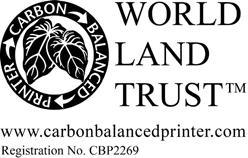

100% of the inks used are HP Indigo ElectroInk which complies with RoHS legislation and meets the chemical requirements of the Nordic Ecolabel (Nordic Swan) for printing companies, 95% of press chemicals are recycled for further use and, on average 99% of any waste associated with this production will be recycled and the remaining 1% used to generate energy.
The printer contributes to the World Land Trust’s ‘Conservation Coast’ project in Guatemala. This scheme supports many landowners and local communities to register and obtain their own land and thereby protect thousands of acres of threatened coastal forest. The local organisation FUNDAECO works with over 3000 families to help transform local livelihoods through job creation and ecotourism.
